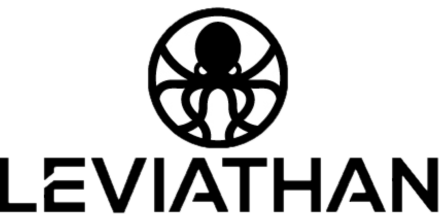
Sailing around the world
New tracker; click for current position
December 20, 2024
Back in the US, Back in the US, Back in the USVI
We left Guadeloupe and enjoyed a nice sail to St. Croix, the southernmost of the US Virgin Islands. Readers may recall that we spent some time there in the spring. We anchored at Frederiksted on the western end of the island. We were happy to see our friends Steve and Amy who have been living on the island and starting a plastic recycling business. They live on their catamaran Kaya. Cruise ships visit Frederiksted two or three times per week and stay for about 12 hours. As a result, there are numerous shopping and dining opportunities. One interesting fact about Frederiksted: the best diving on the island (and arguably in the entire Caribbean) is beneath the Frederiksted pier which extends nearly 500 meters offshore. The underwater residents include massive schools of tarpon, spotted eagle ray mantas, sea turtles, batfish, and innumerable species of colorful fish and coral. I was prepared to take many photos with my new GoPro, but the buttons do not seem to work at depth, and I will need to get an external housing from Amazon.
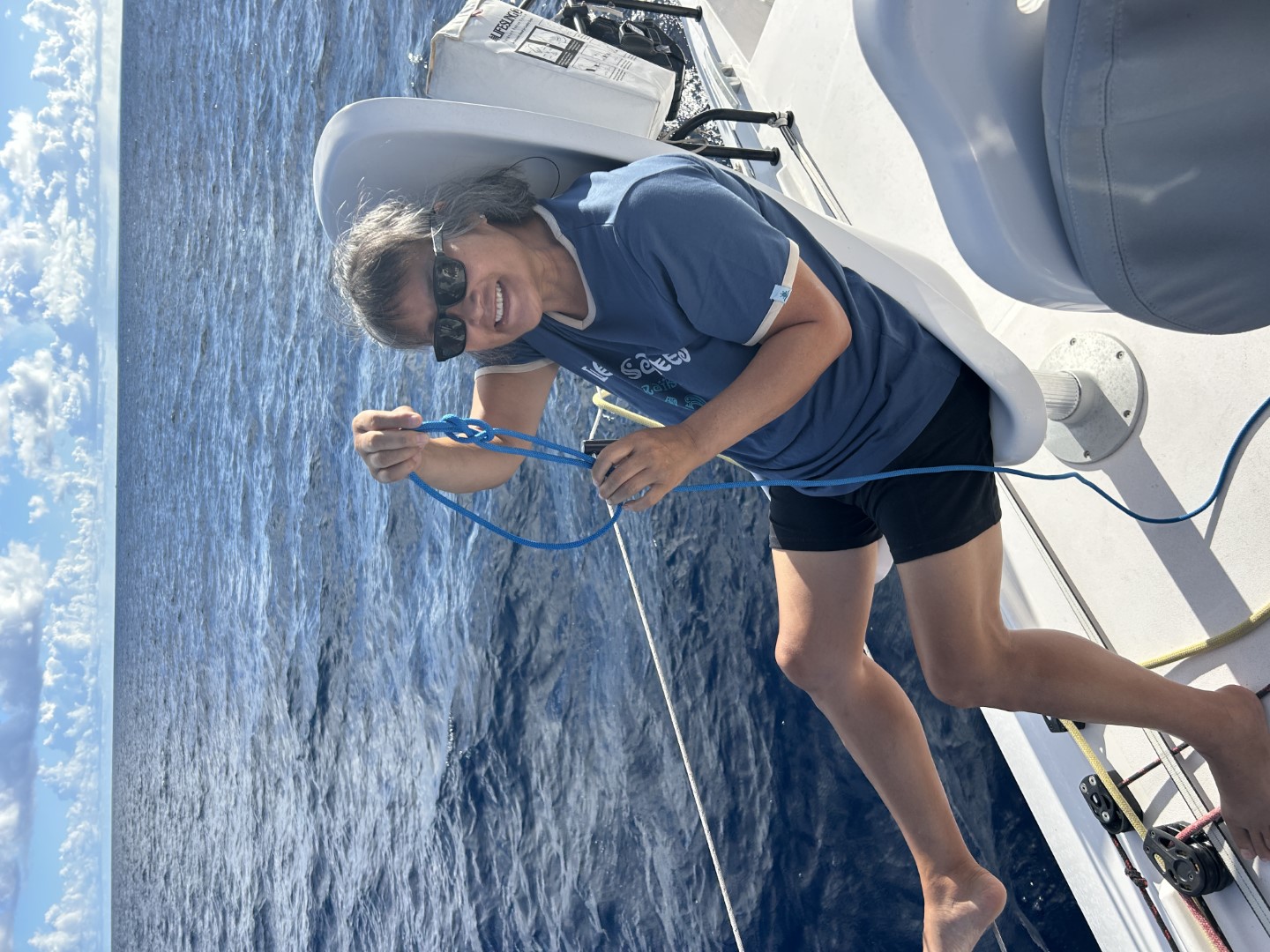
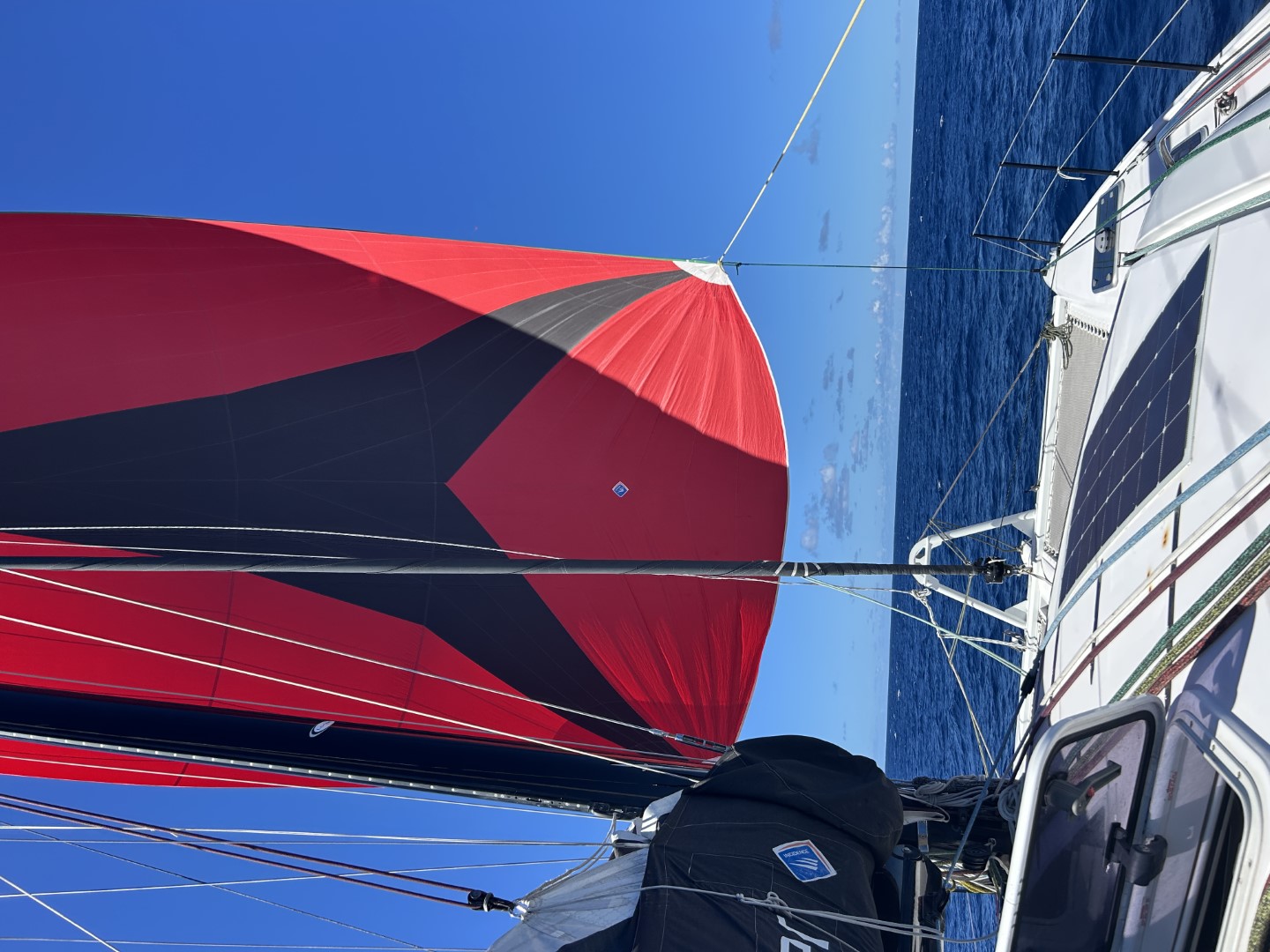
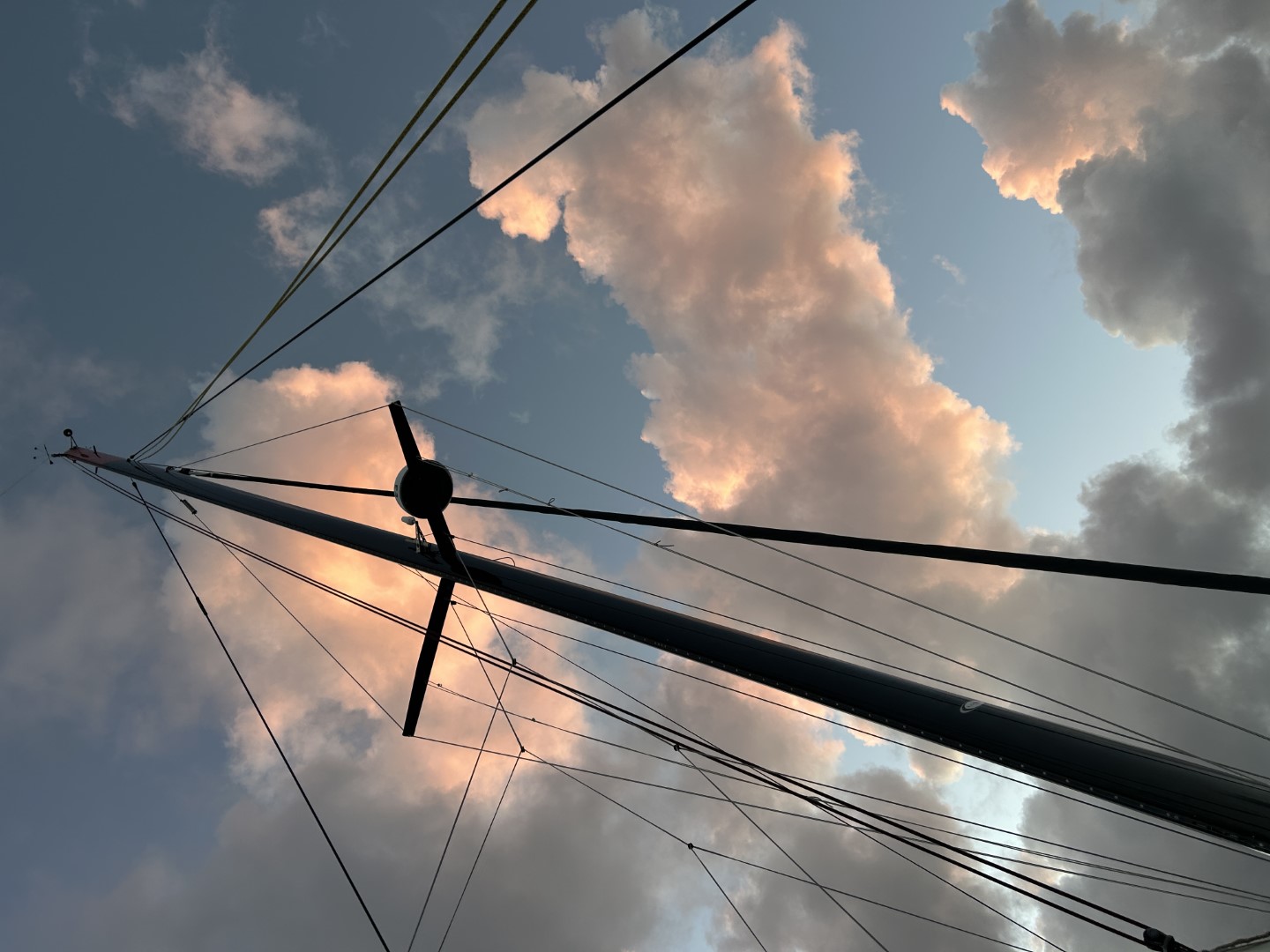
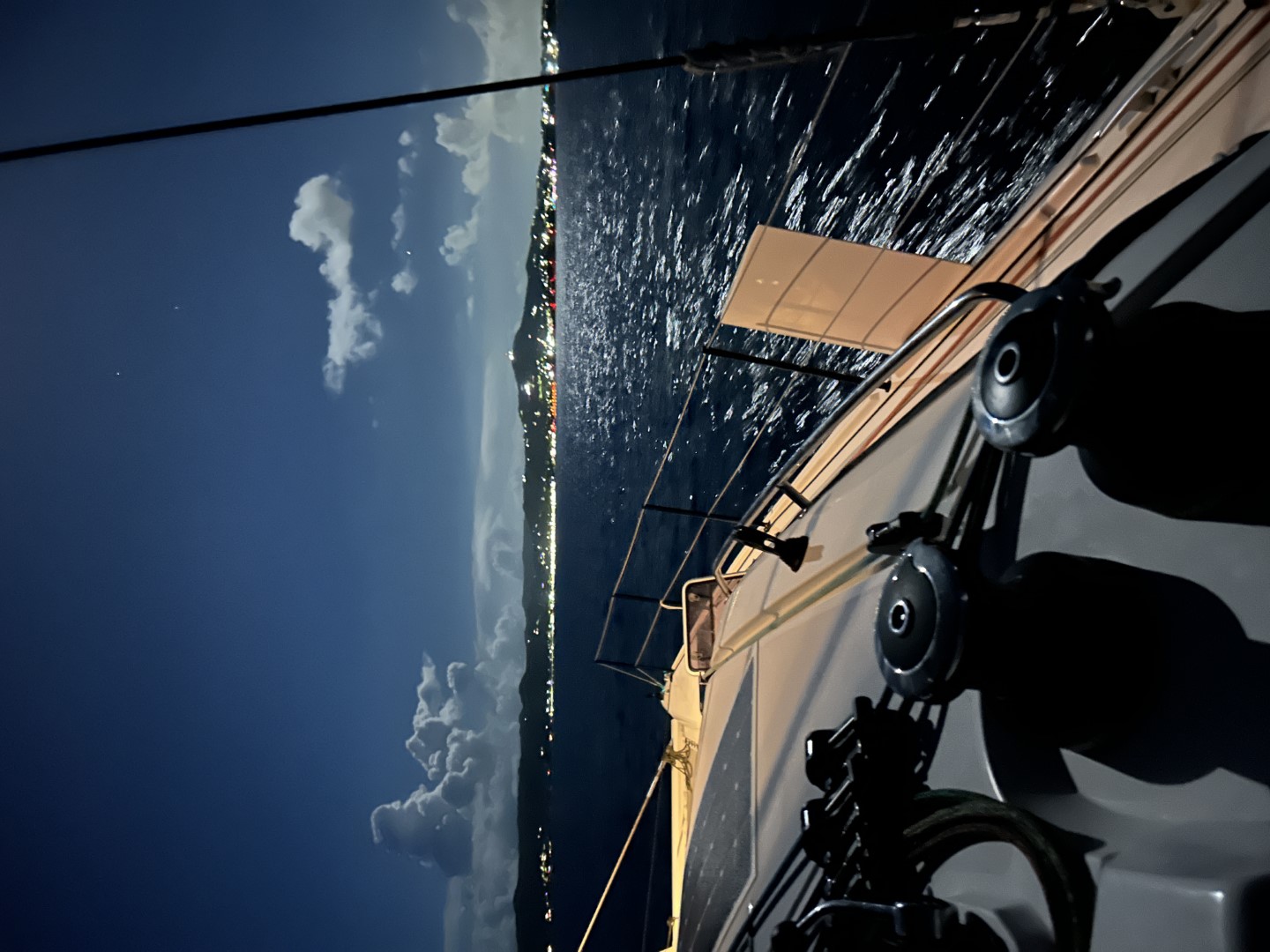
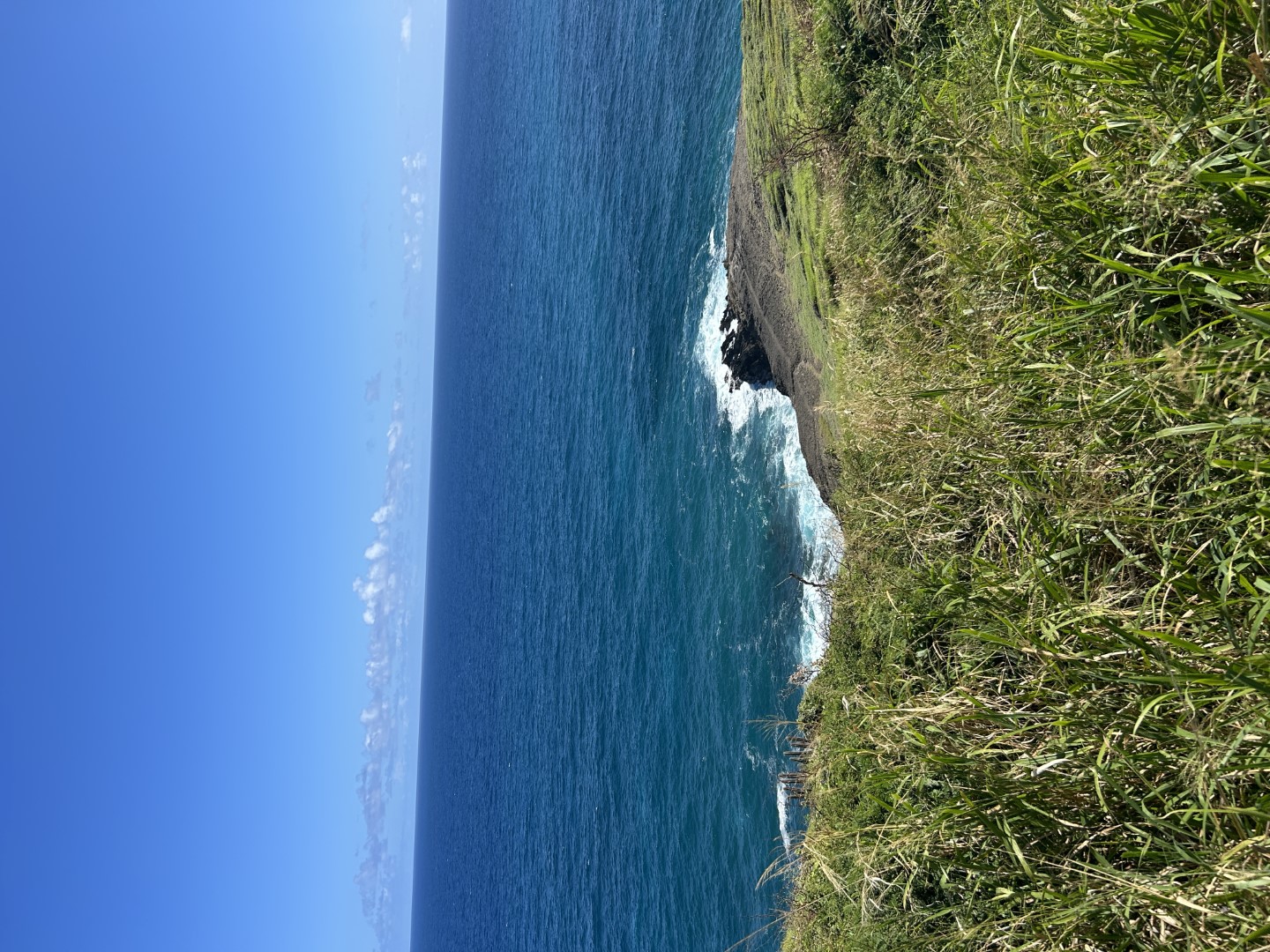
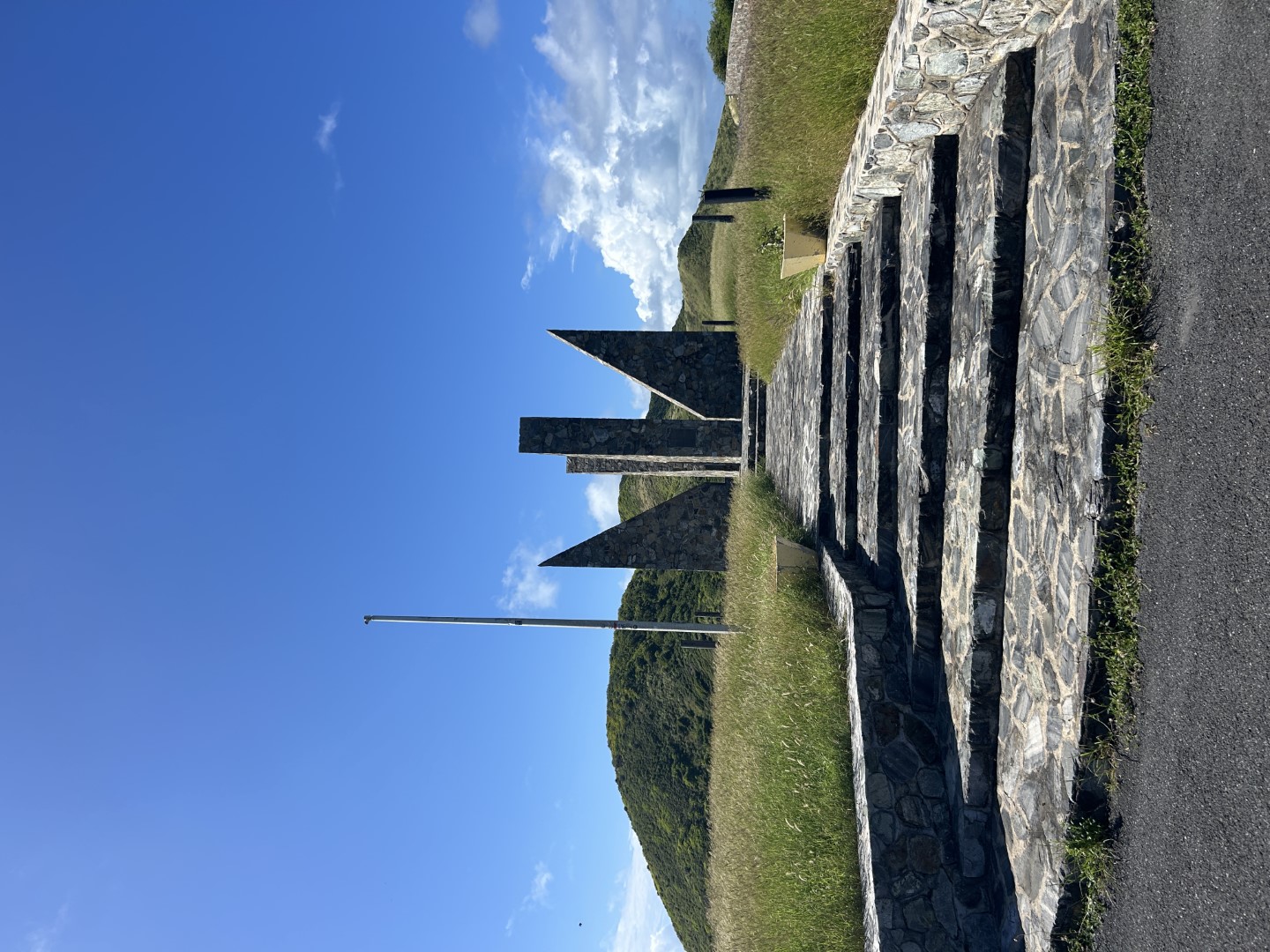
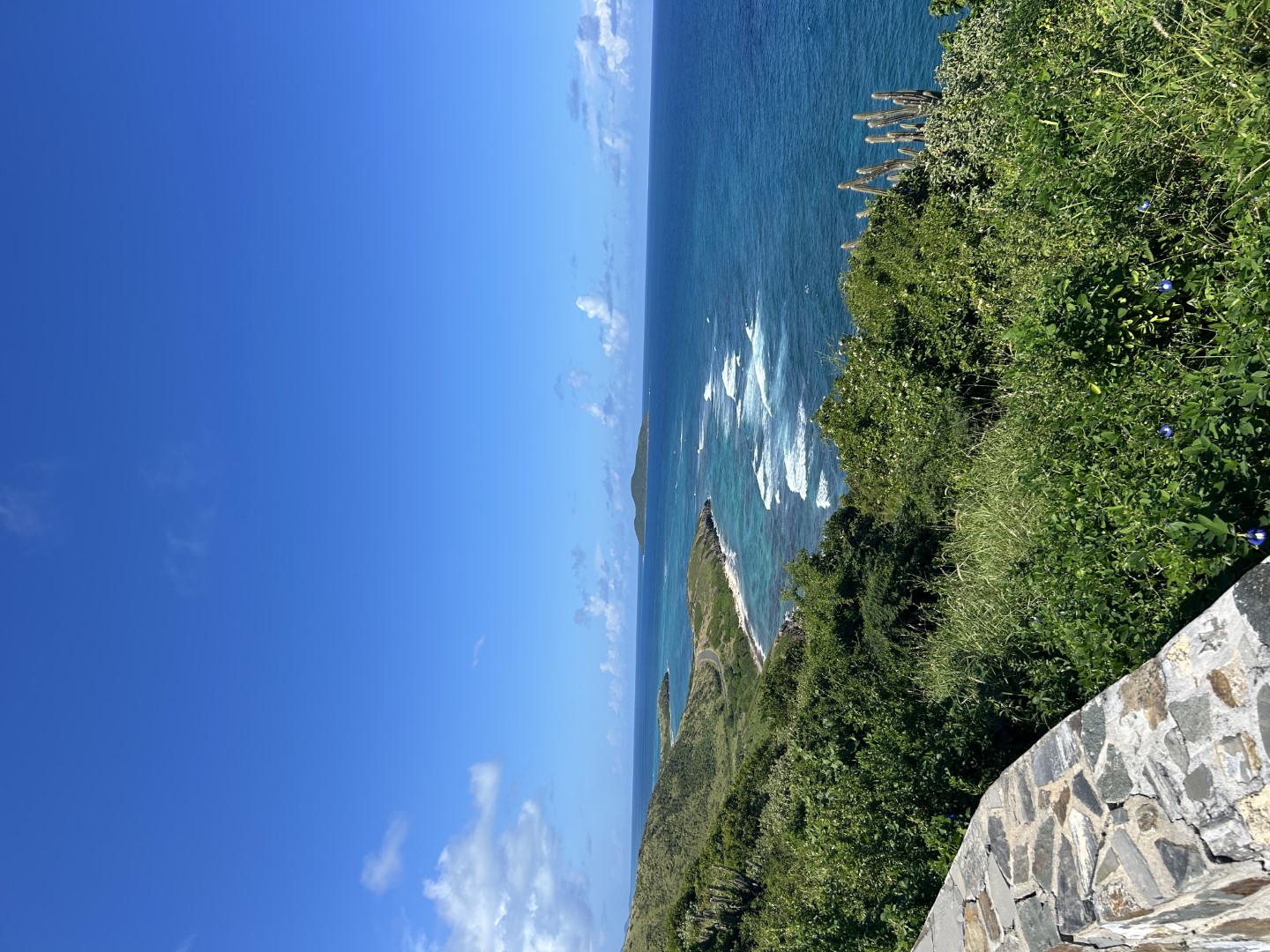
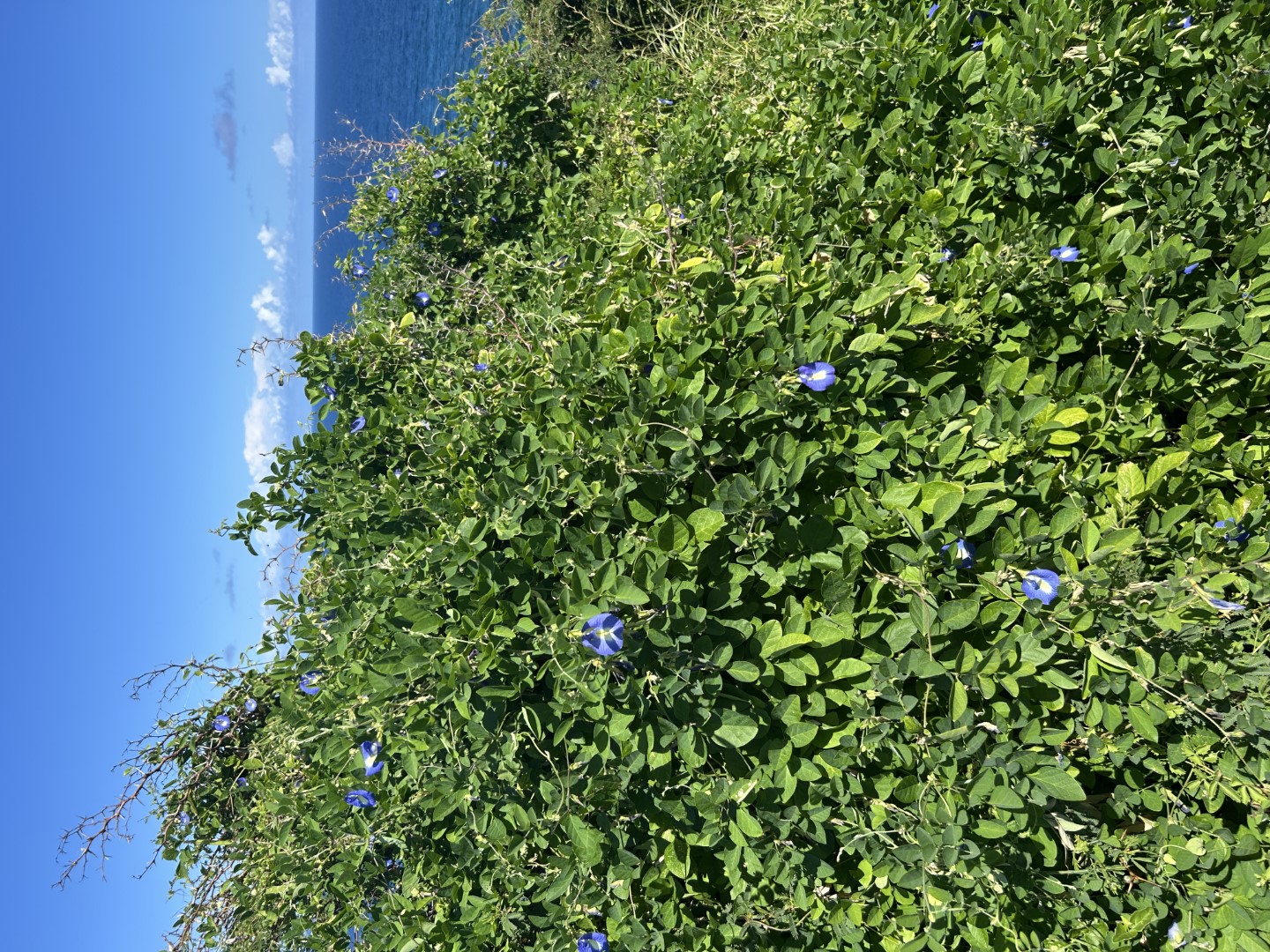
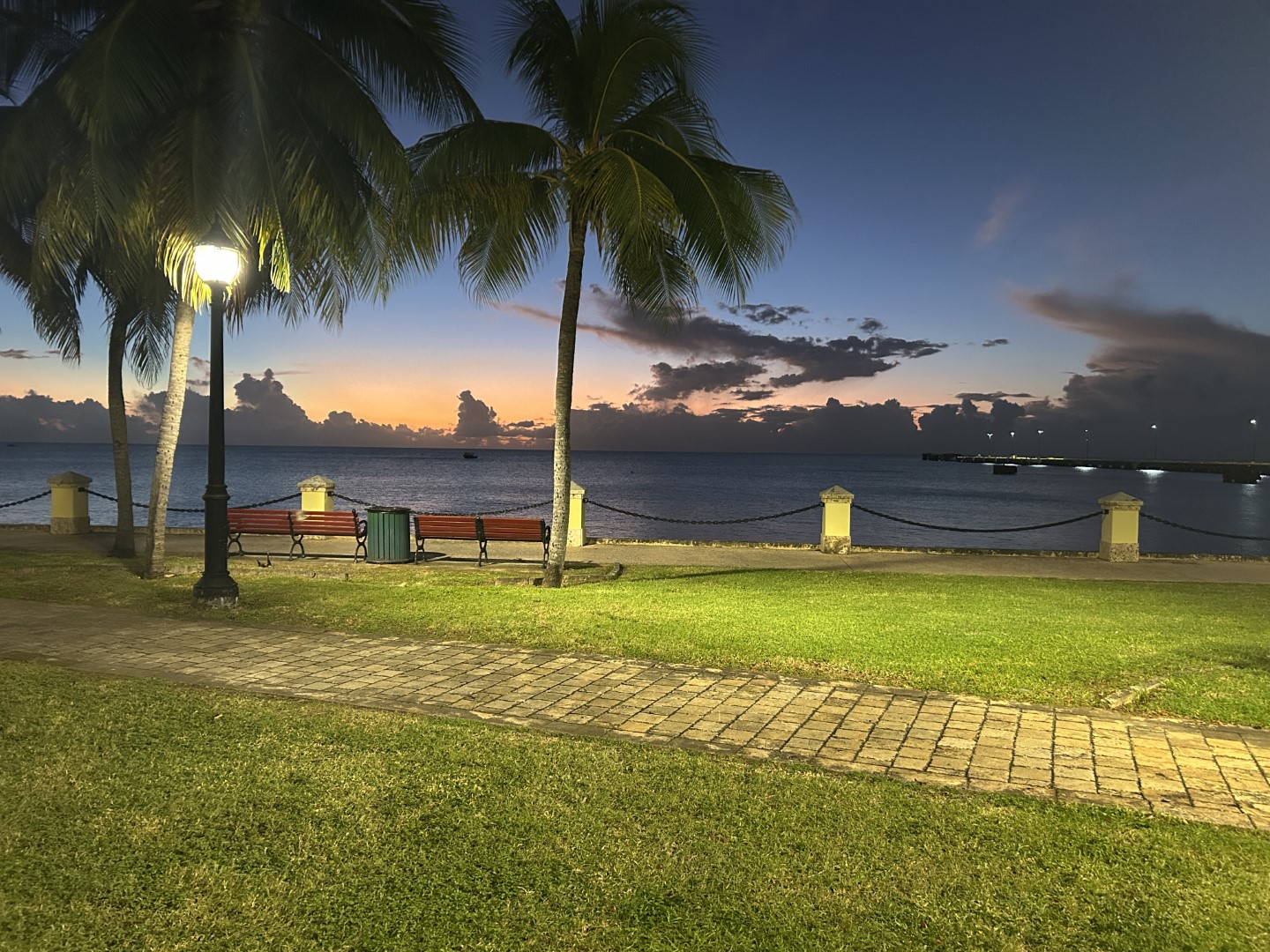
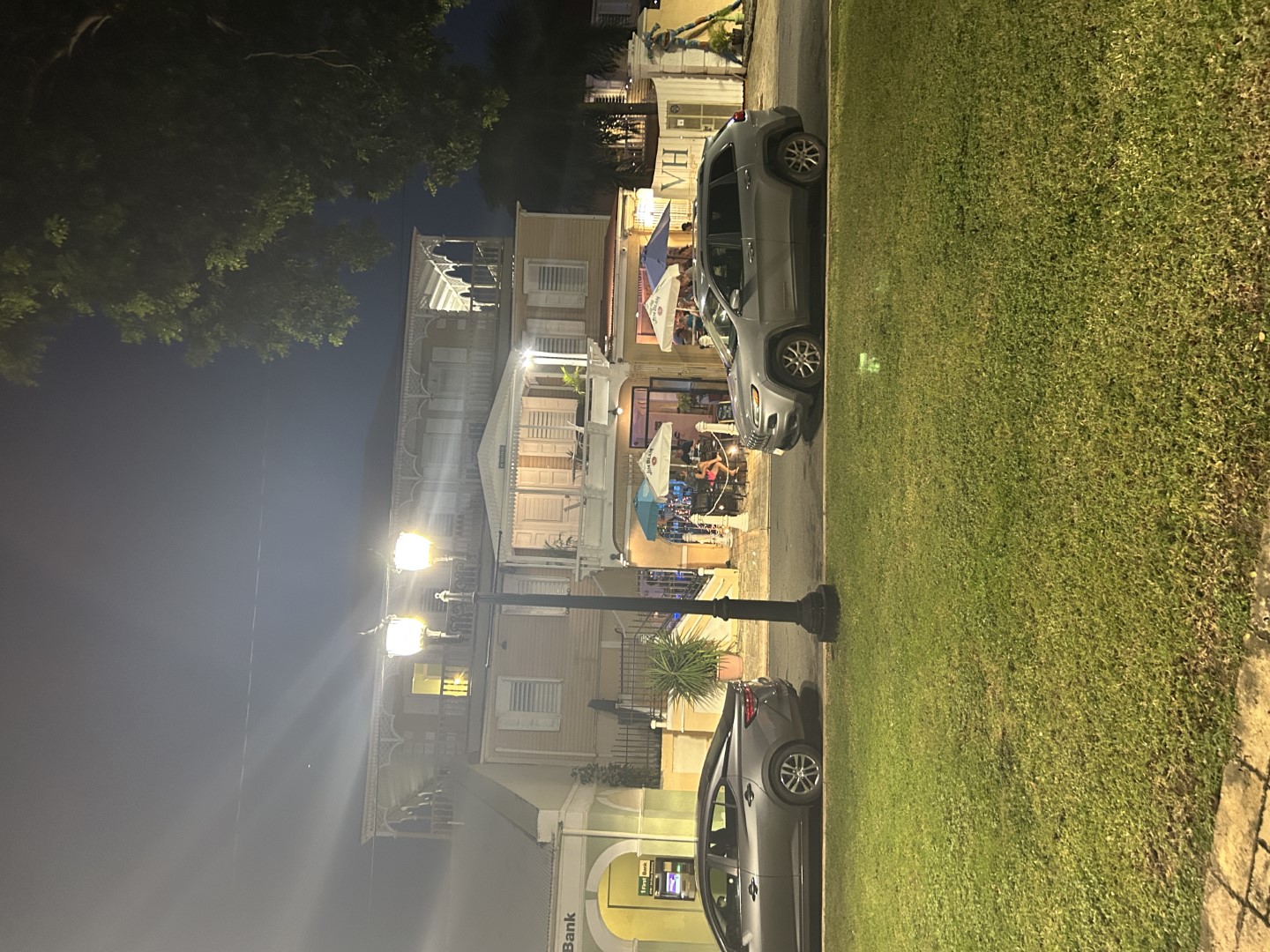
We really enjoy St. Croix. It is very laid back, and due to its distance (40 miles due south) from its USVI neighbors, it is lightly traveled. We shall return. But first, we are headed to St. Thomas where we plan to meet our daughter Samantha for the Christmas holidays.
December 14, 2024
Guadeloupe and Les Saintes
Guadeloupe is a French overseas department consisting of six inhabited islands. We have landed at the largest island which is shaped like a butterfly, and we have anchored at Malendure on the west coast. Check-in was completely online, relieving us from the burden of locating and visiting various government offices. Regarding our engine, we have determined that despite our best efforts, we still have significant vibration of the port engine when in gear. This is likely due to damage of some sort to the propulsion system (saildrive) of Leviathan sustained during our altercation with the fishing net. This will require technical assistance beyond our capabilities. After some digital searching and many phone calls, we have discovered that locating a spot for repairs in the Caribbean is quite difficult. Ultimately it appears that we will need to go to Martinique in February (this was the first available appointment!). Fortunately, we have a second engine and we are a sailboat.
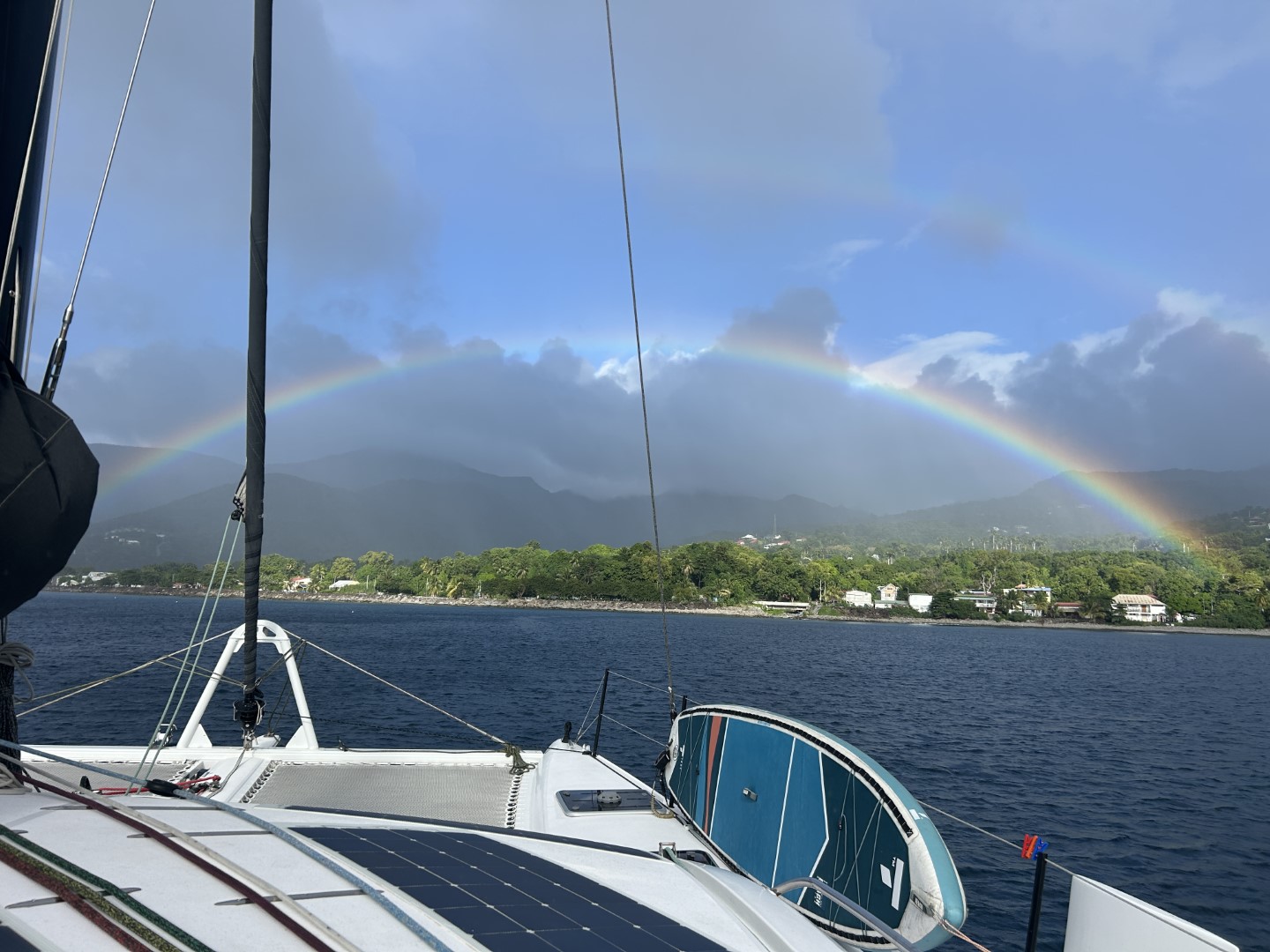
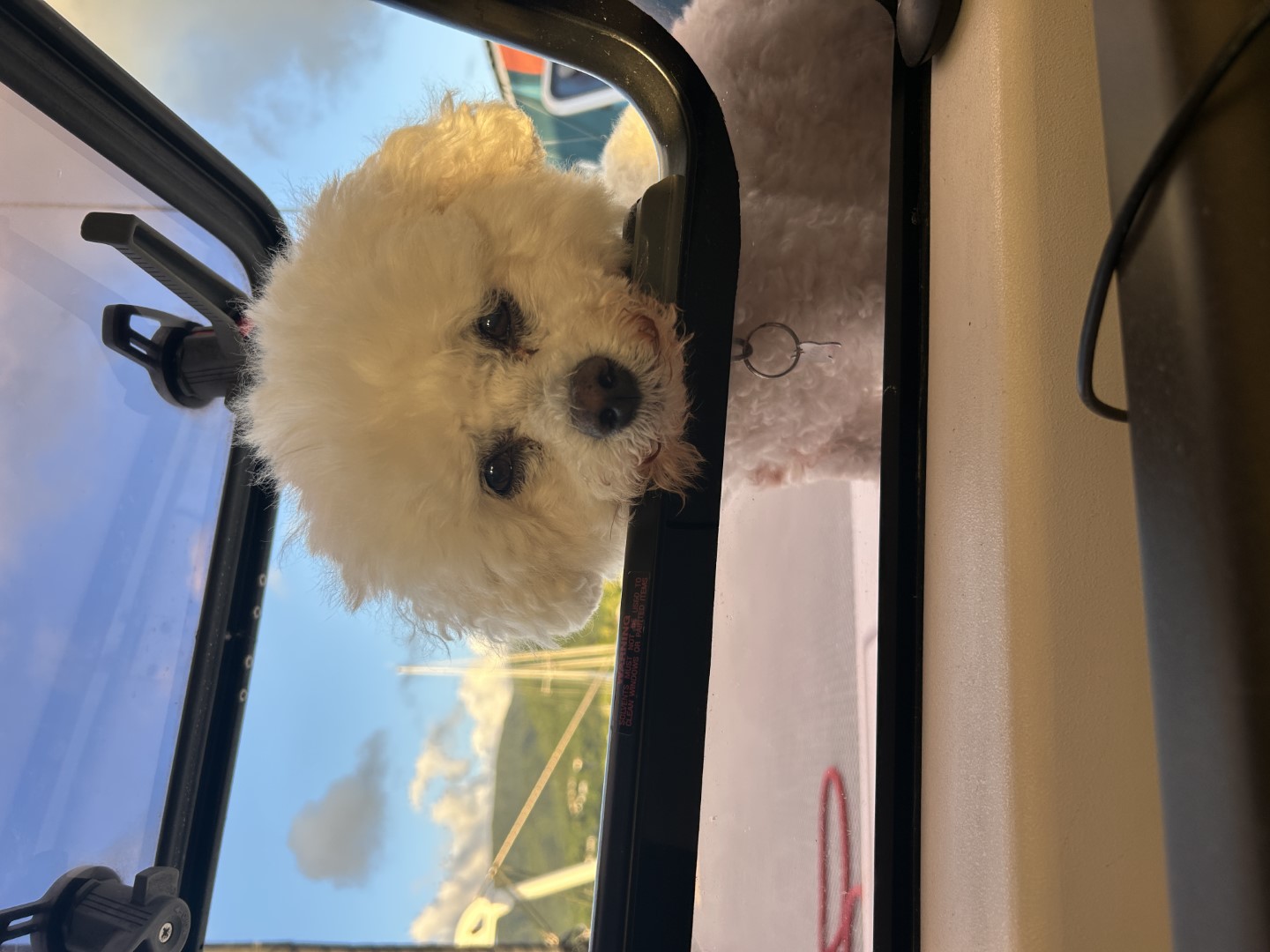
We spent our time here swimming in the crystal blue waters, snorkeling, and enjoying Friday pizza night and waffle Sunday on our buddy boat Nizhoni. Soon enough, we head south to Les Saintes, a trio of picturesque islands also belonging to Guadeloupe. We tie up to a mooring ball in the bay which is rated third most beautiful in the Caribbean. The local town is quaint and packed with shops, bakeries (France, duh), and restaurants. The island is packed with tourists who arrive by small cruise ship or plane. None of the tourists are from the US. I don’t know anyone who has vacationed in Guadeloupe, but I highly recommend it. There are no cars, so we get around by golf cart, touring the entire main island.
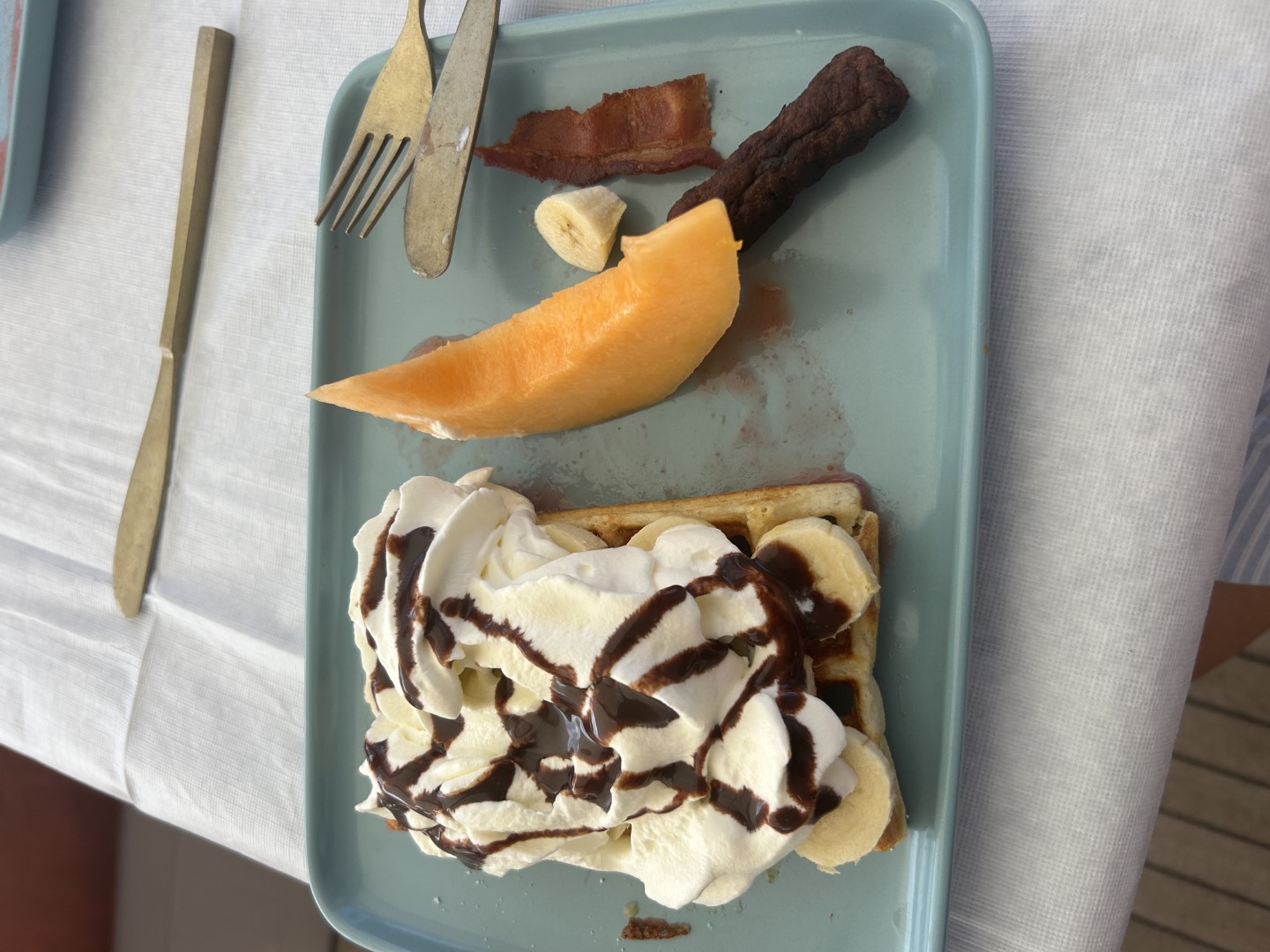
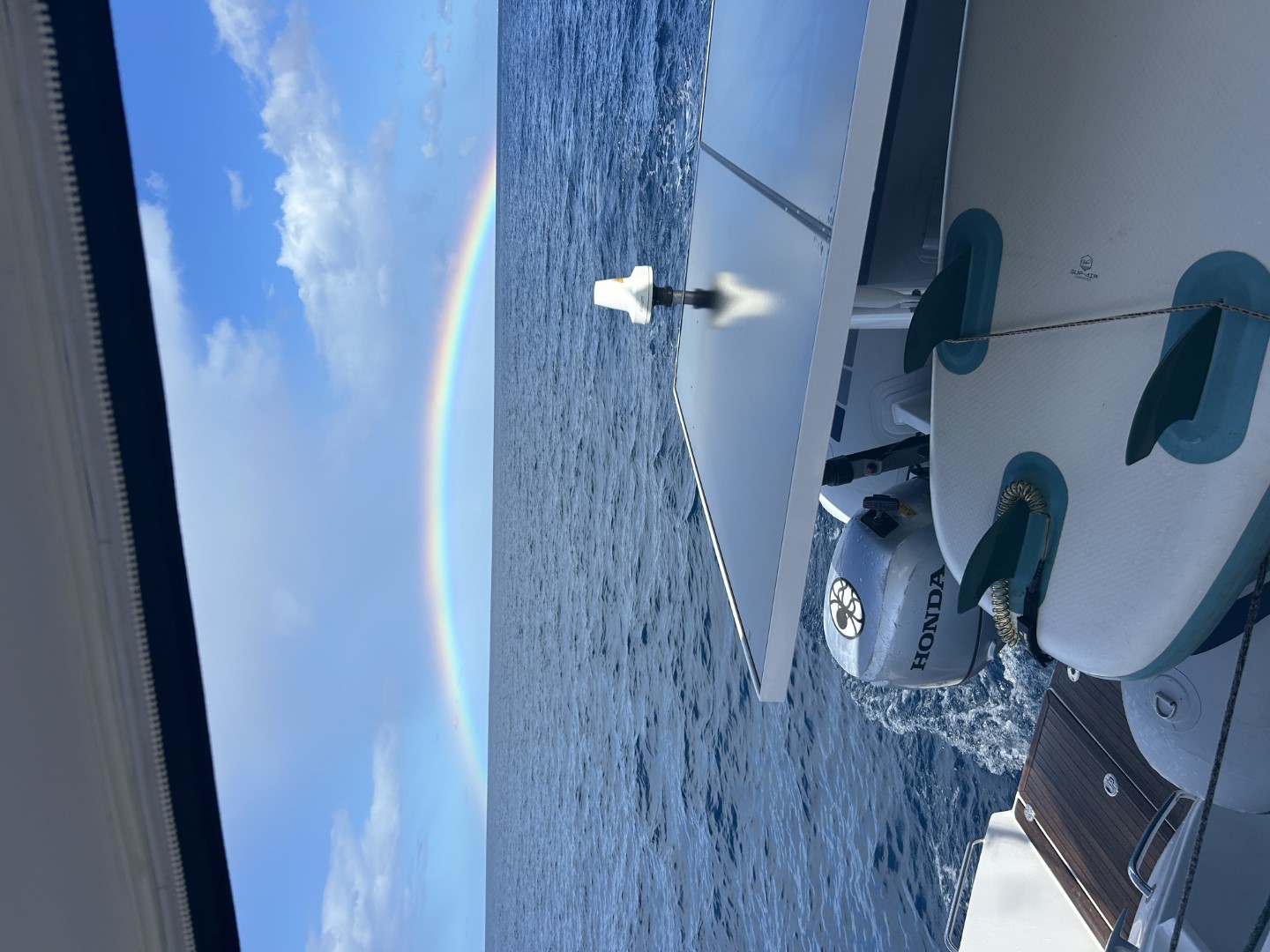
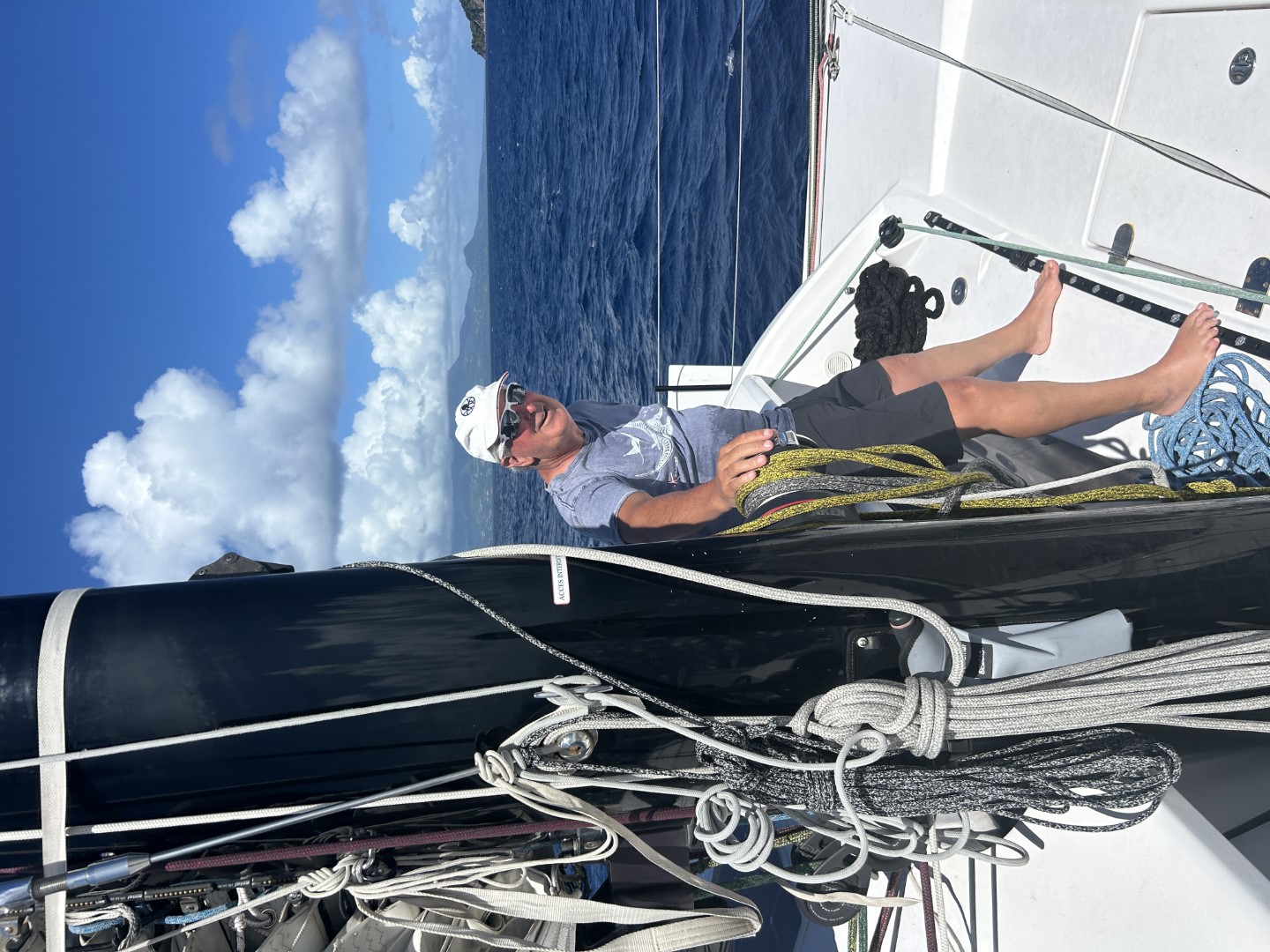

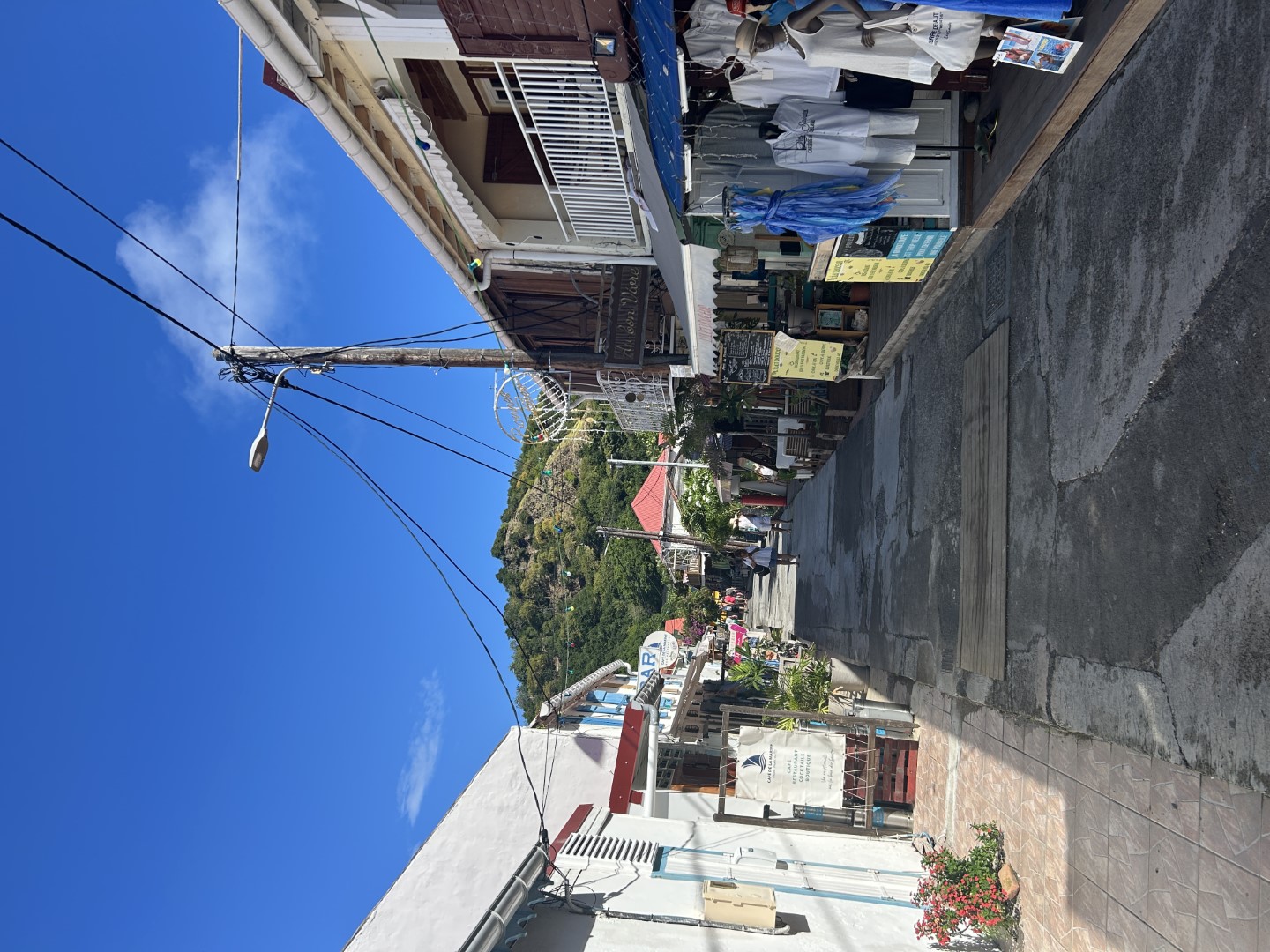
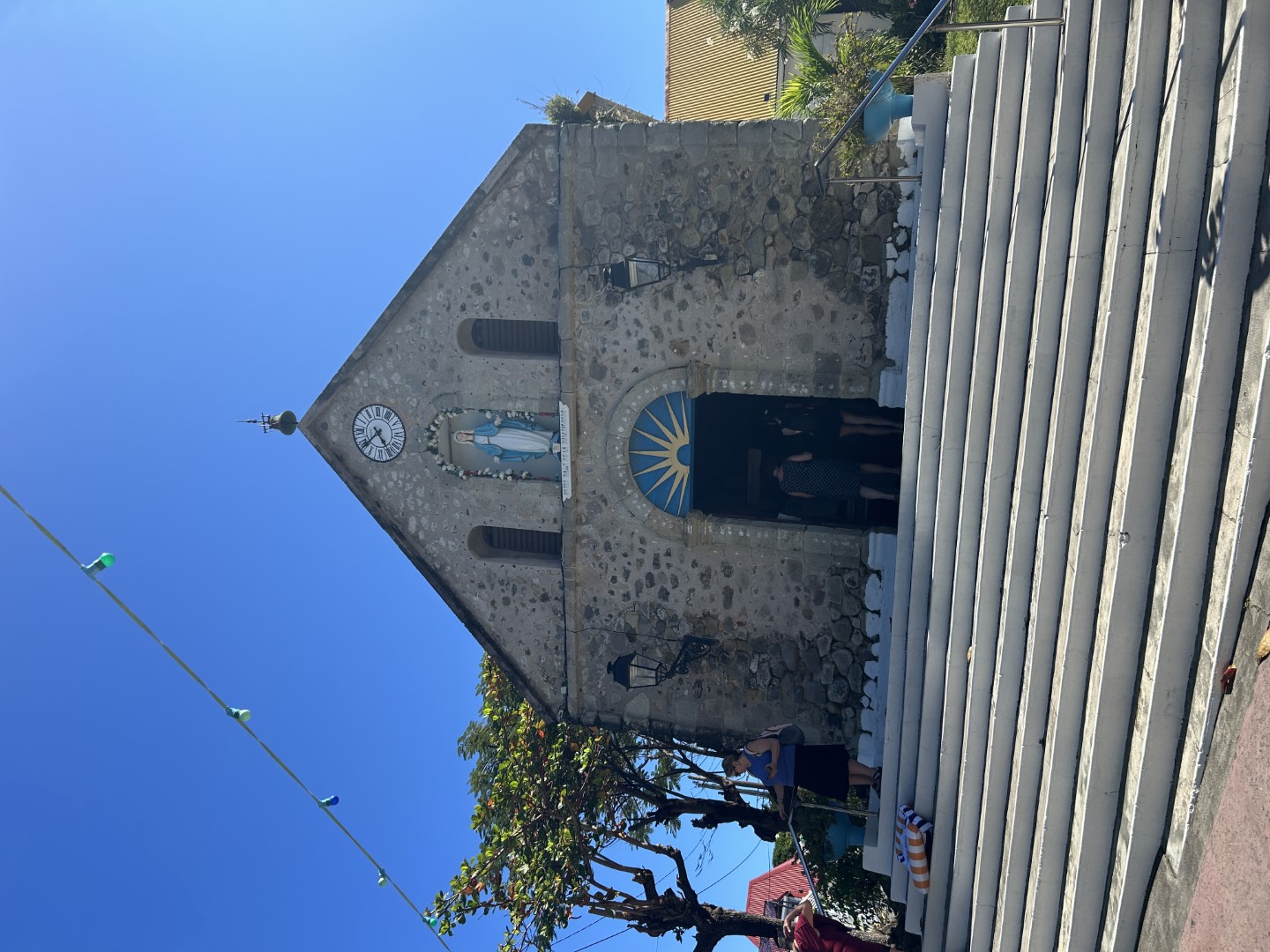
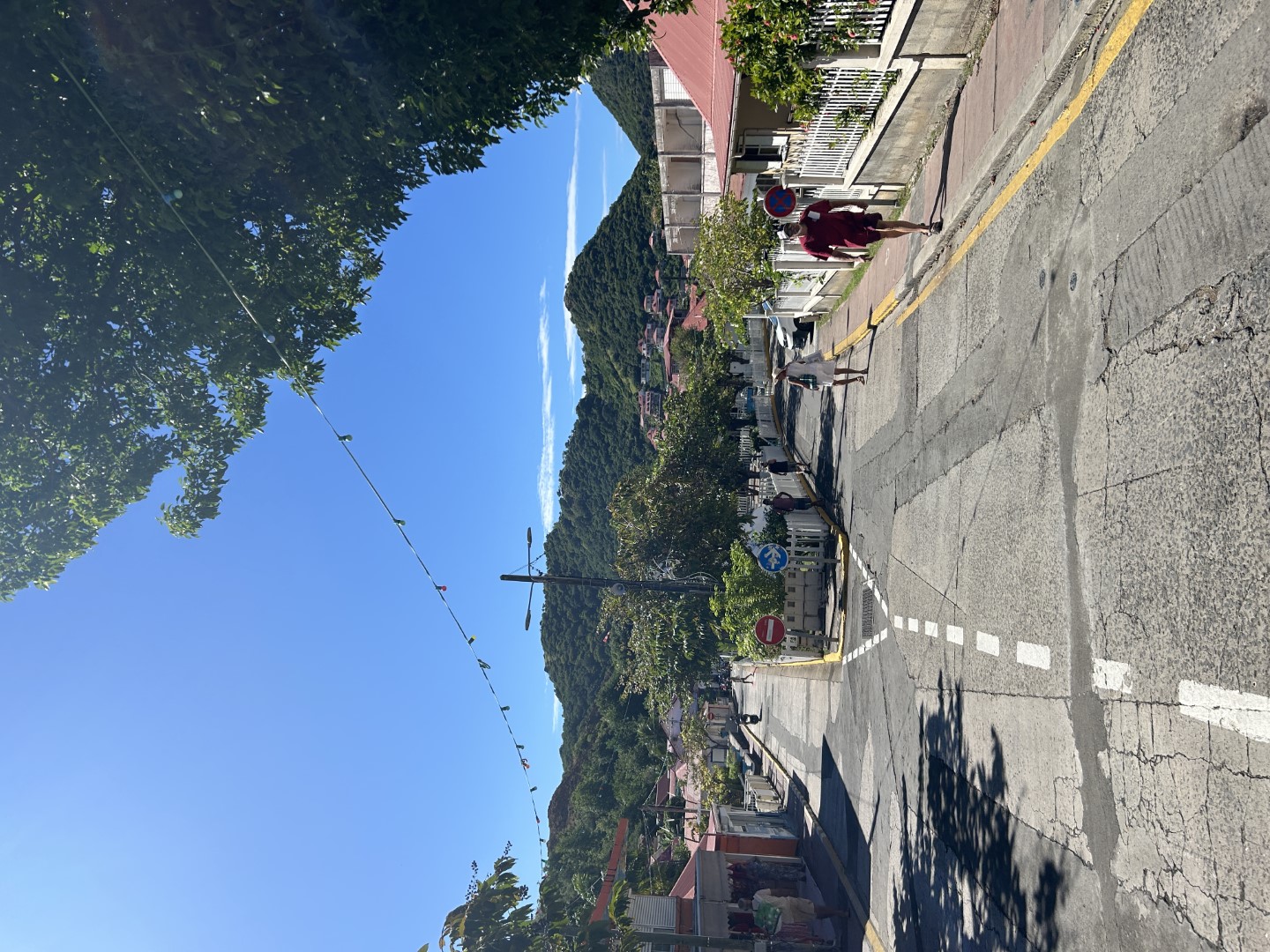
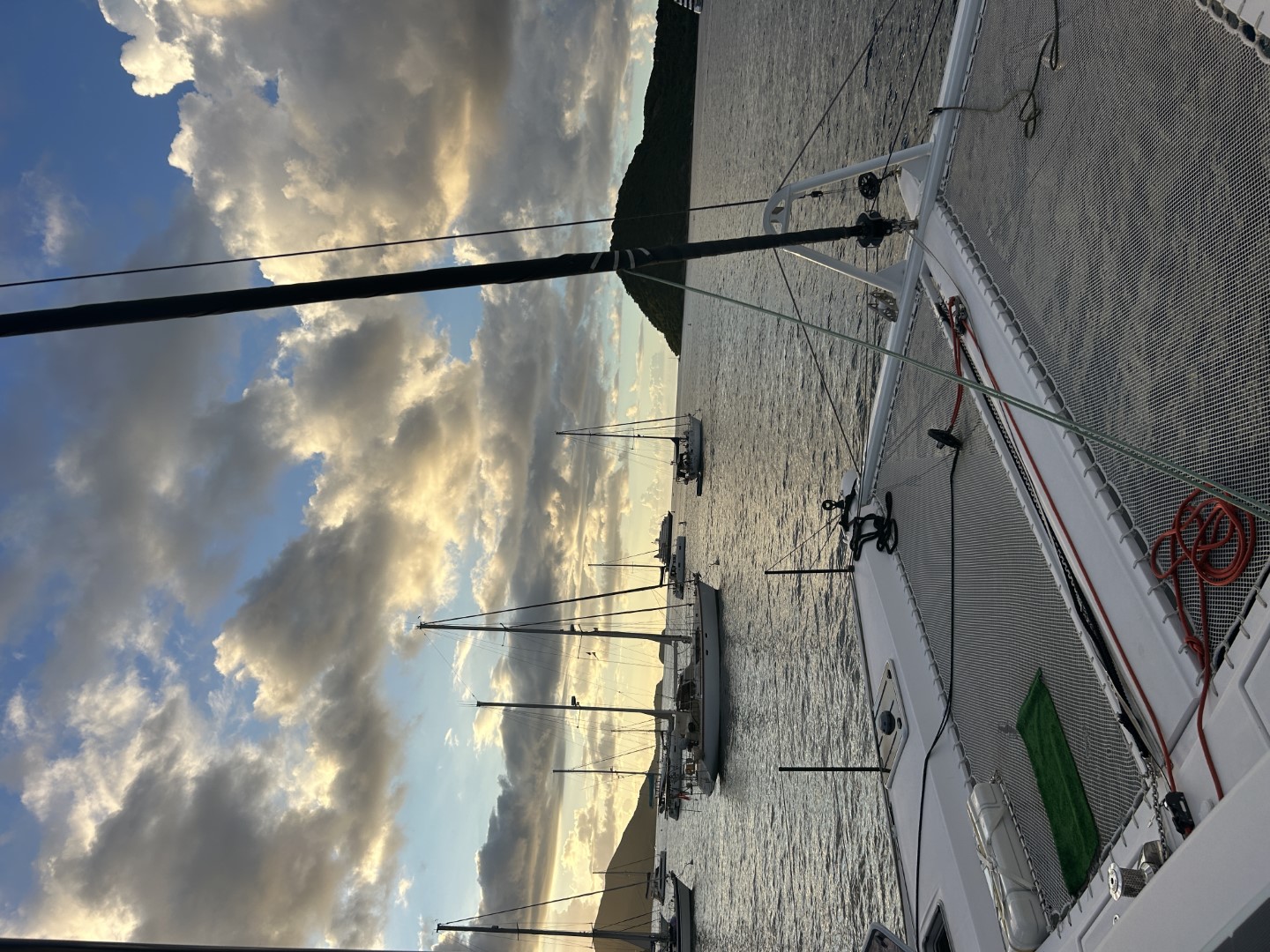
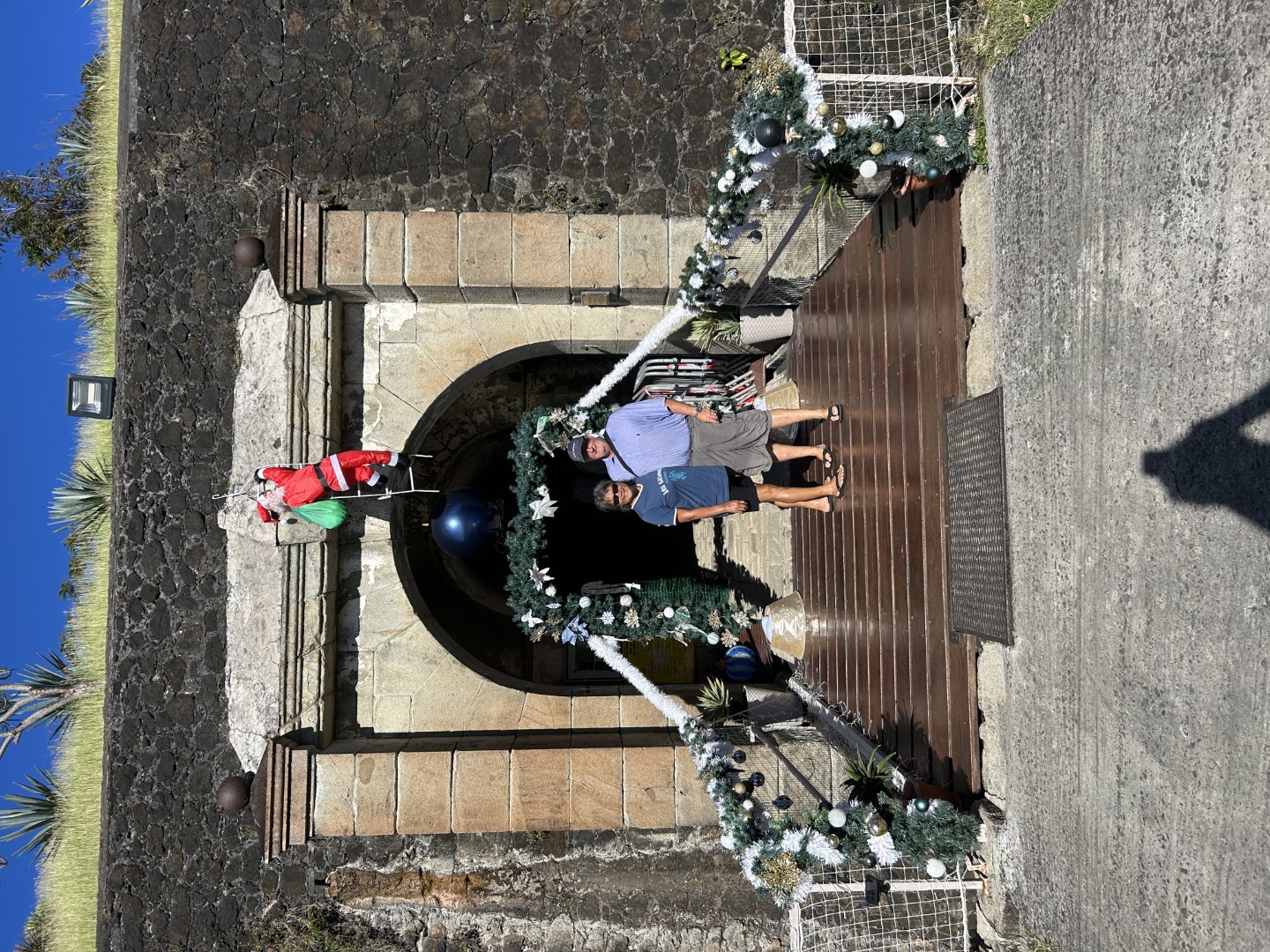
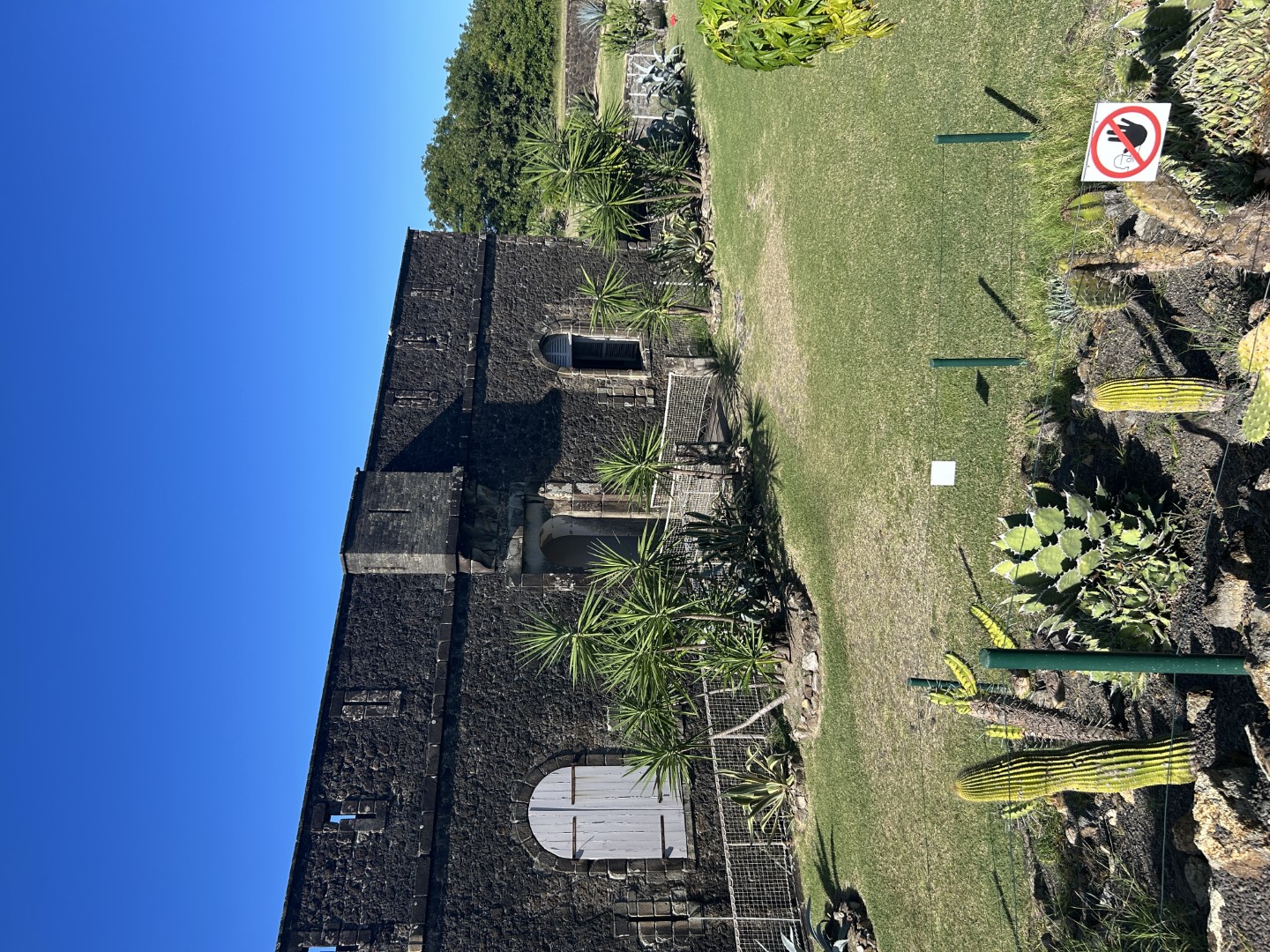

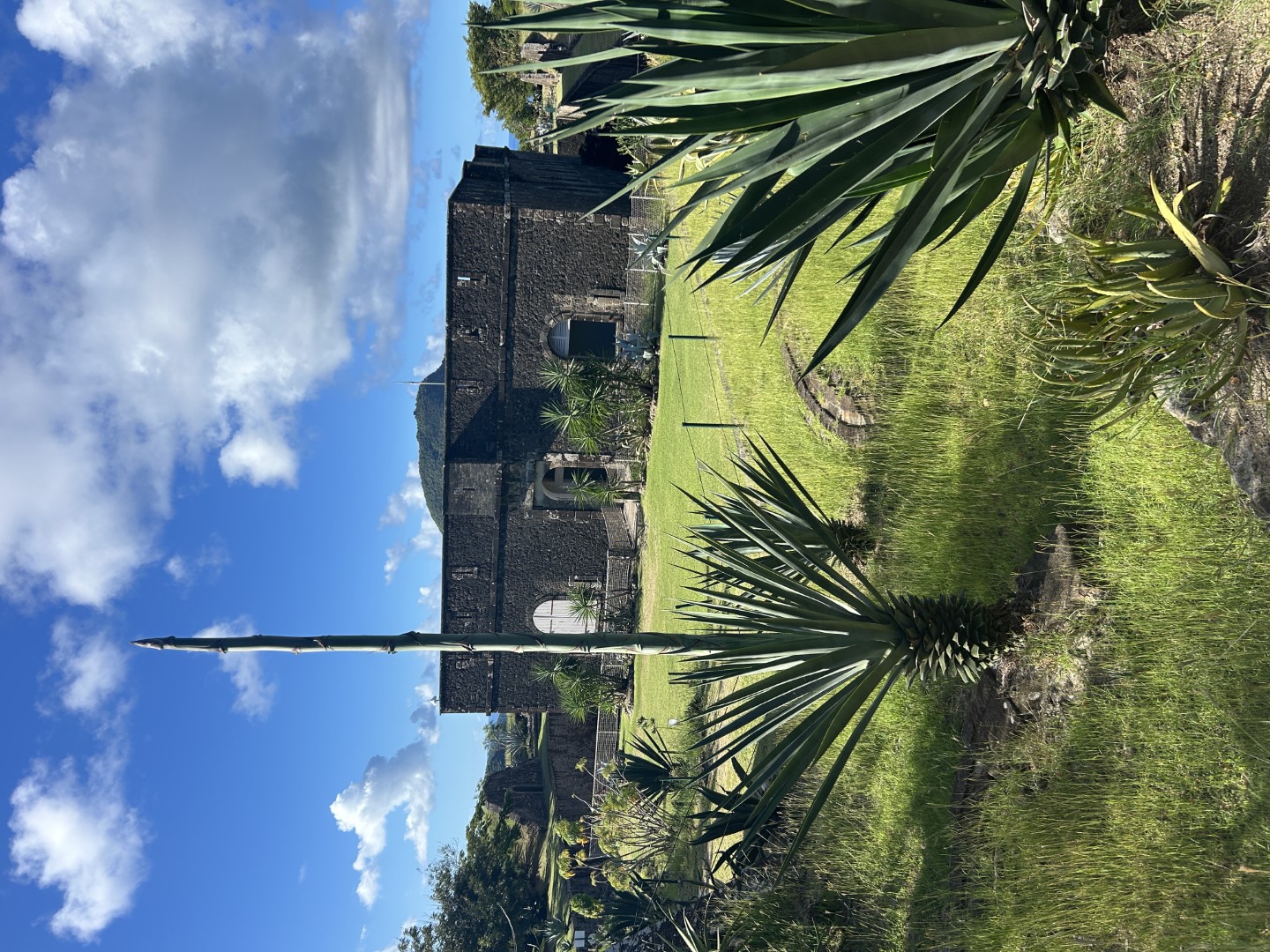

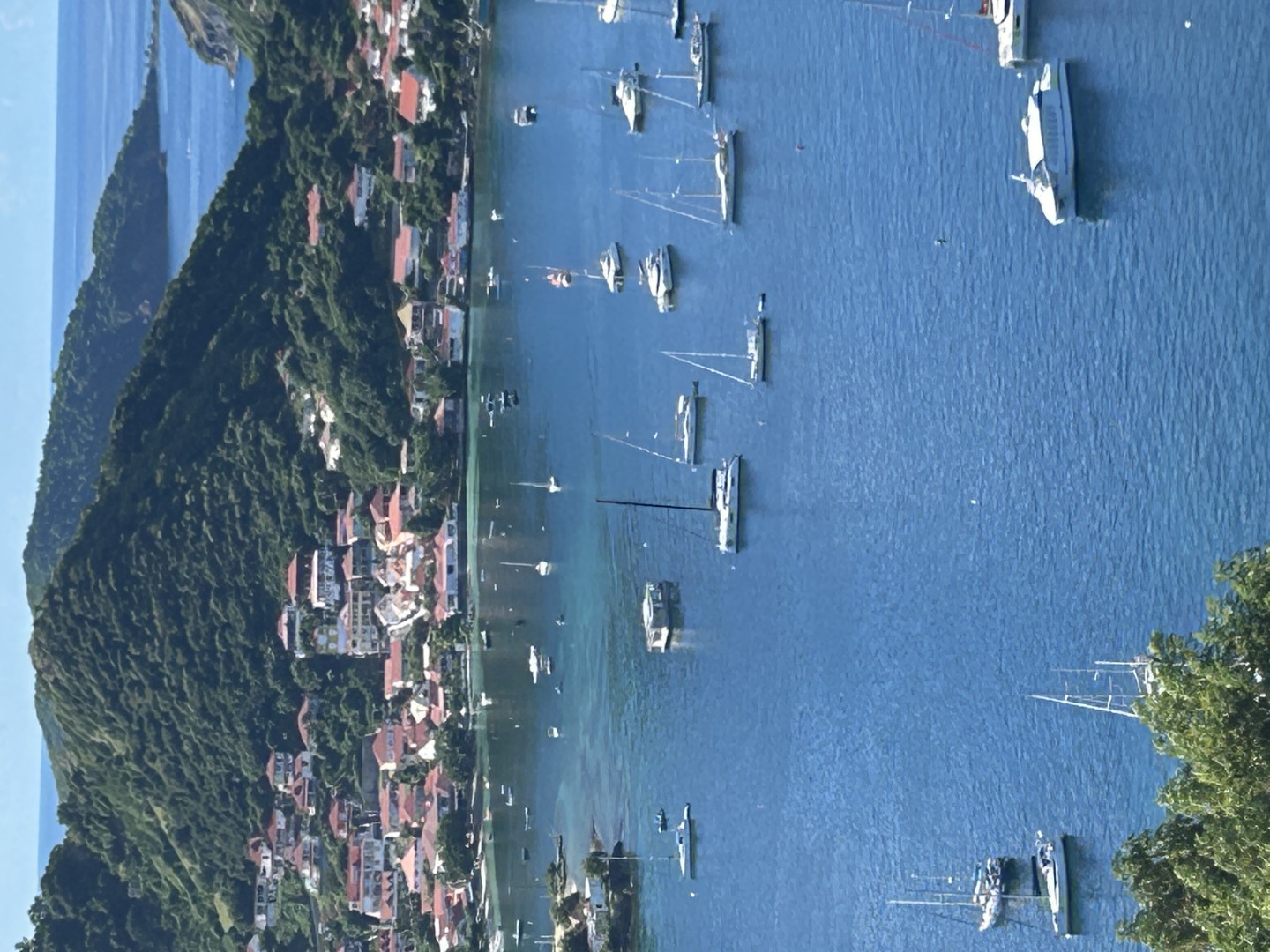
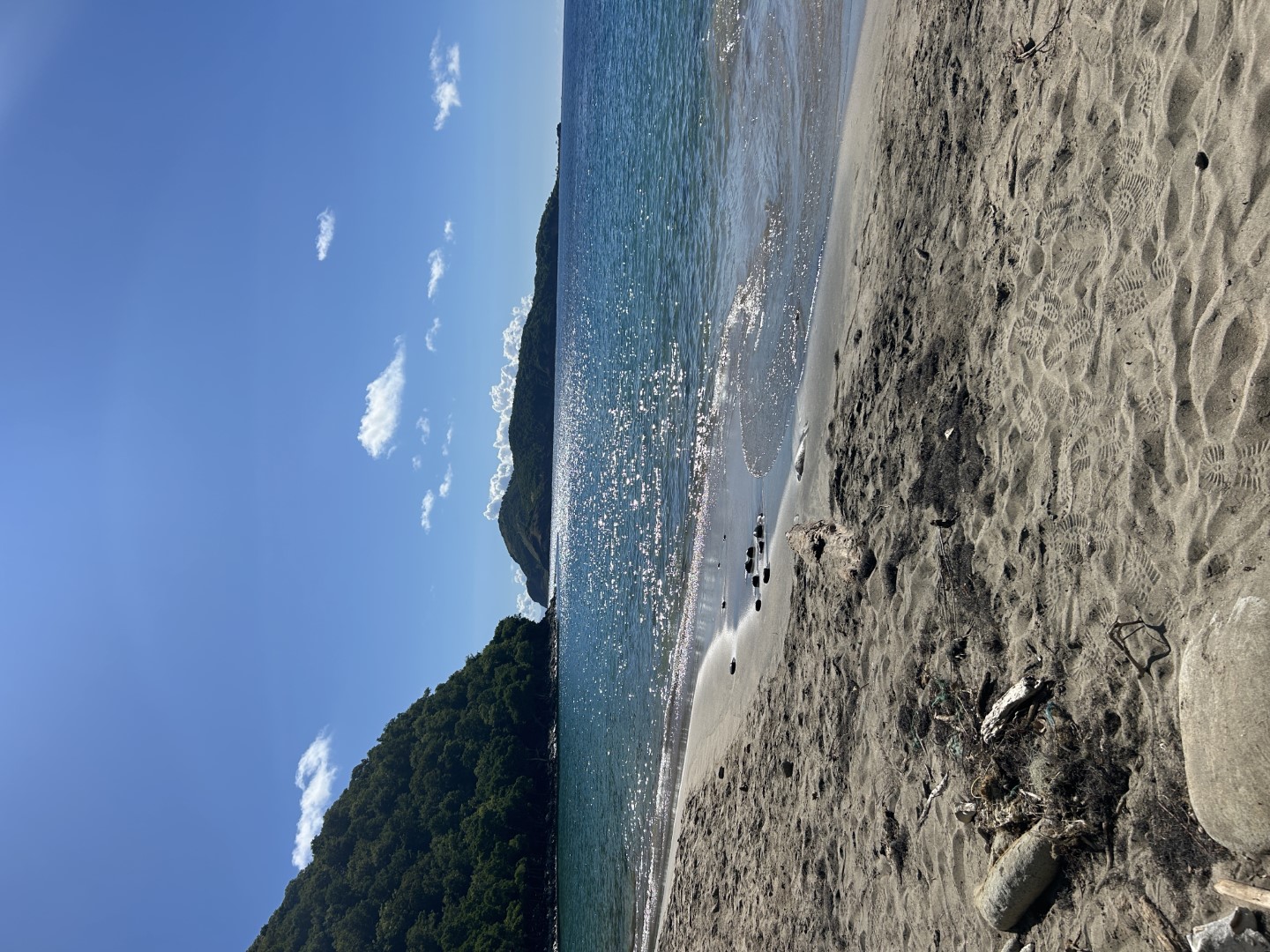
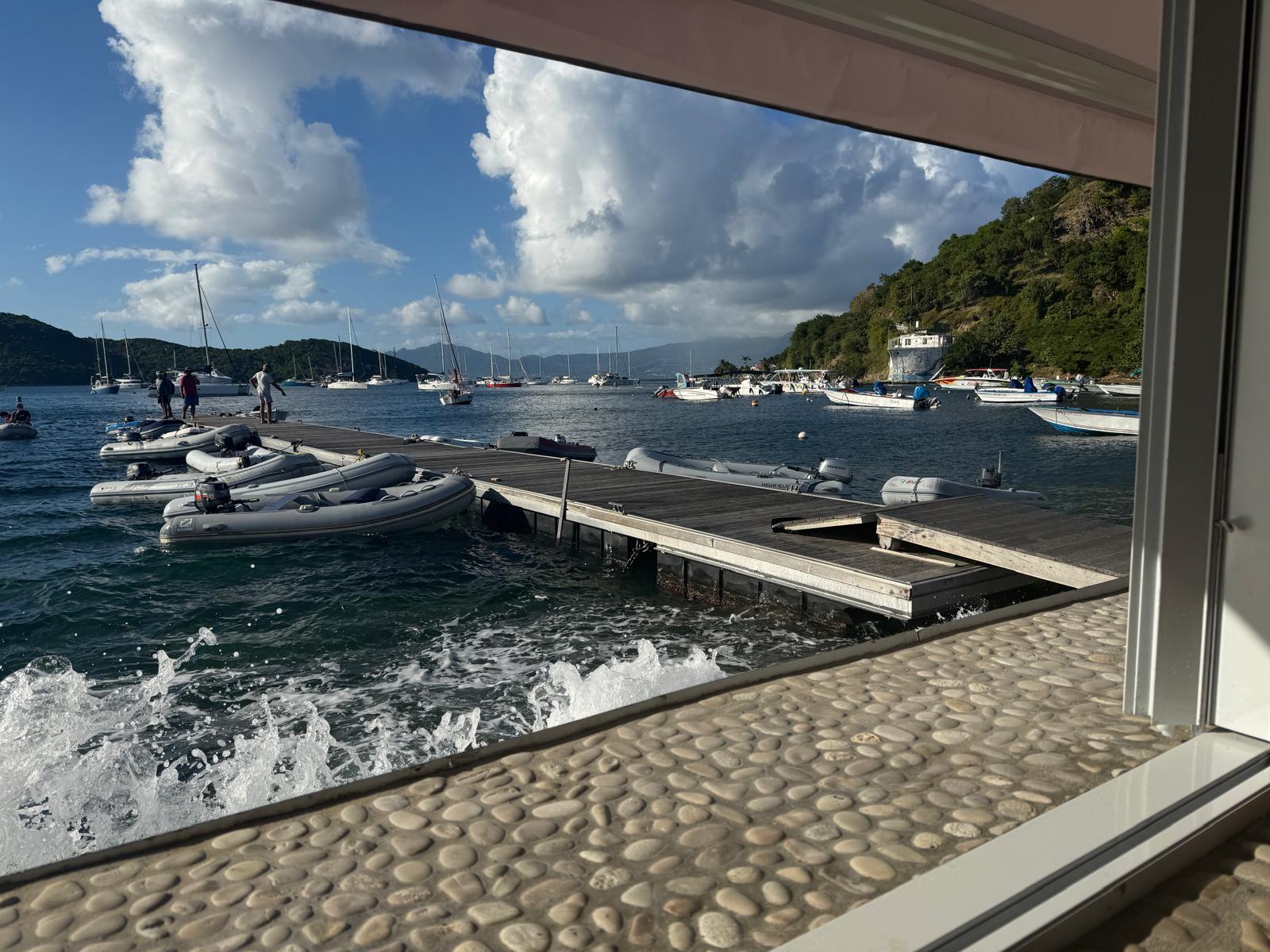
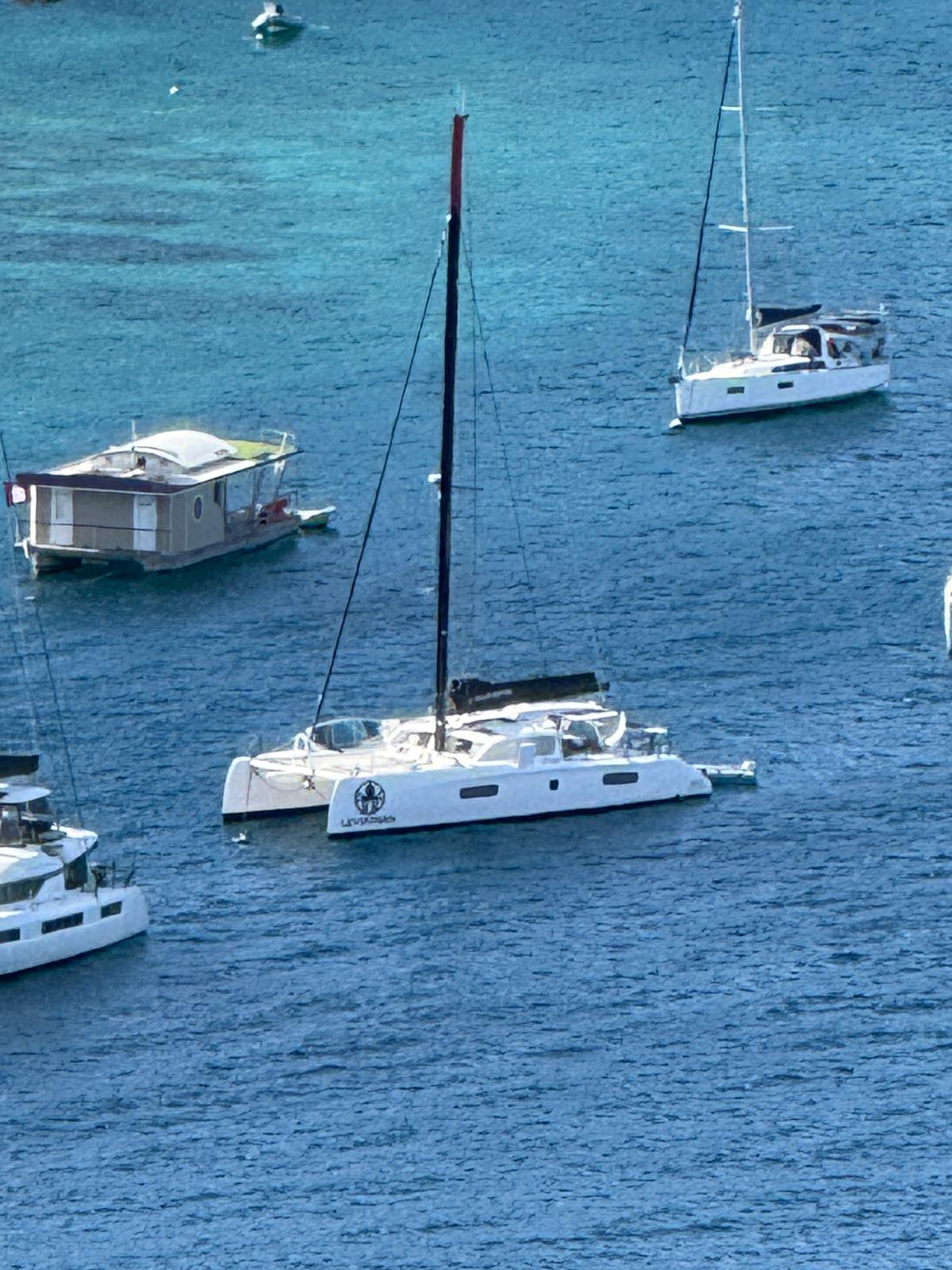
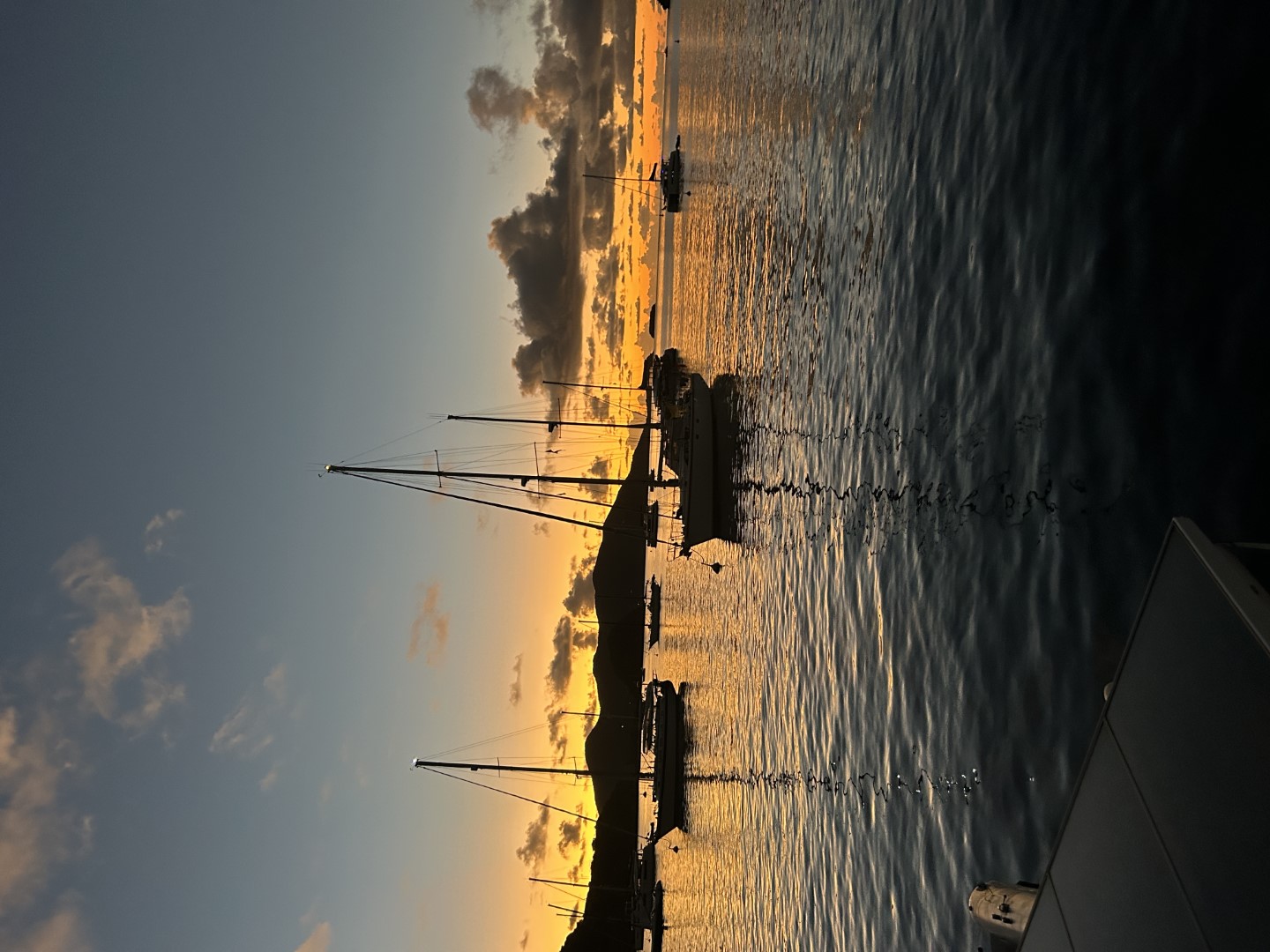
Our next stop is the U.S. Virgin Islands for Christmas.
December 5, 2024
Bruised but not Broken
You may have heard of the trade winds. These are consistent breezes that generally blow from the east (but sometimes from the northeast or southeast) in the Caribbean. You may also recall that sailboats cannot sail directly into the wind; they must tack at angles to the headwind and bash through the opposing wavetrains. Most cruisers will try to avoid ever sailing upwind; downwind sailing is much more comfortable. Despite a favorable forecast, we faced stiff southeasterly winds as we made our way southeast towards Guadeloupe. As a result, we experienced a very bumpy voyage. Once we were within visual range of our destination, we turned on one engine to motorsail the remaining distance. We promptly ran over a huge unmarked fishing net which wrapped around our port propeller and broke our steering cable which connects our wheel to the rudder. We cut the engine and assessed our situation. The skipper needed to jump in the inky blue to cut us free from the clutches of misfortune. Despite the wild pitching of the boat in the rough sea conditions, we were able to hack away most of the detritus. The prop was still fouled, but at least we were free. We found that we were still able to steer using our auxiliary tiller and autopilot. We took down our sails and motored using the starboard engine, keeping an eagle eye out for other booby traps. Ultimately, we limped into our planned anchorage shortly after dusk. We dropped our hook and finally relaxed after our very slow 150nm passage to Guadeloupe.
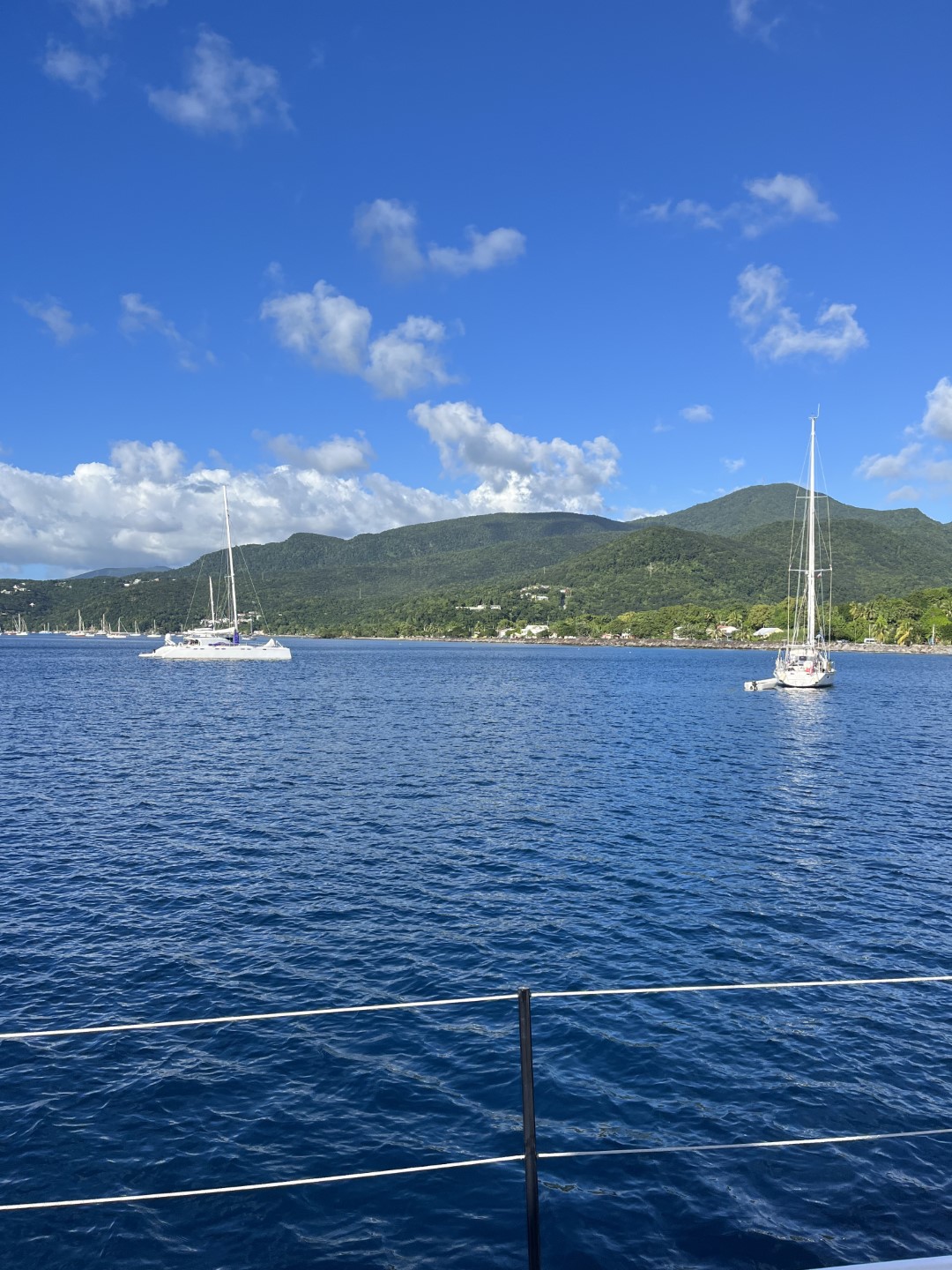
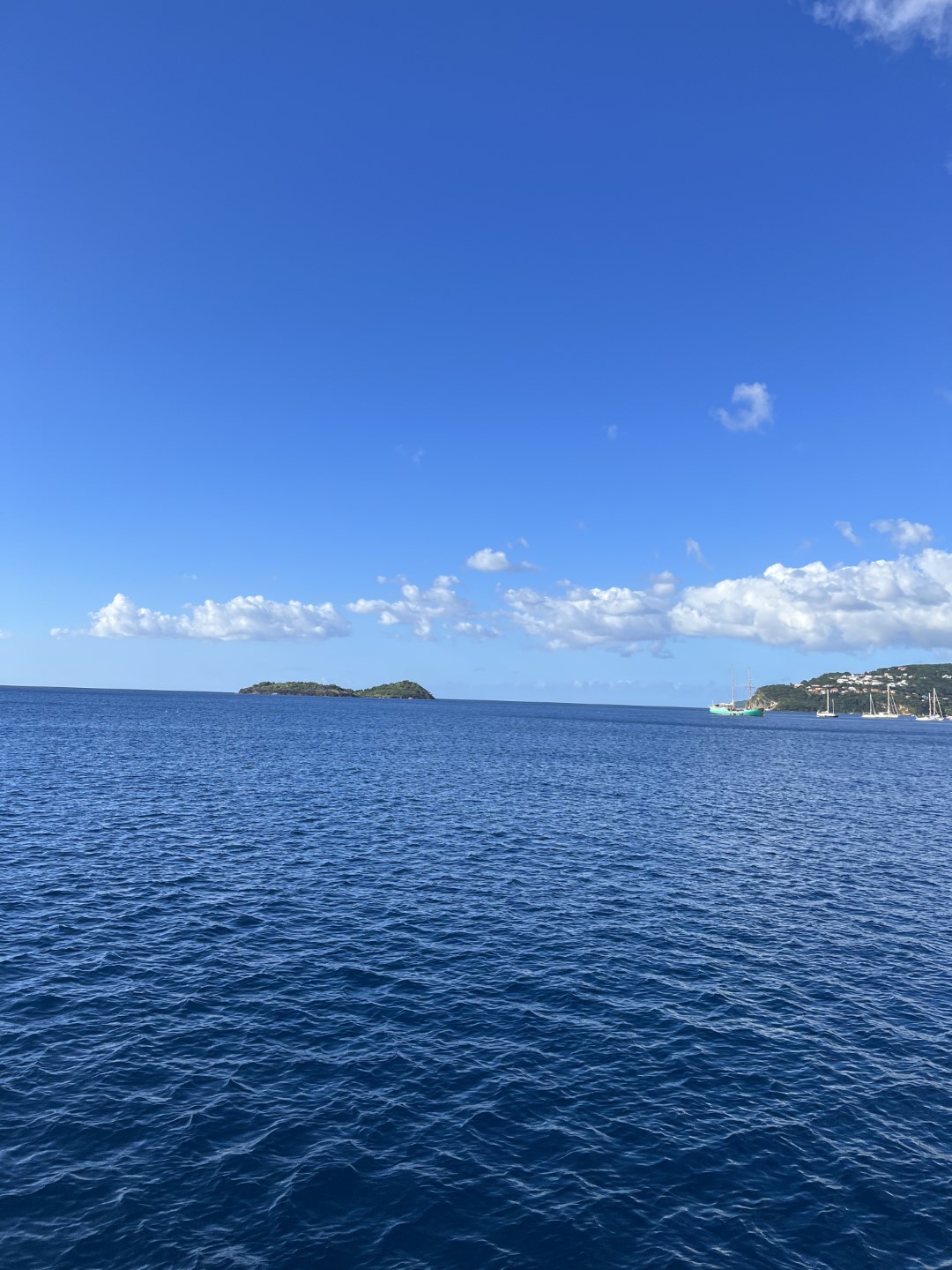
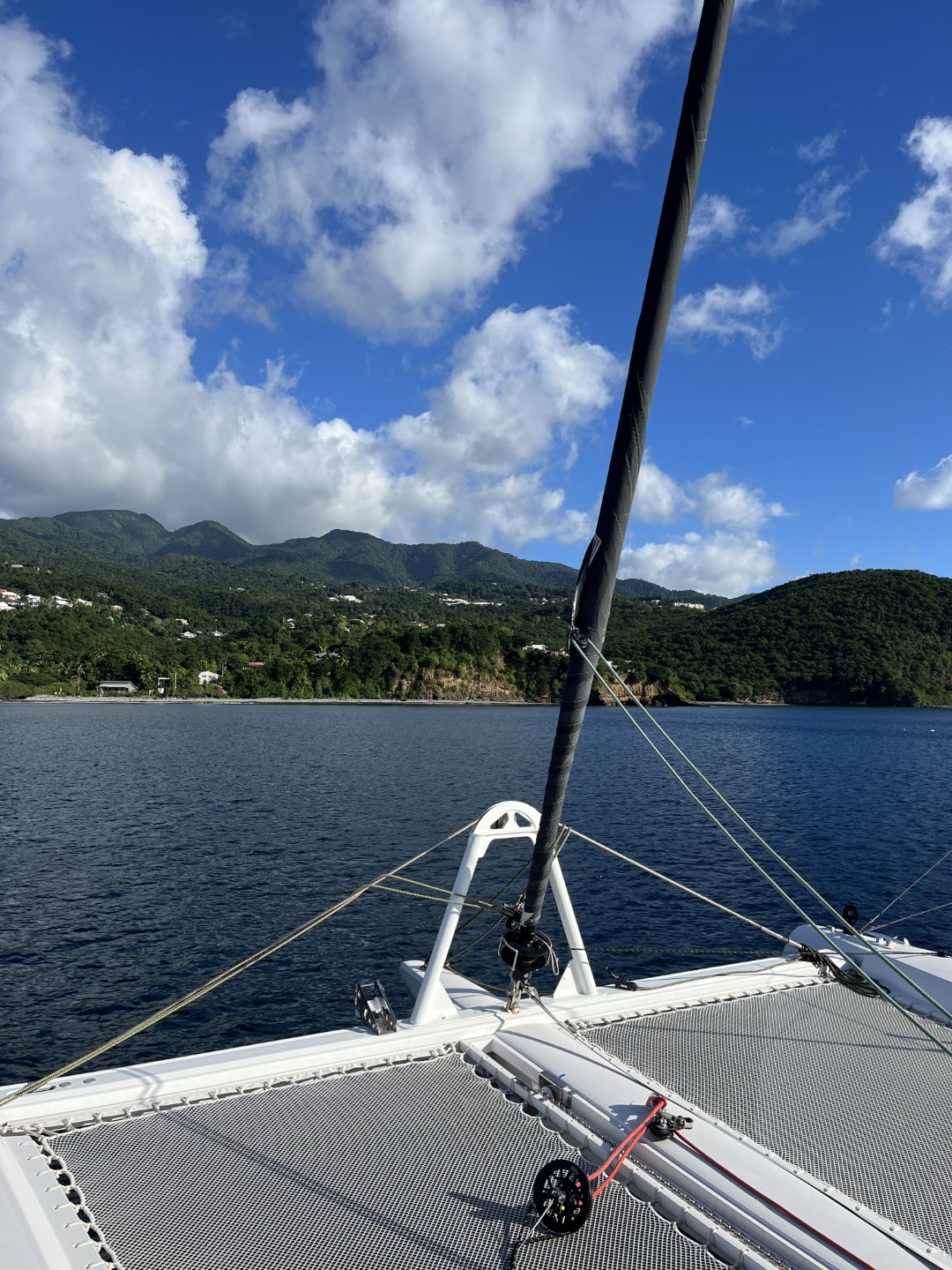
The next morning, we assessed the damage. Thanks to our friends on Renegade, Panterita, and Nizhoni, we were able to free the propeller and fix another problem at the top of our mast (topping lift jumped its sheave). We also examined the broken steel steering cable and formulated a plan to replace it with dyneema (a very strong polyethylene line). The following day, in between frequent rain squalls, we successfully accomplished the repair. We celebrated with a long swim in the beautiful warm bay. Tomorrow, we will explore the island!
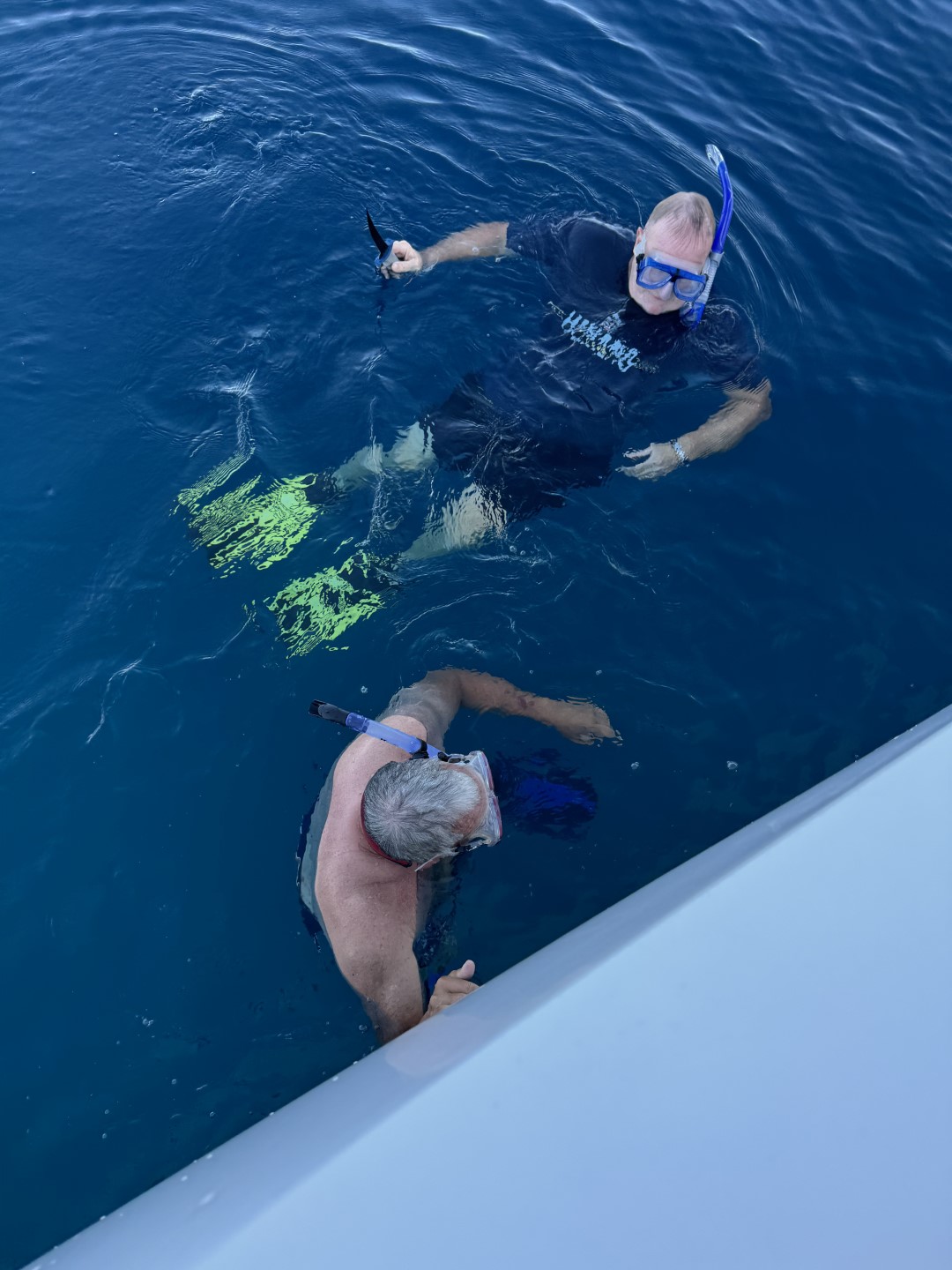

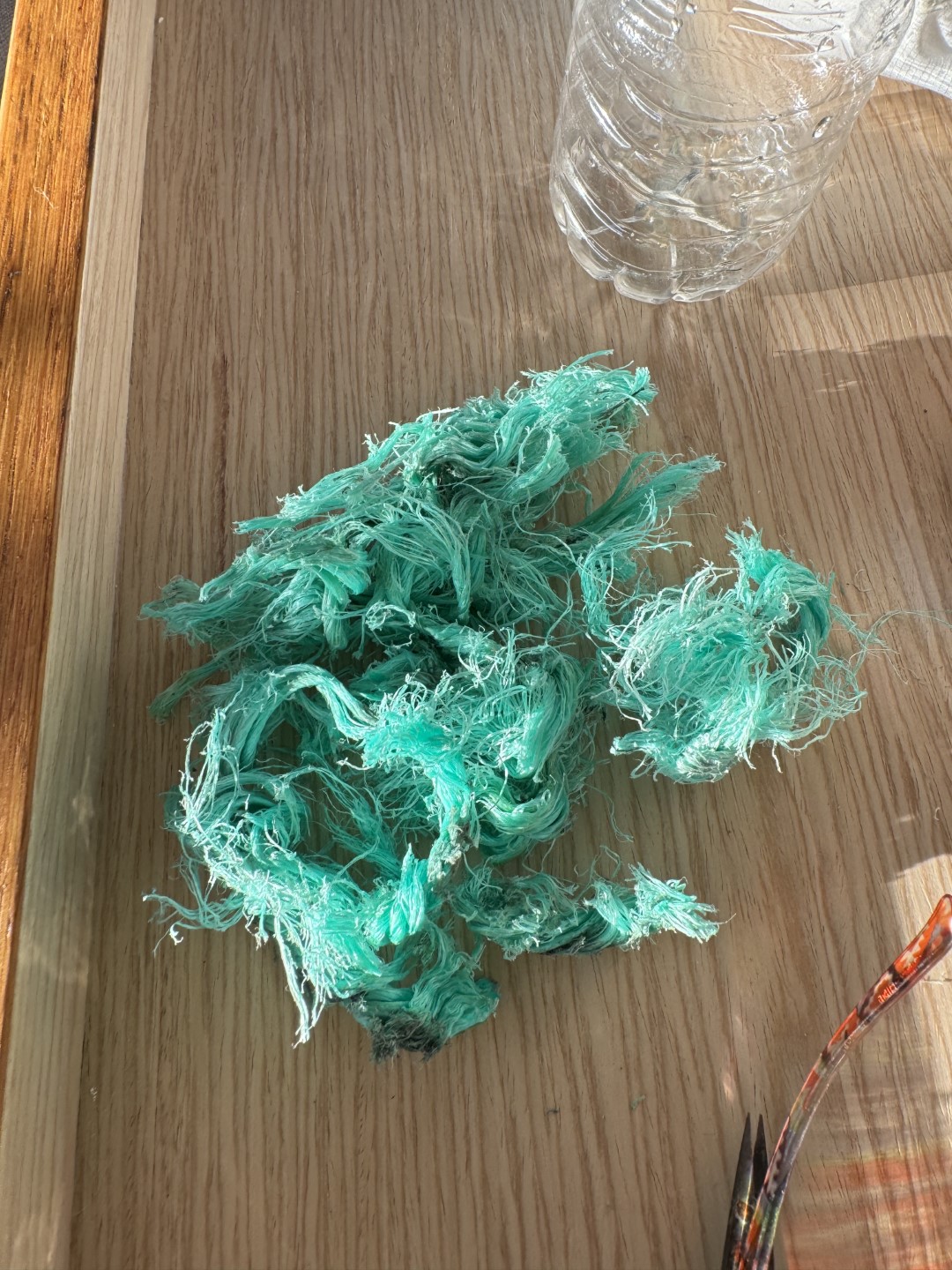

December 1, 2024
SXM
The island of St. Martin (SXM) is divided into two parts: the northern half is French and is named St. Martin while the southern half is Dutch and is called Sint Maarten. We are situated in the Gallic portion, but while Leviathan is required to stay on this side of the border (unless we complete exit formalities followed by entry formalities in the south), we are free to roam about both countries. Here is an interesting fact about the Dutch side: Sint Maarten is a major center for money laundering. I discovered this when I attempted to make a wire transfer to pay an invoice for our sail repairs. Sint Maarten is excluded from the international banking system and wire transfers are currently not possible.
Scott rented a car and we toured the entire island. The Dutch side is more heavily developed (resorts, condos, and high-rises) and their ports are focused on the cruise ship economy. We preferred the French side which is largely unspoiled with small towns and excellent restaurants. Before we knew it, Thanksgiving had arrived, and we created a veritable feast on Leviathan. After recovering from our food coma, we explored the island from the water on rented jet skis. Once our sails were repaired, we made plans to head further southeast to the island of Guadeloupe. The night before we left, we were lucky to witness the seasonal lighting of the town Christmas tree.
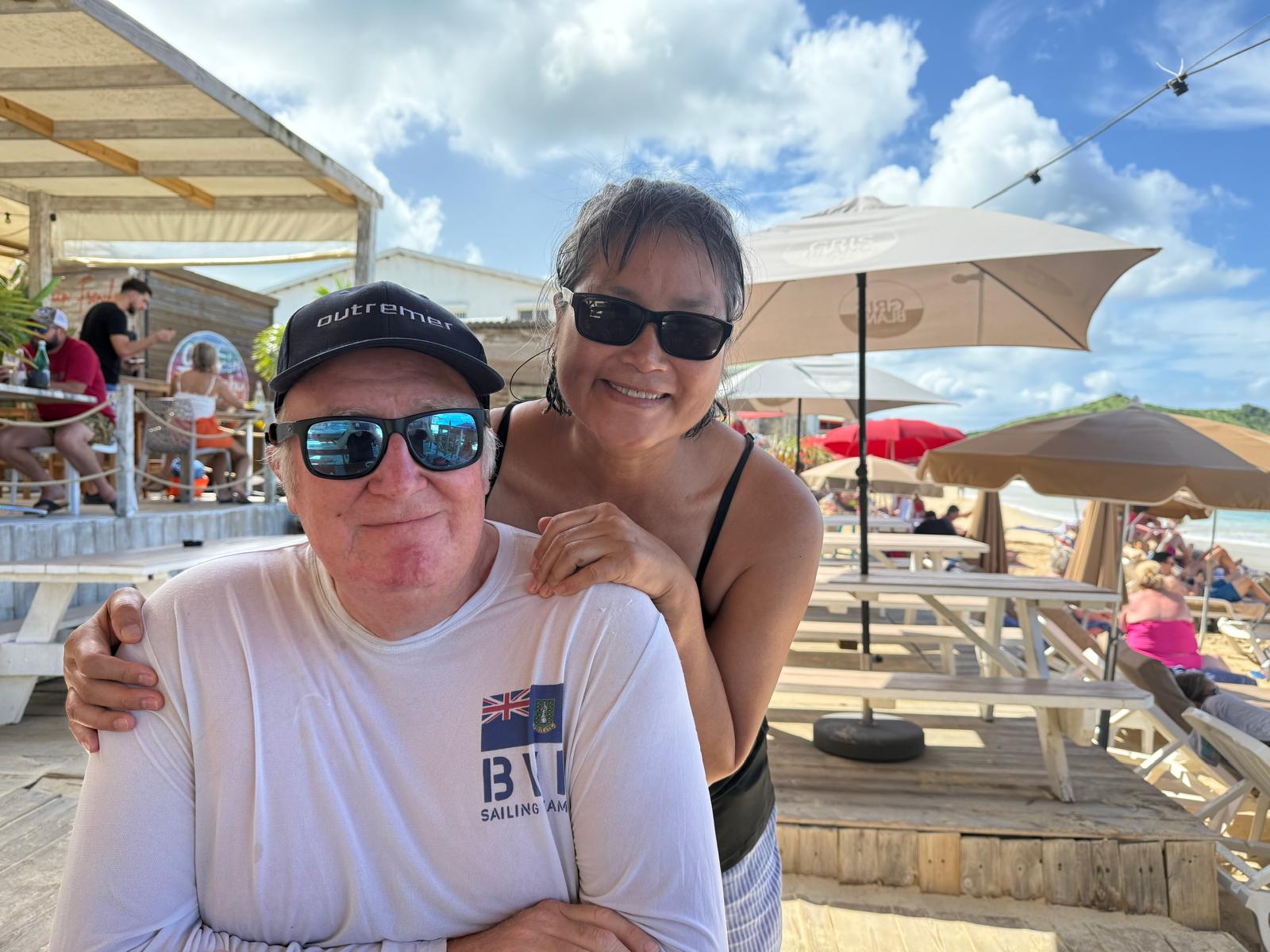
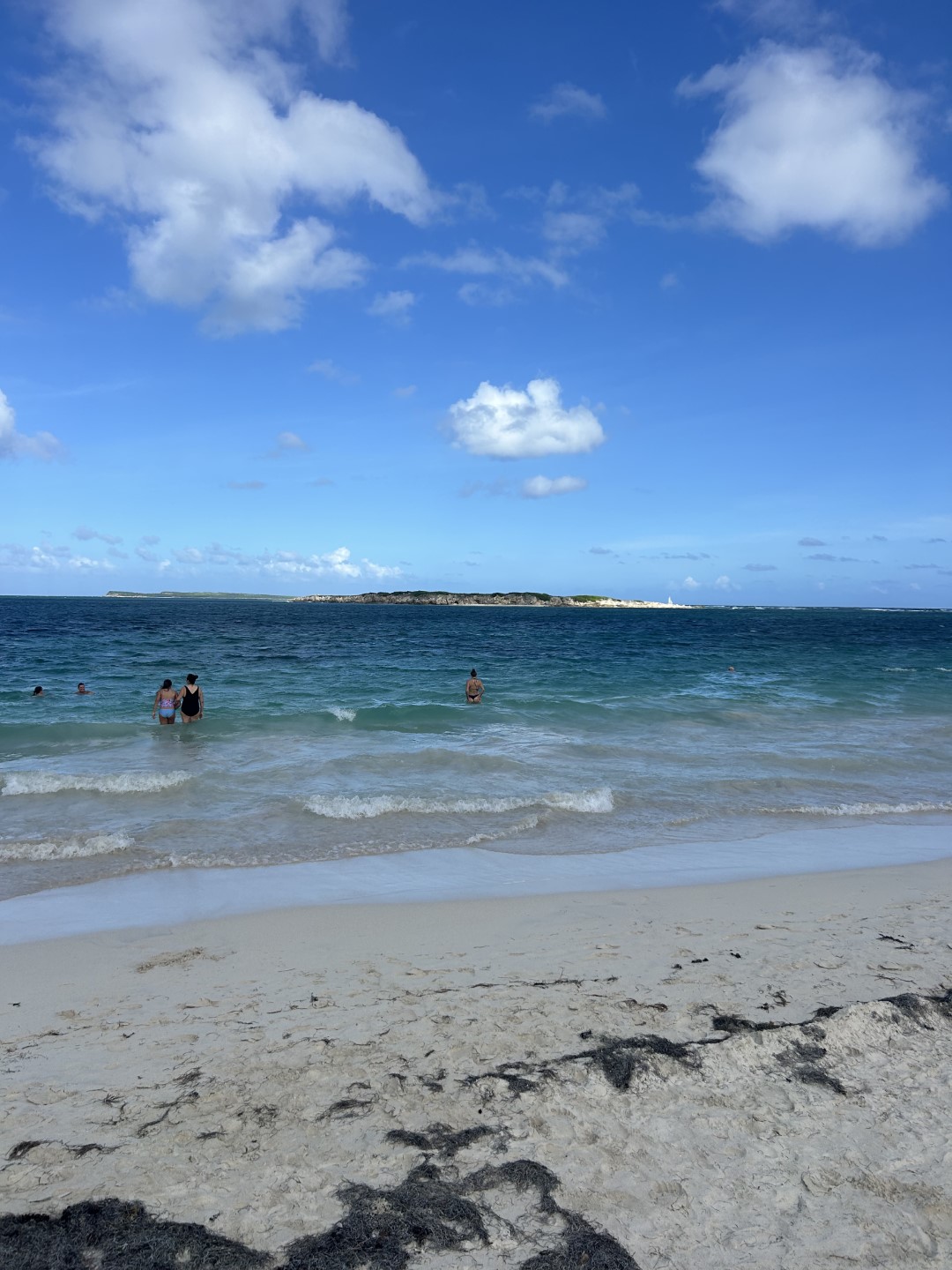
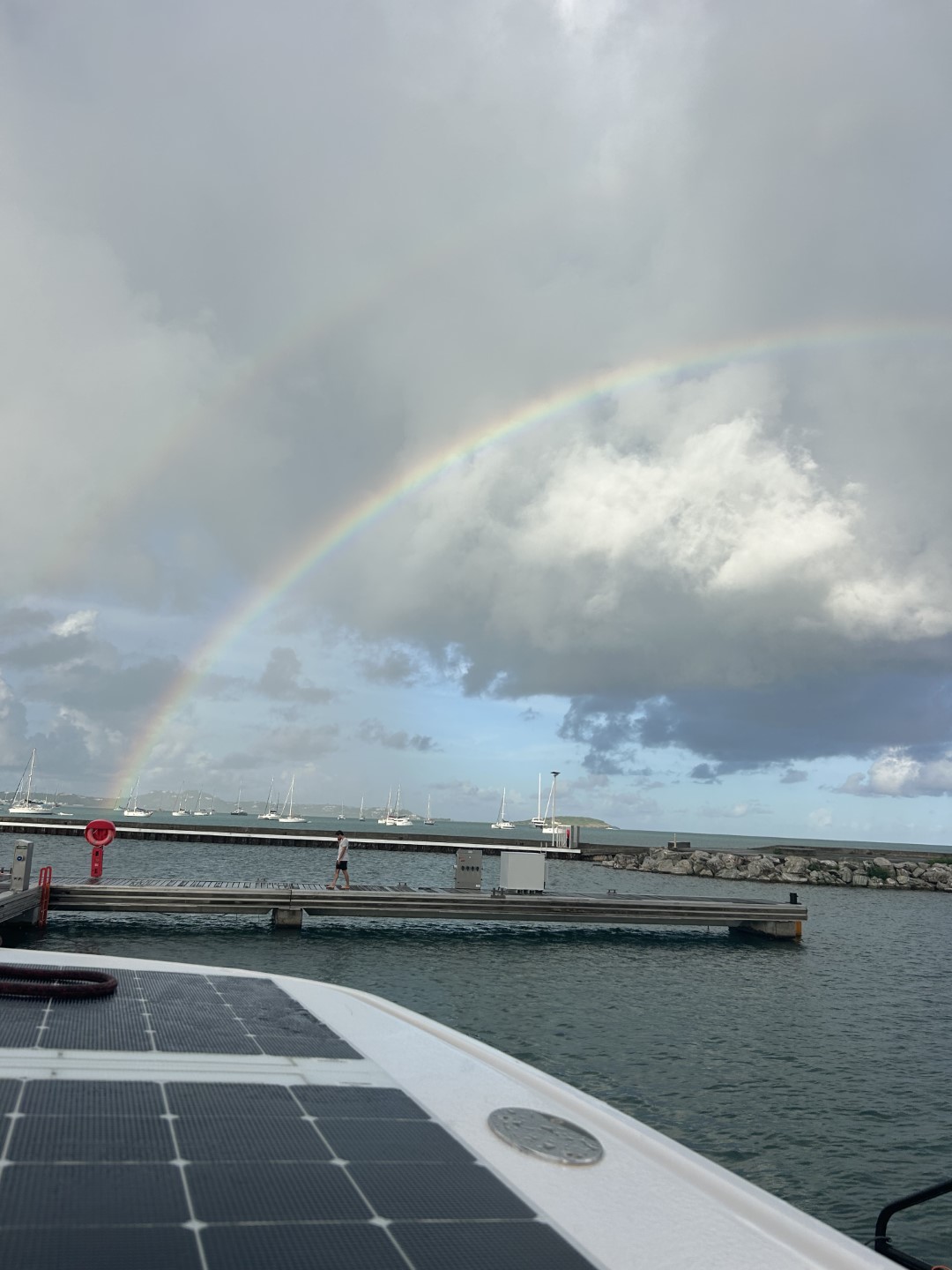
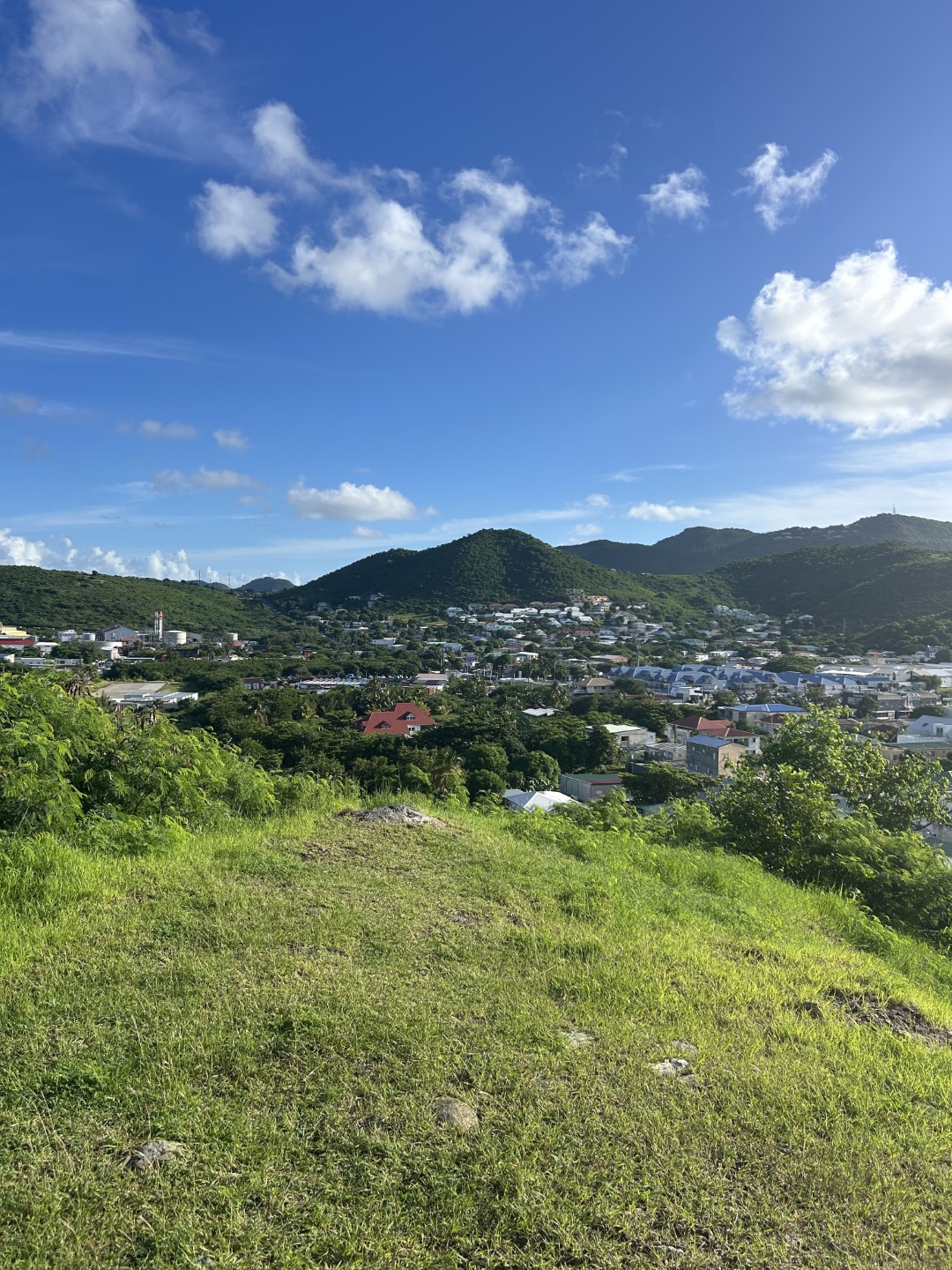
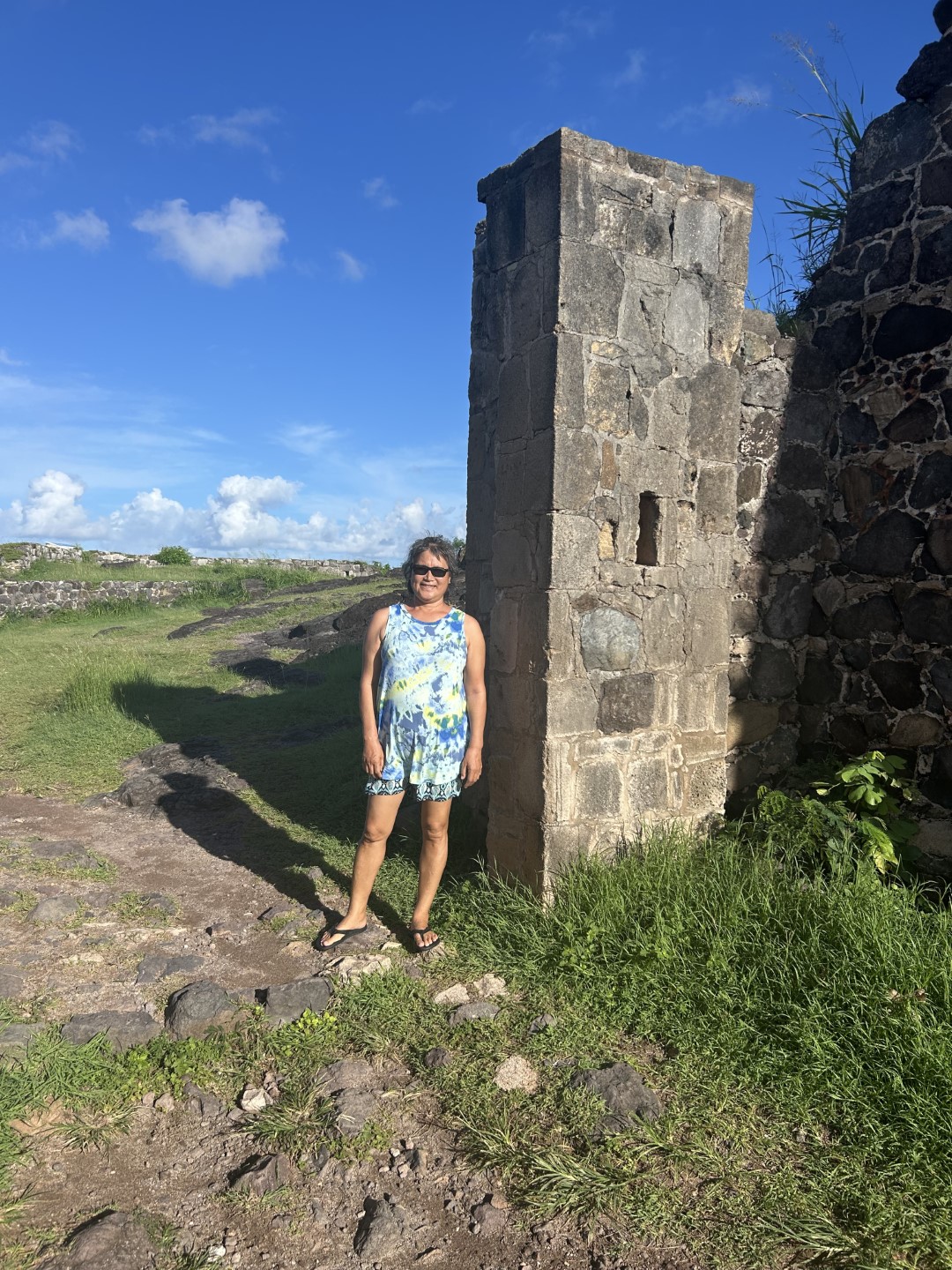
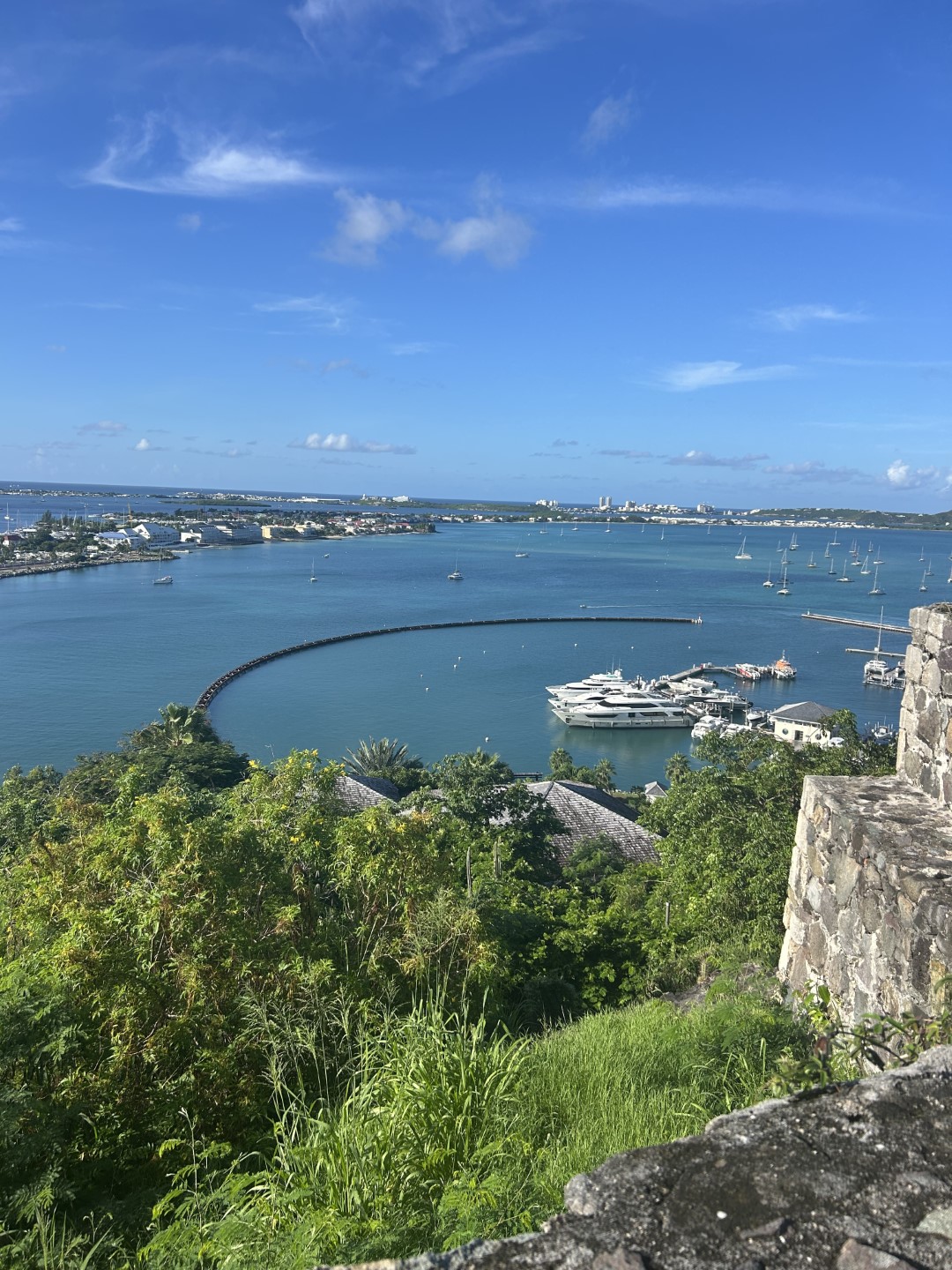
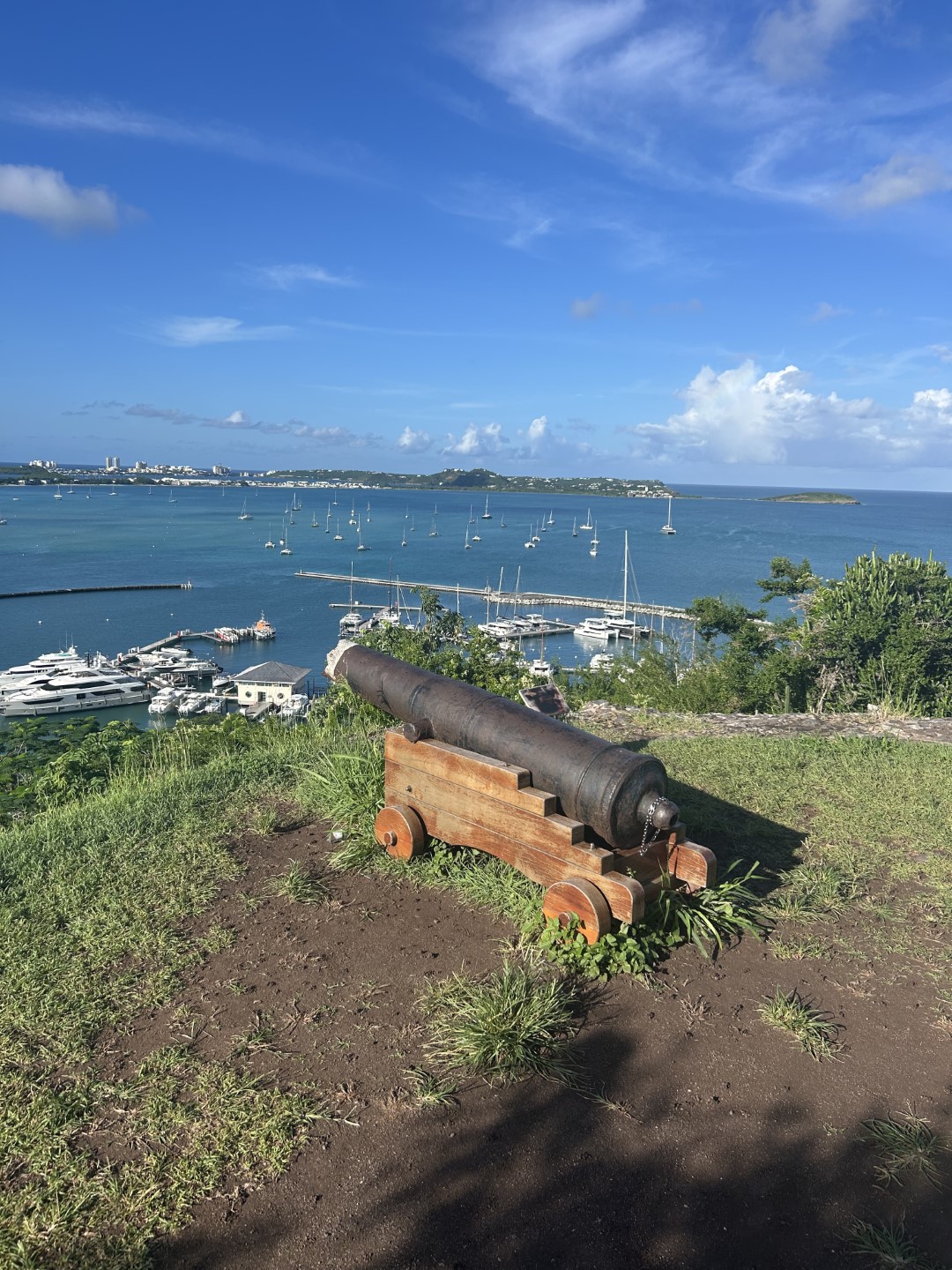
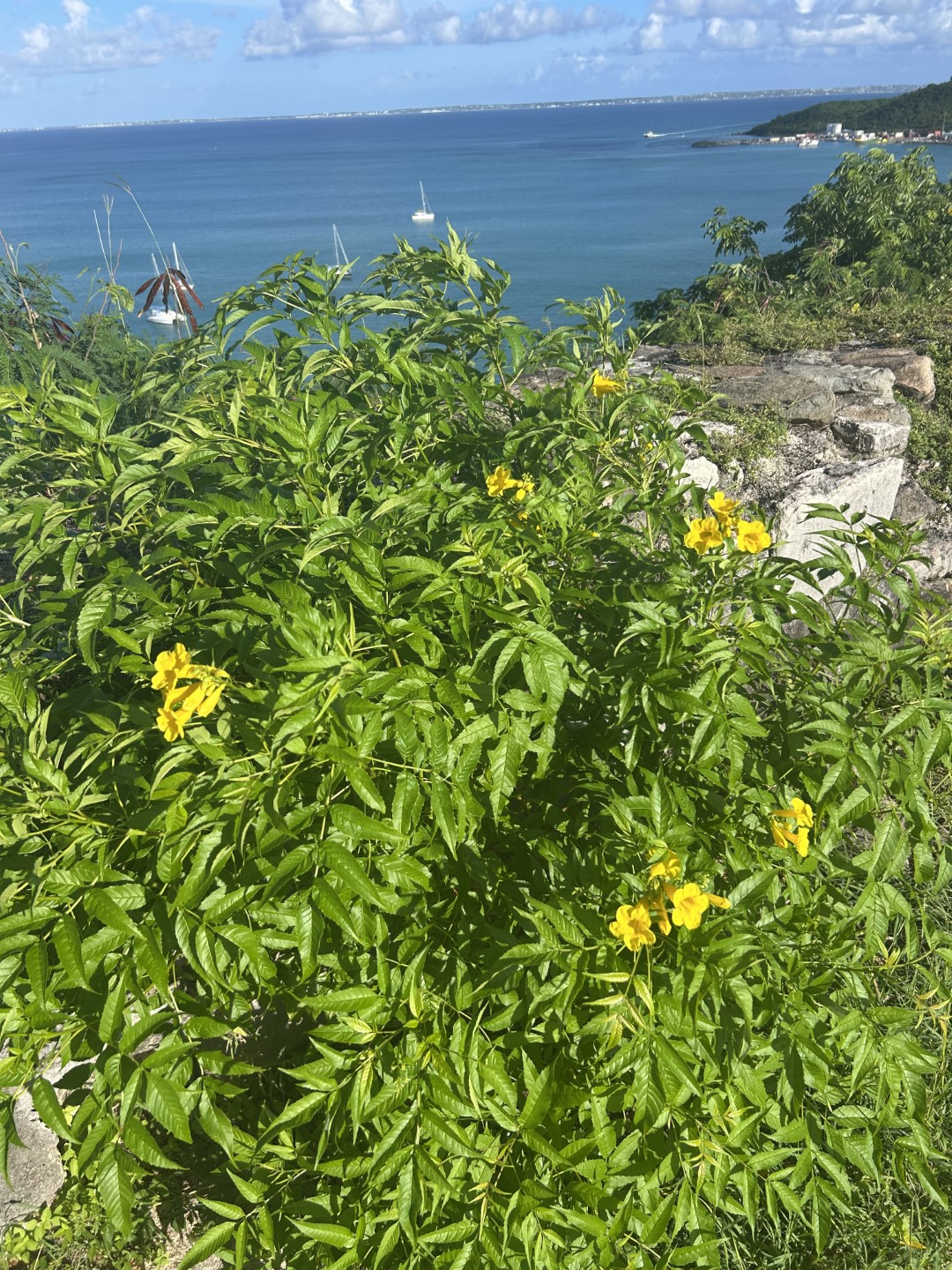
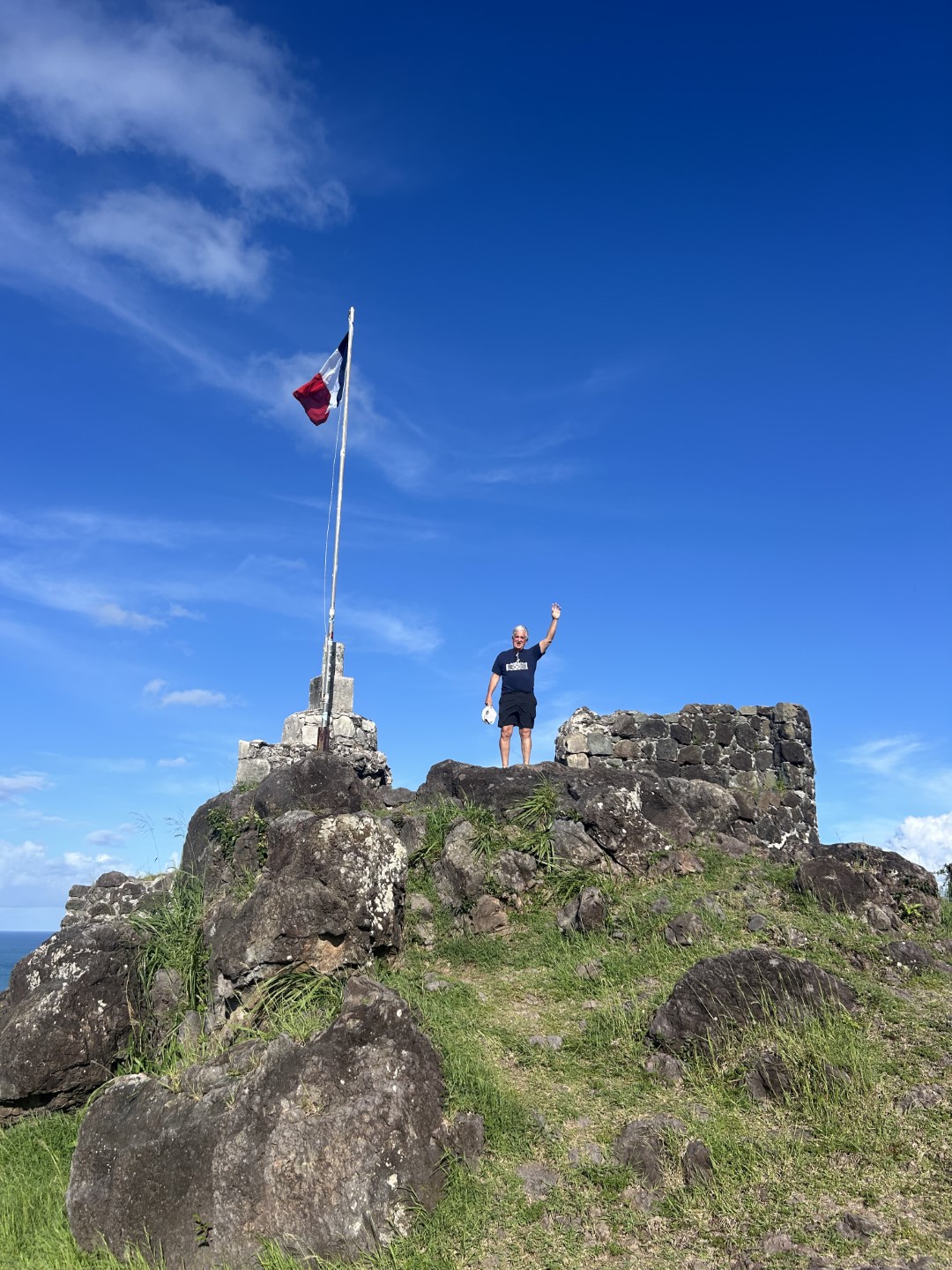
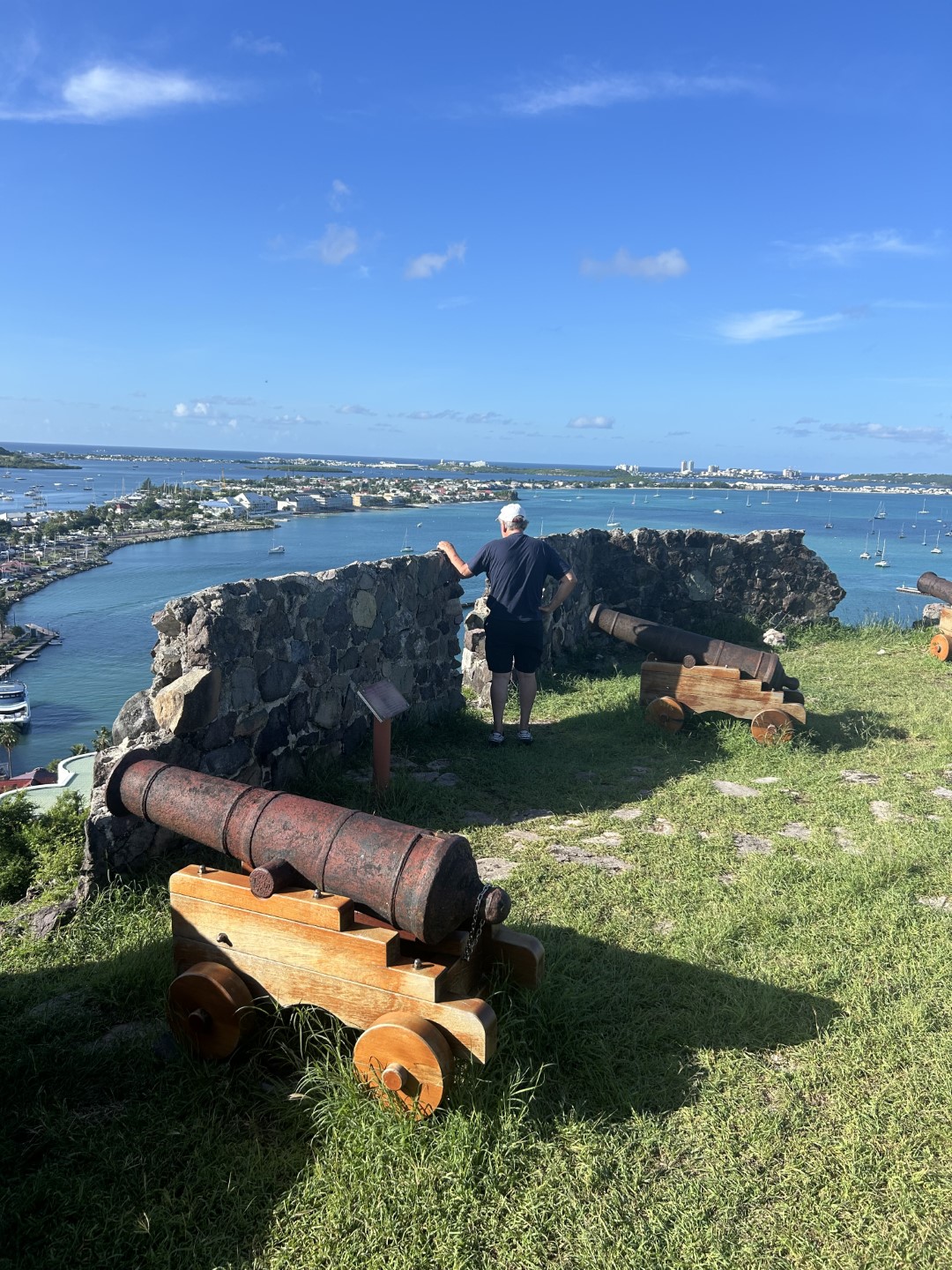
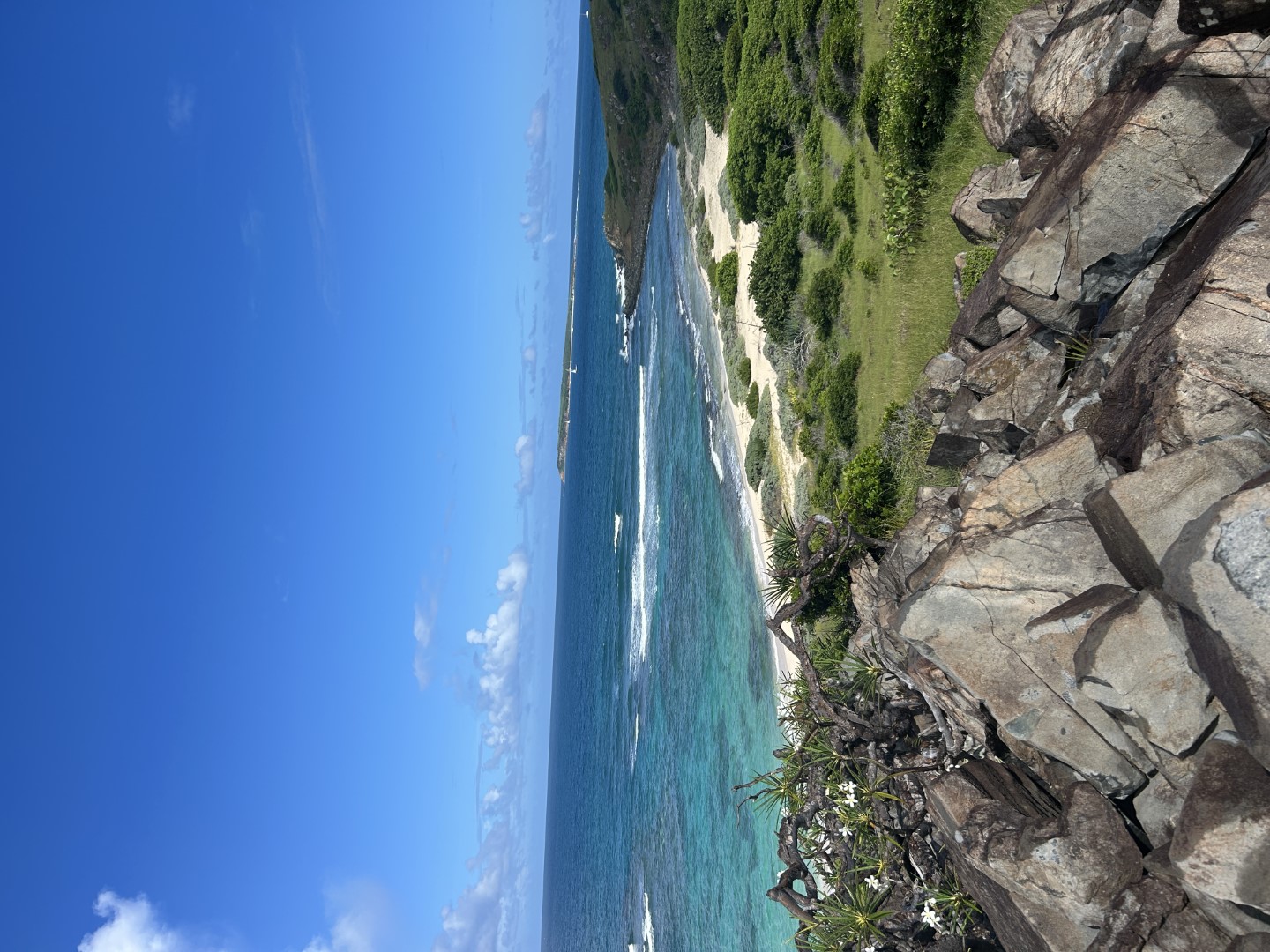
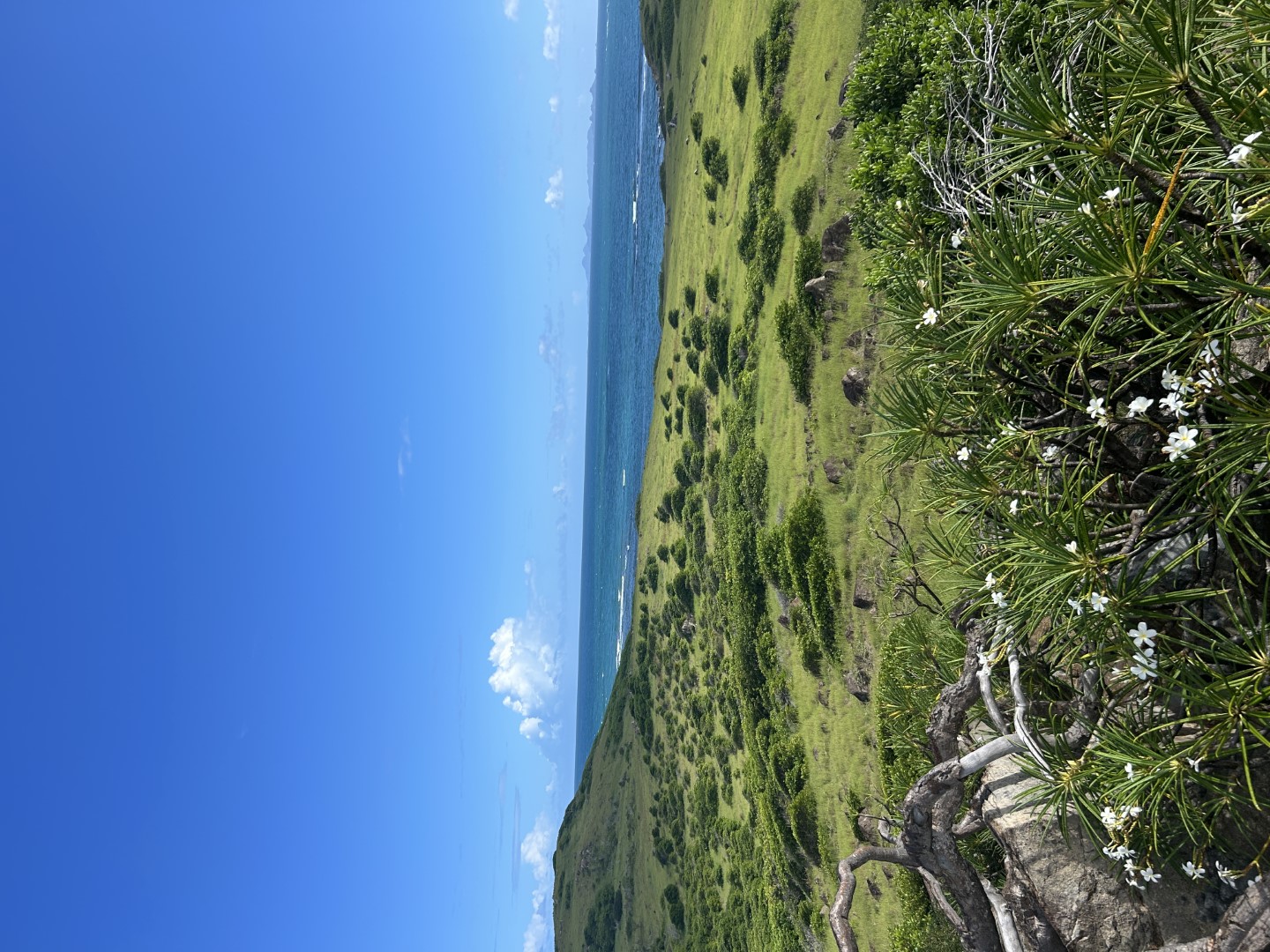
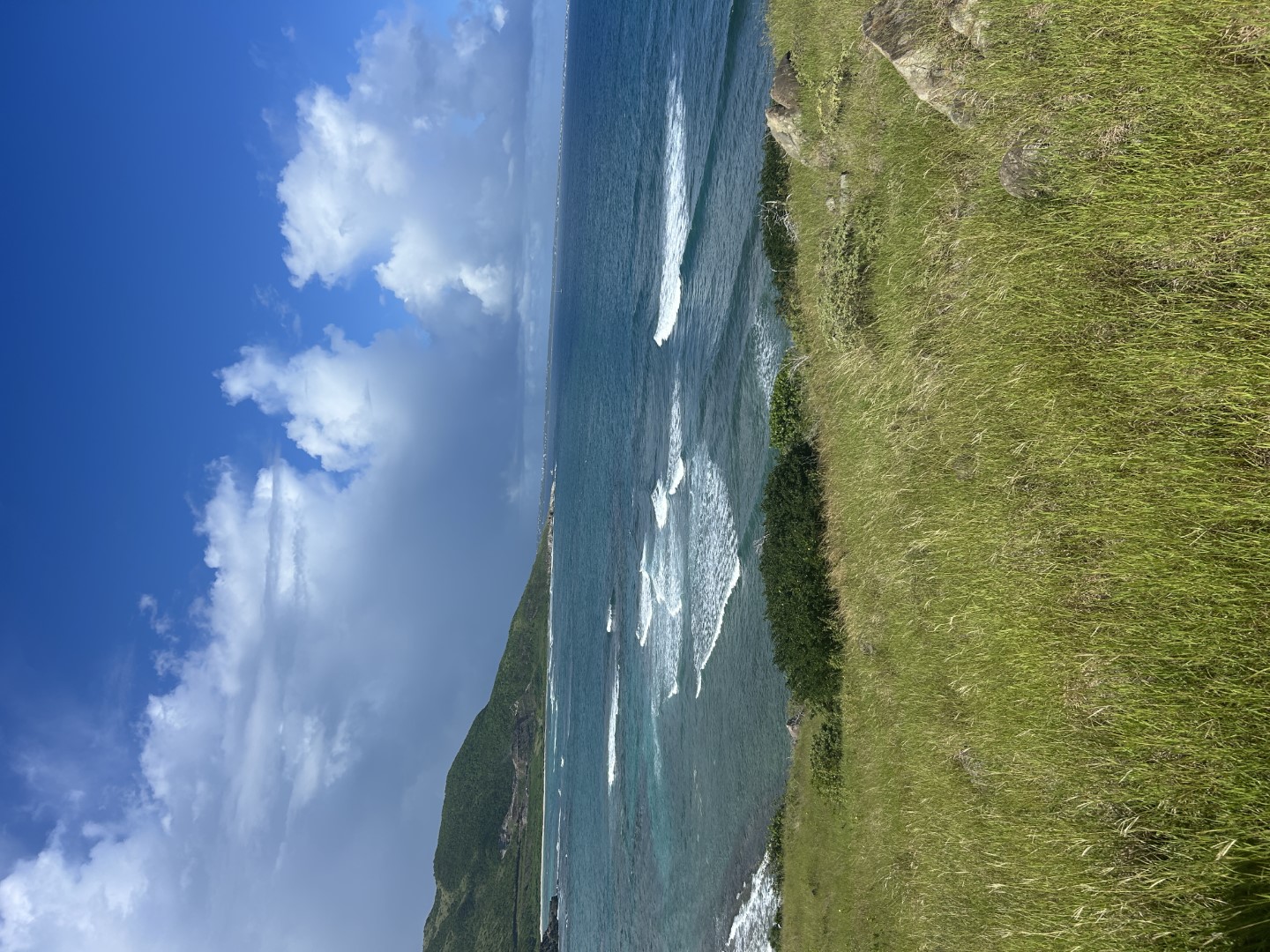

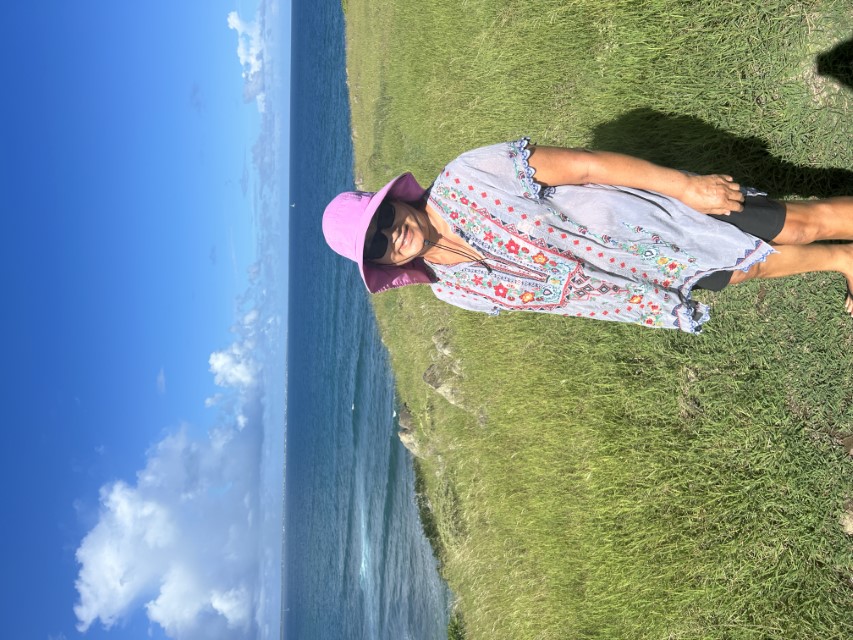
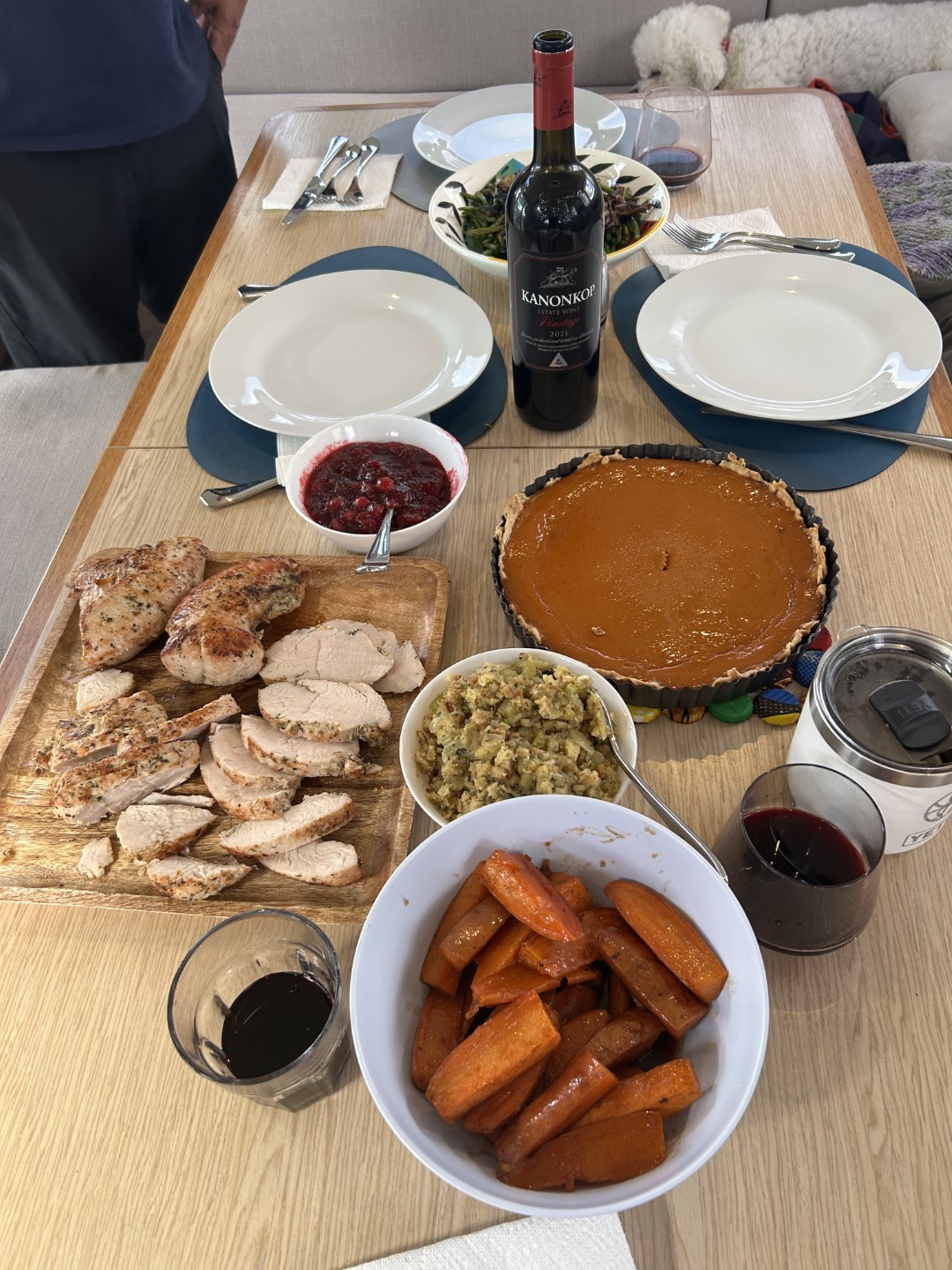
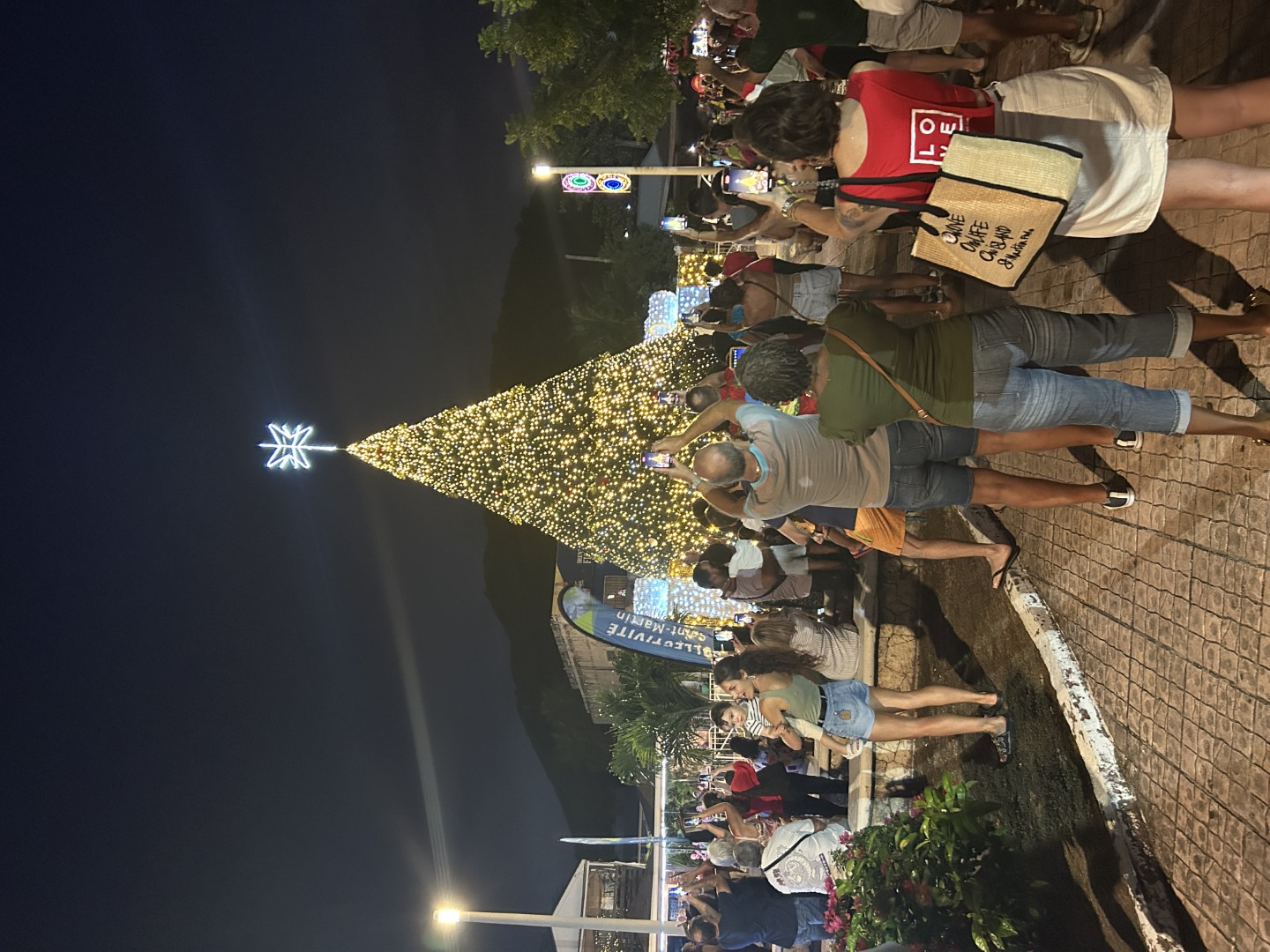
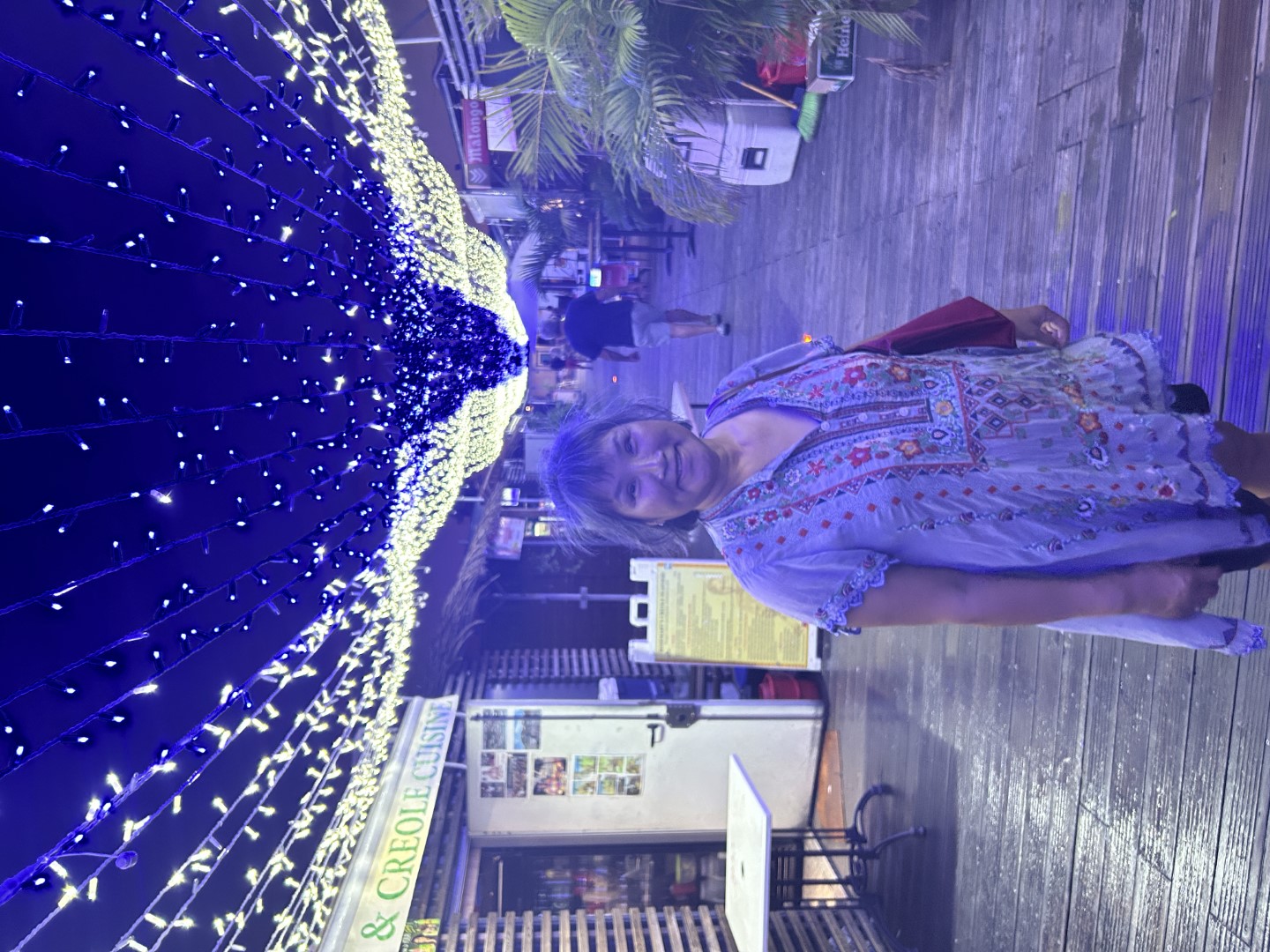
November 27, 2024
Leviathan: Redux
Apologies to the dauntless reader(s) of this blog. The author took shore leave for an extended period, but he is happy to report that Leviathan is prowling the seas again. In our last episode, we were giddy having just finished our circumnavigation in St. Lucia in the southern Caribbean. The next decision that all seagoing vessels must ponder at this time of year and in this region is what to do for hurricane season. In the Caribbean, the hurricane season runs from June 1 to November 30, although the peak activity extends from mid-August to mid-September. For insurance purposes (and self-preservation), most yachts will avoid the hurricane belt by moving south (Southern Grenada or lower) or north (above Cape Hatteras). Some boats will remain in the belt and simply move around as needed to avoid major storms. Many of our rally colleagues decided to sail south to the island of Trinidad to haul their boats out of the water for storage on land. We elected to sail back to the good old USA.
In May, we sailed to Martinique where we had some work done on the boat. From here, we launched north to St. Croix in the US Virgin Islands, where we enjoyed snorkeling and diving and making new friends in the anchorage in Frederiksted. Our next stop was in the Bahamas, and we island-hopped our way eastward until we finally made the jump to America. Our target was Norfolk at the mouth of the Chesapeake Bay. Our voyage was uneventful, and before we knew it, we were back home. We wanted to take a break for several months, so we found a marina in the picturesque town of Cape Charles on the Eastern Shore of Virginia (across the Bay from Norfolk), hauled Leviathan out of the water, and positioned her on jackstands on land. From her lofty perch, Leviathan still had a wonderful view of the harbor. After completing a lengthy checklist, we said our goodbyes to our trusty vessel, and made the long drive to our home in Michigan in a rented F150.

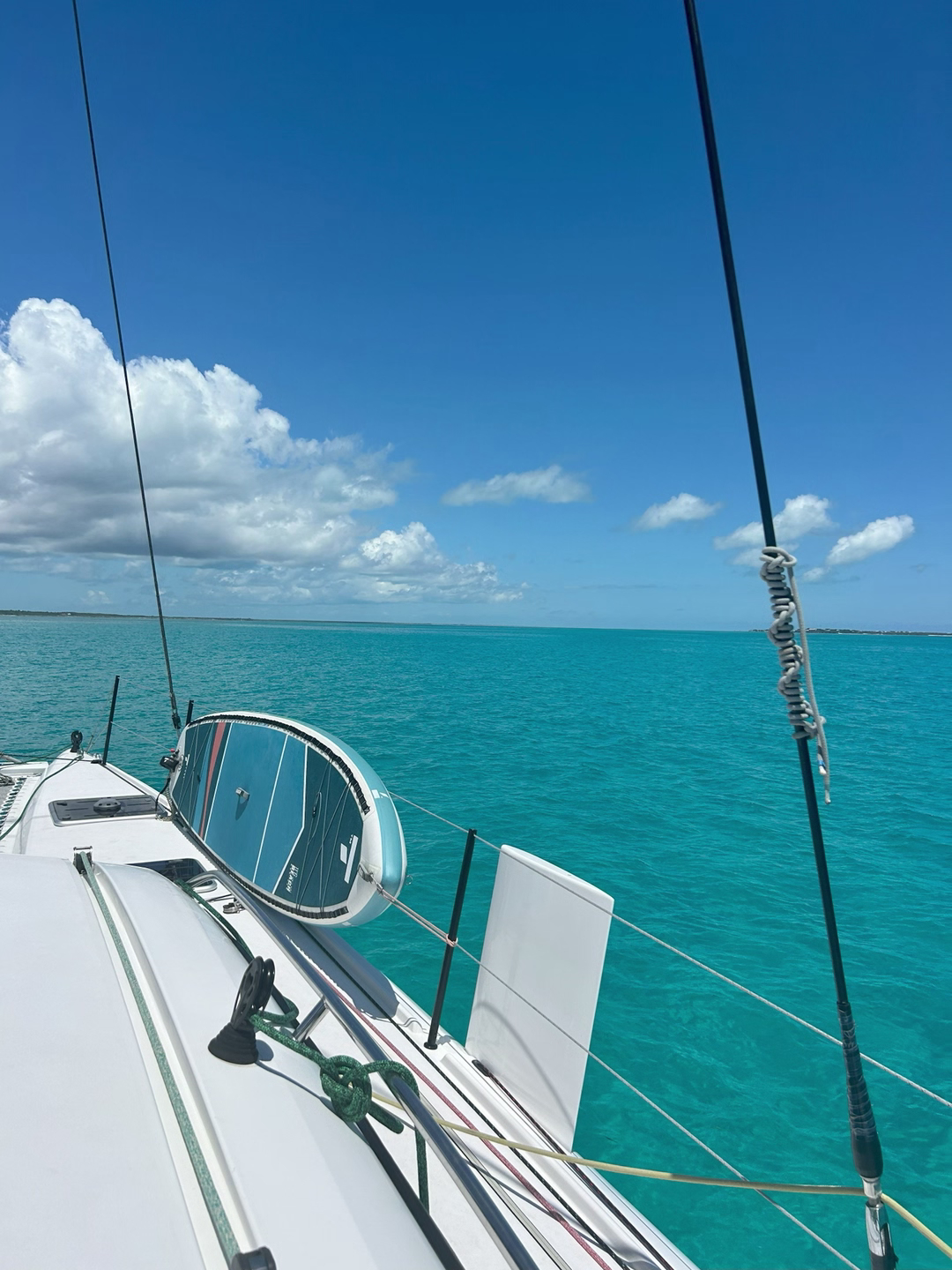
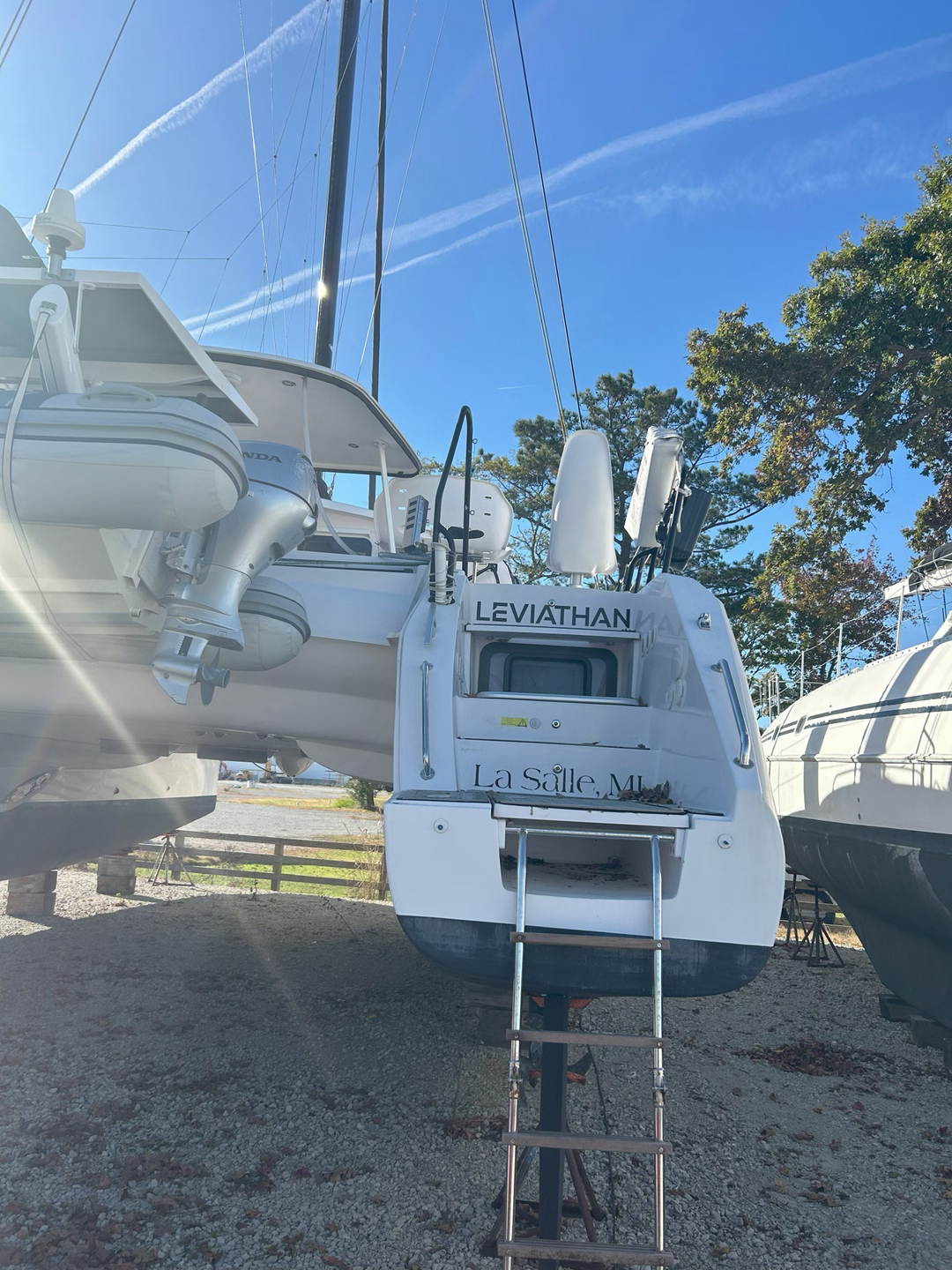
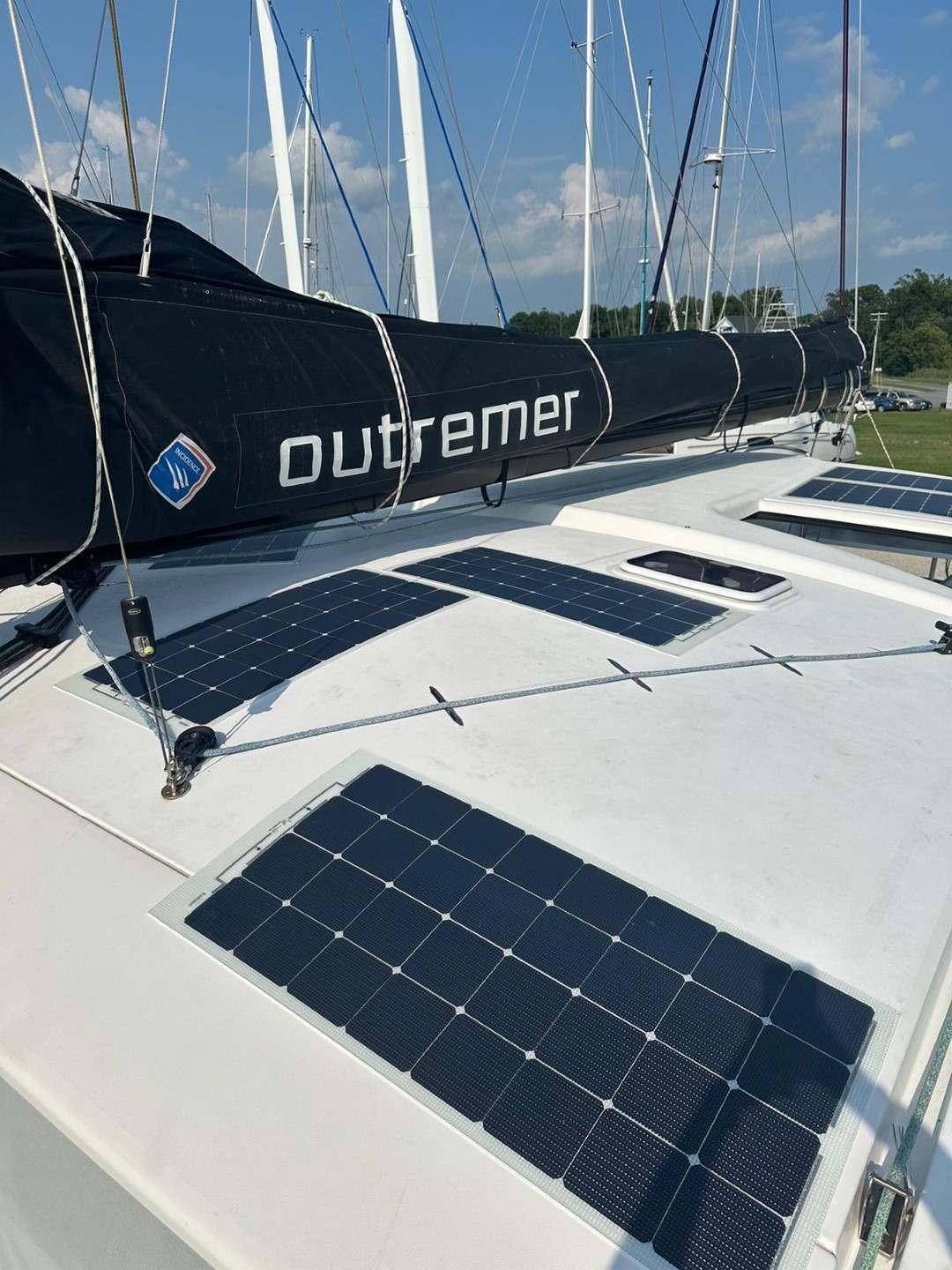
Adjusting to life on land was a bit difficult. Our seafaring routine was completely disrupted, and replaced by the long-forgotten terrestrial groove. Also, the gruesome specter of retirement (which was impalpable during the circumnavigation) materialized for me. We stayed busy working on a number of projects and hobbies. I did a little bit of hiking in Spain (Camino de Santiago) and in the Sierra Nevadas of California (John Muir Trail) with our friends Walter and Caroline from Fat Kat. Ultimately, Yong and I became restless and ready to get back on Leviathan. We decided that another season of sailing in the Caribbean would be fun. We loaded up the truck and headed back to Cape Charles. Leviathan was more than happy to get back in the water, and after a feverish preparation, we were ready to take off. Our friend and frequent crew member Scott joined us and after a stuttering departure (electrical problems required us to return to the marina) we sailed out of the Chesapeake bound for the island of St. Martin.
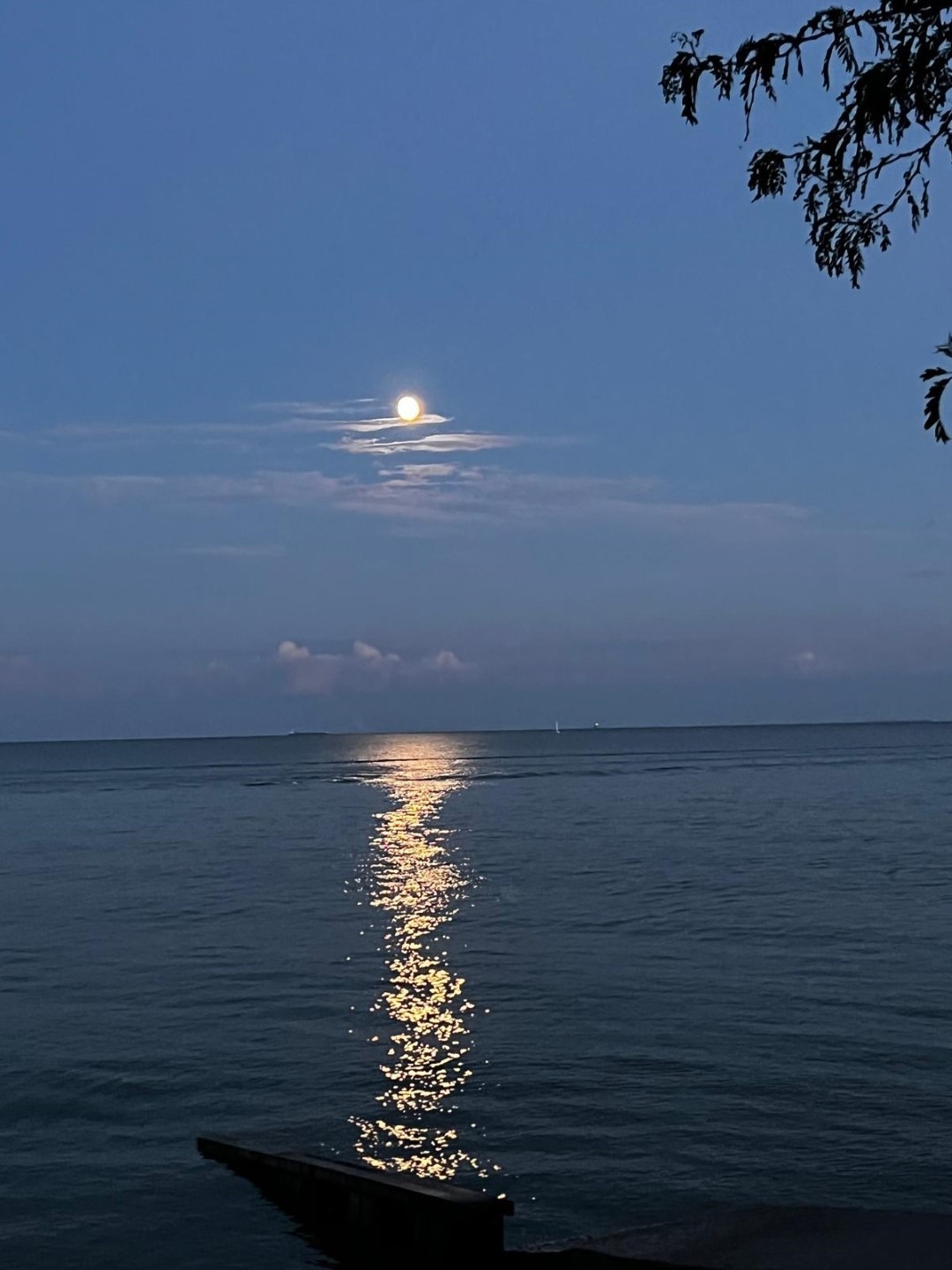
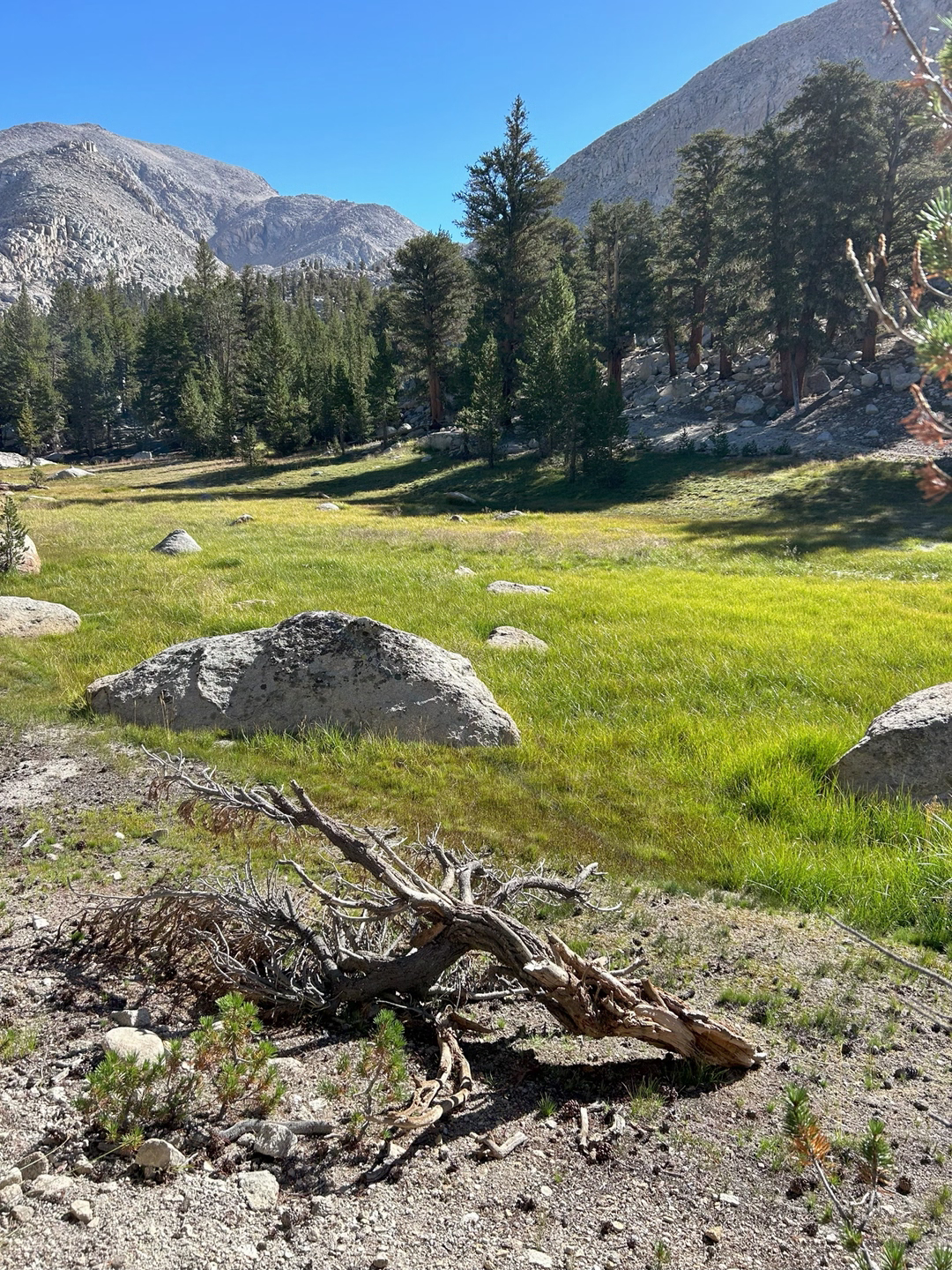
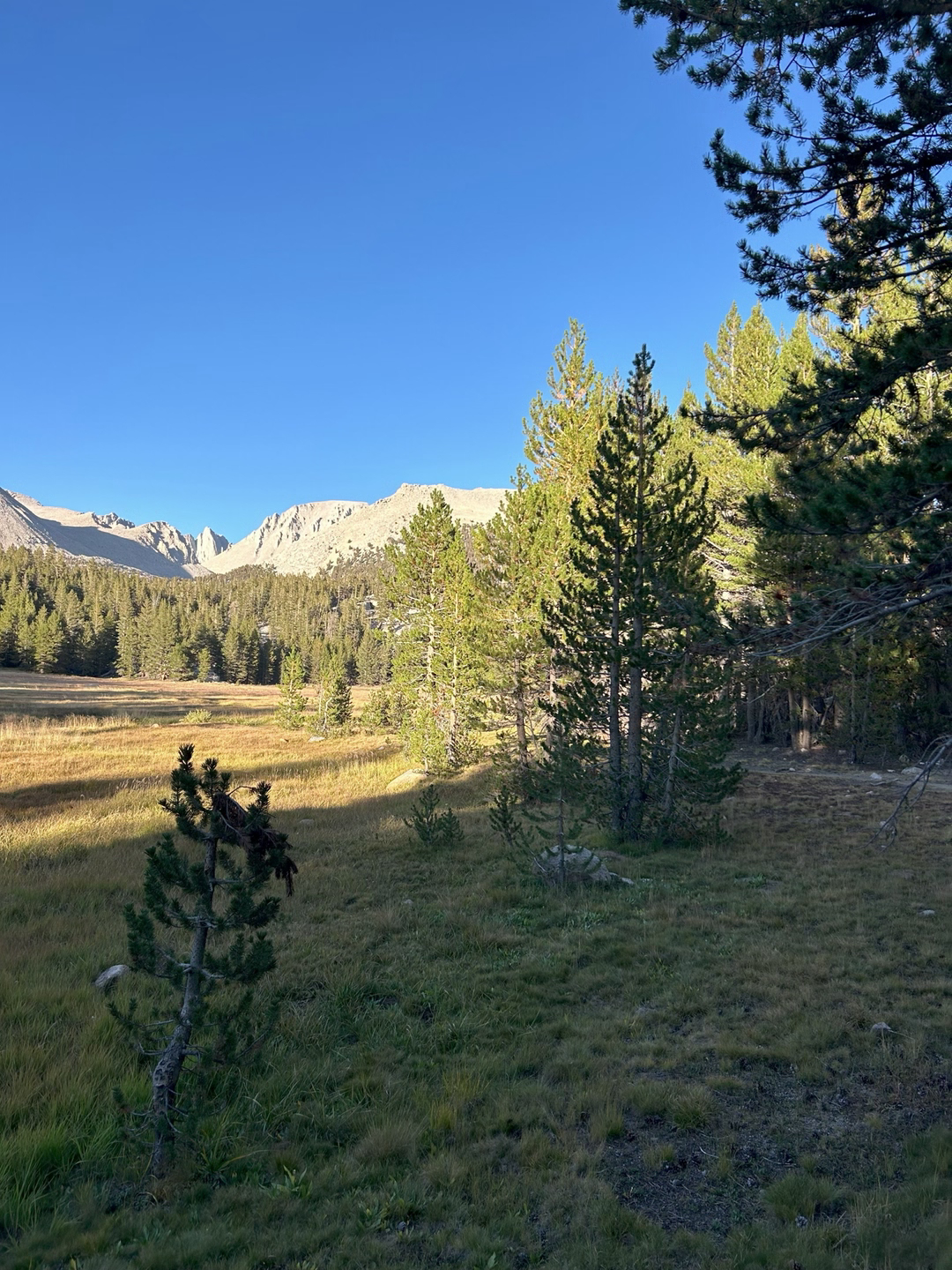
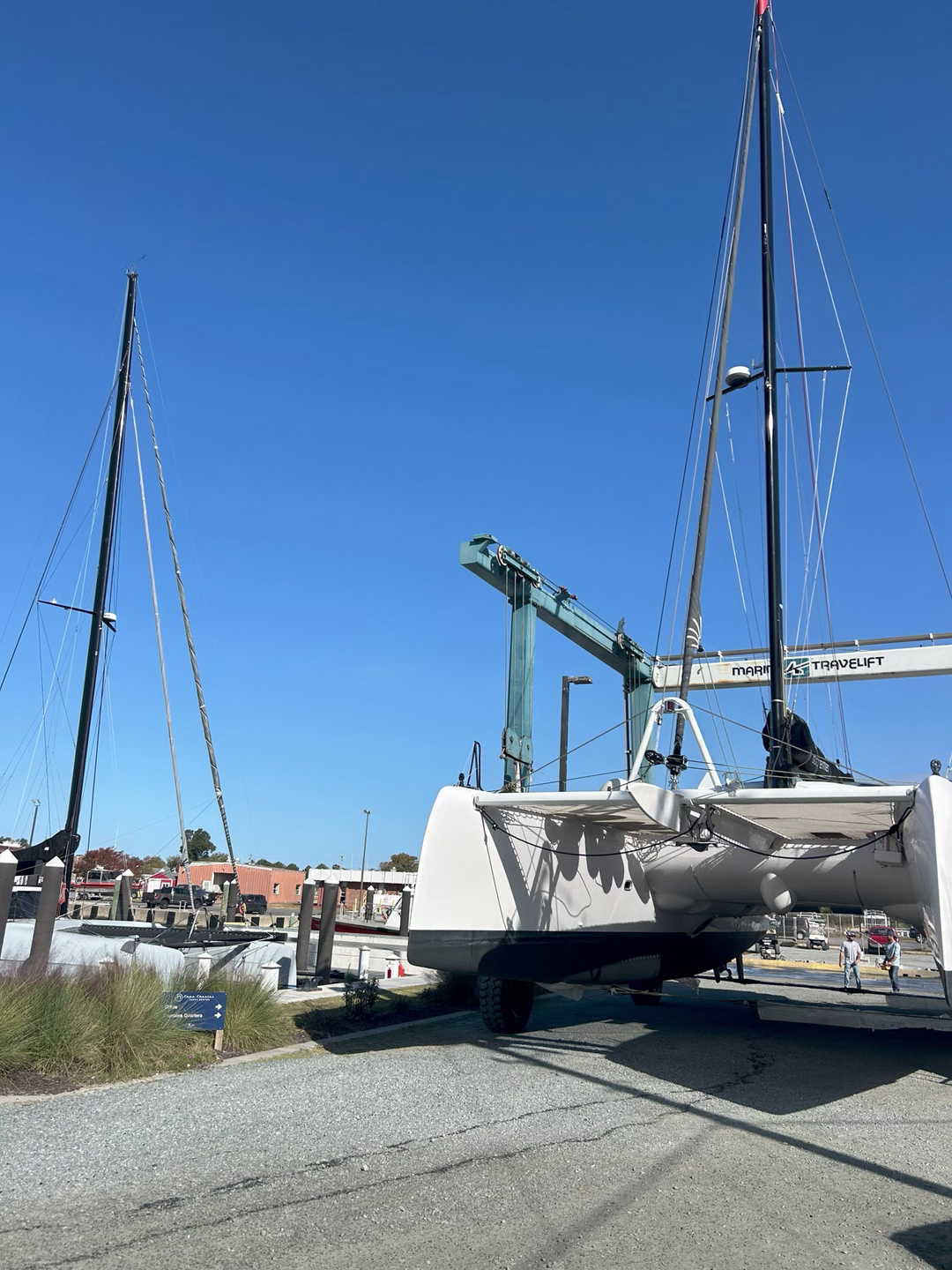

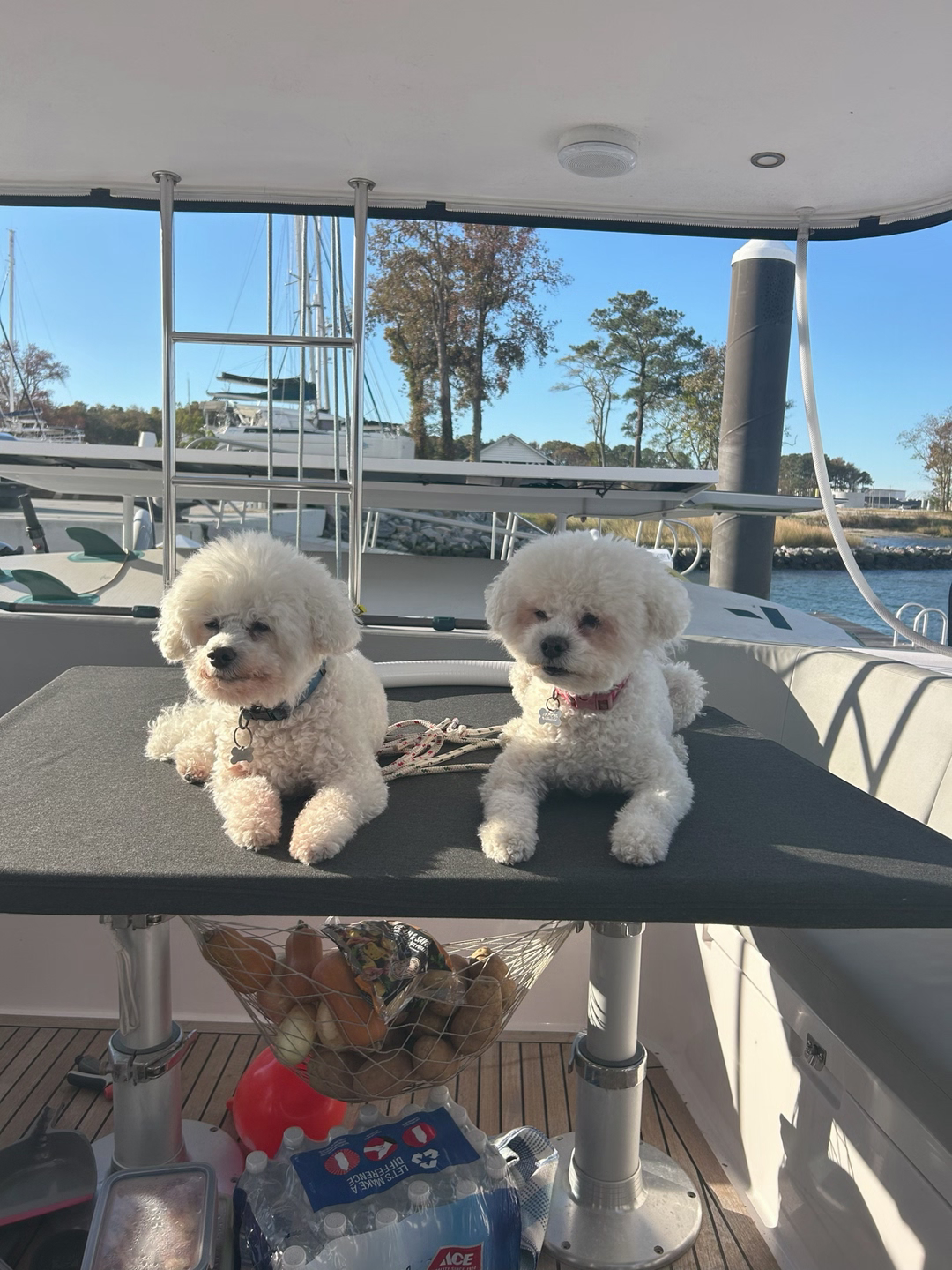

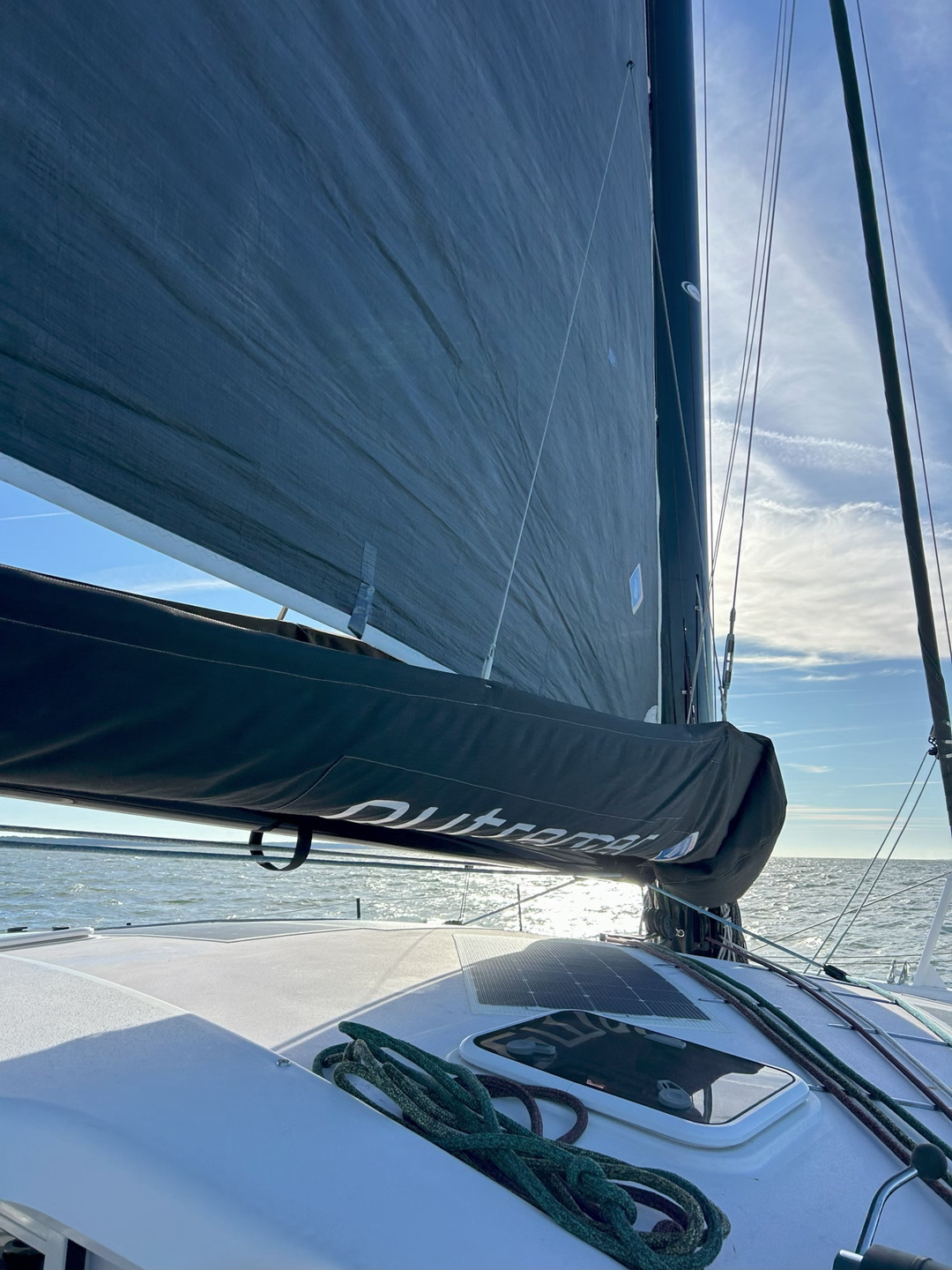
We covered the 1400 nautical miles in eight days and arrived at the Marina Fort Louis in Marigot. Entry formalities in French islands are usually quite easy, and we were not disappointed. Following a mandatory stop at the first available bar (FAB), we returned to Leviathan and collapsed. Ocean crossings are tiring, and it is nice to recover in paradise. Our only casualty of the trip was a tear in our spinnaker which will require professional attention. Our mainsail could also use some tender loving care. We contacted the local sailmaker and made arrangements for repairs. Tomorrow is Thanksgiving, and we are planning a feast. Hopefully we will be able to watch the Lions game. After decades of frustration, Detroit finally has a good football team. All is good.
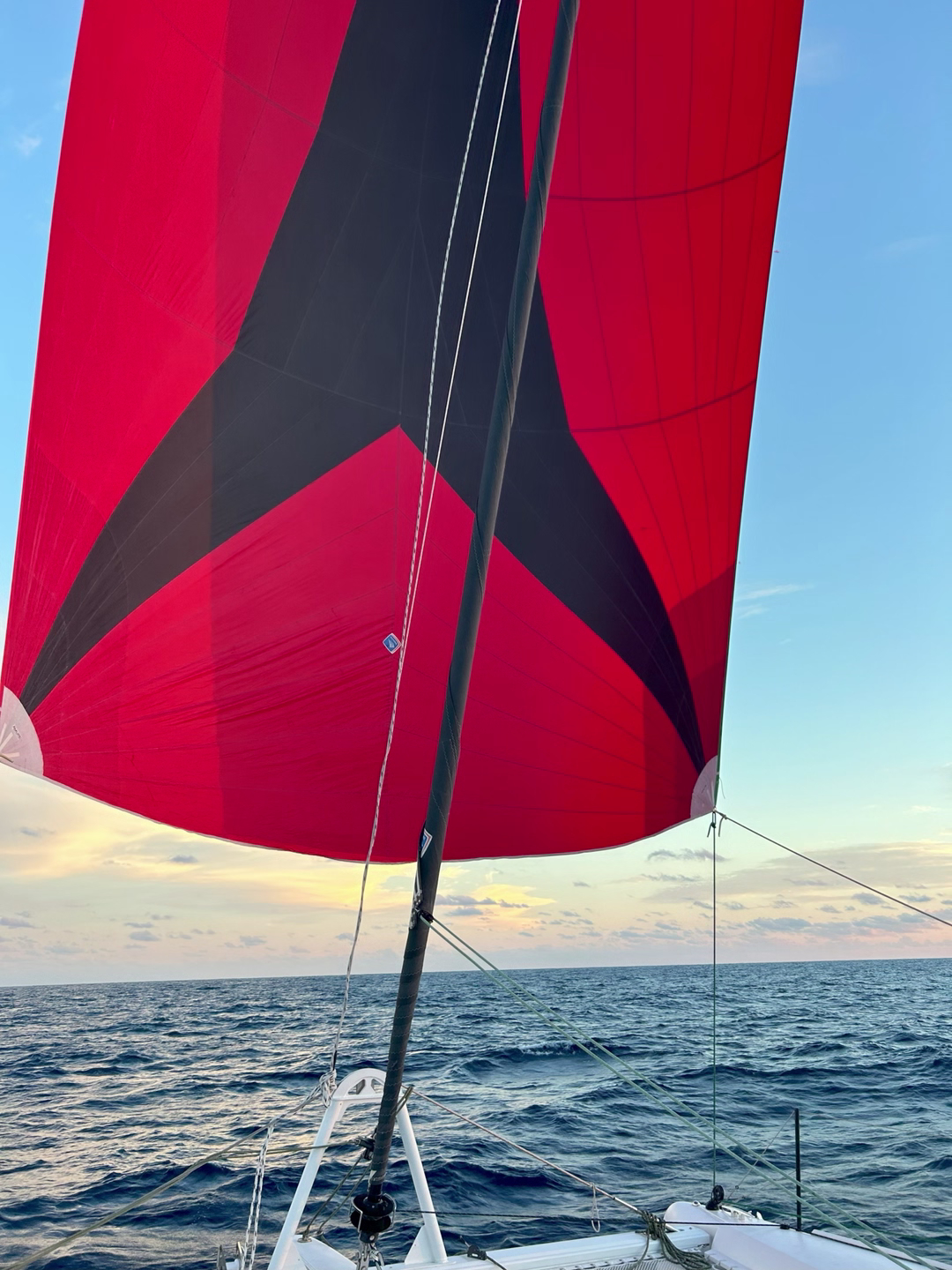
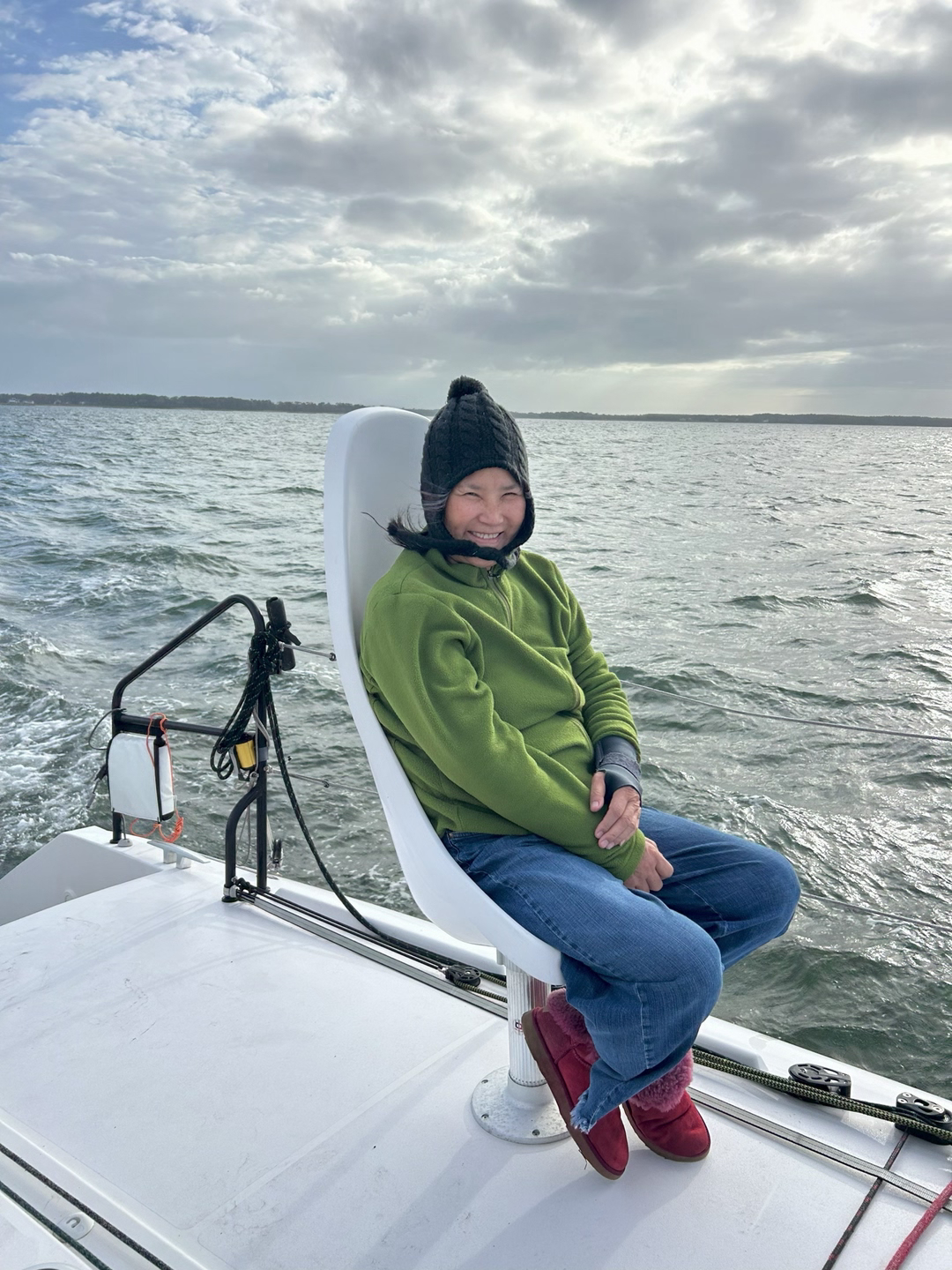
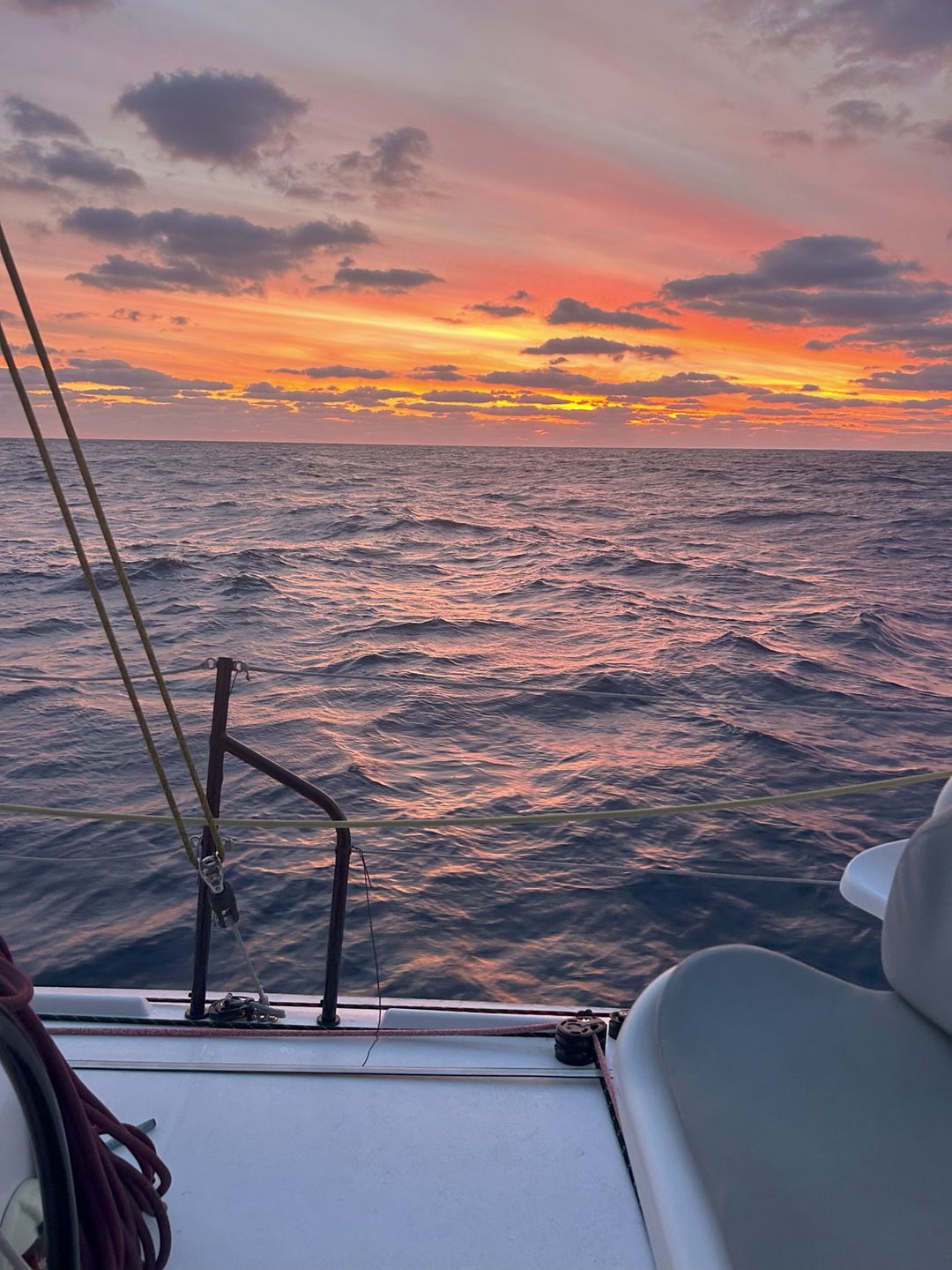
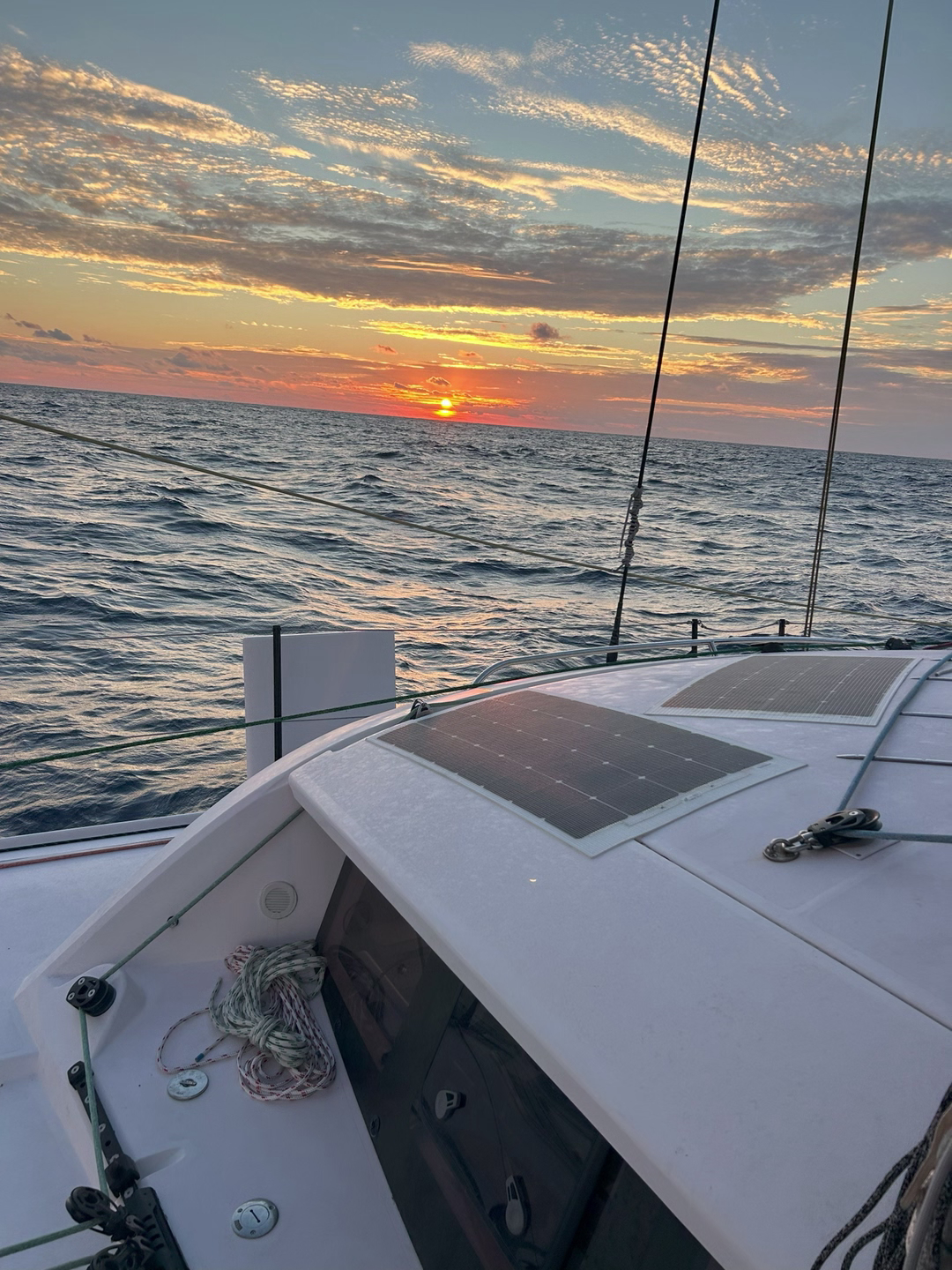
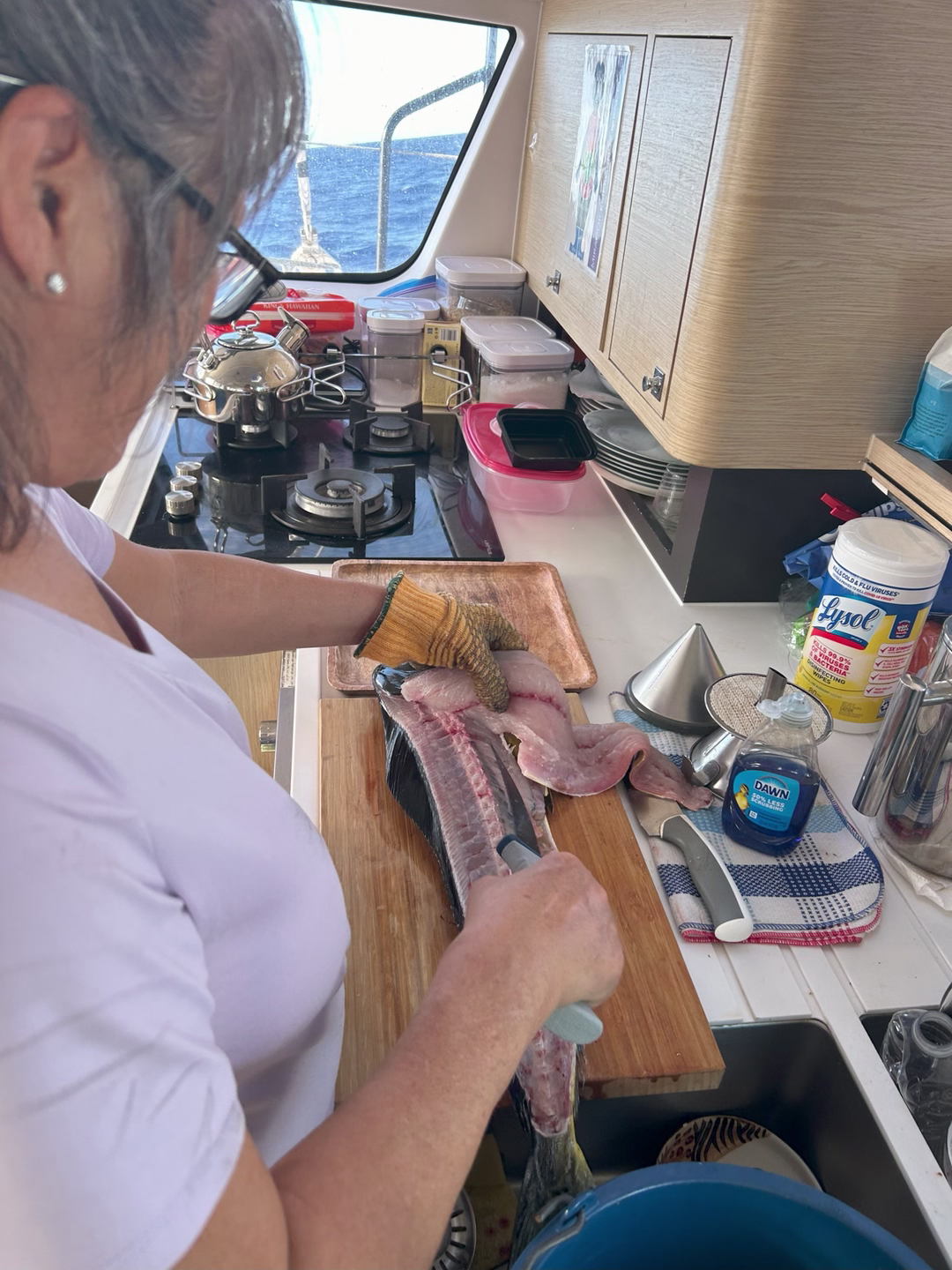
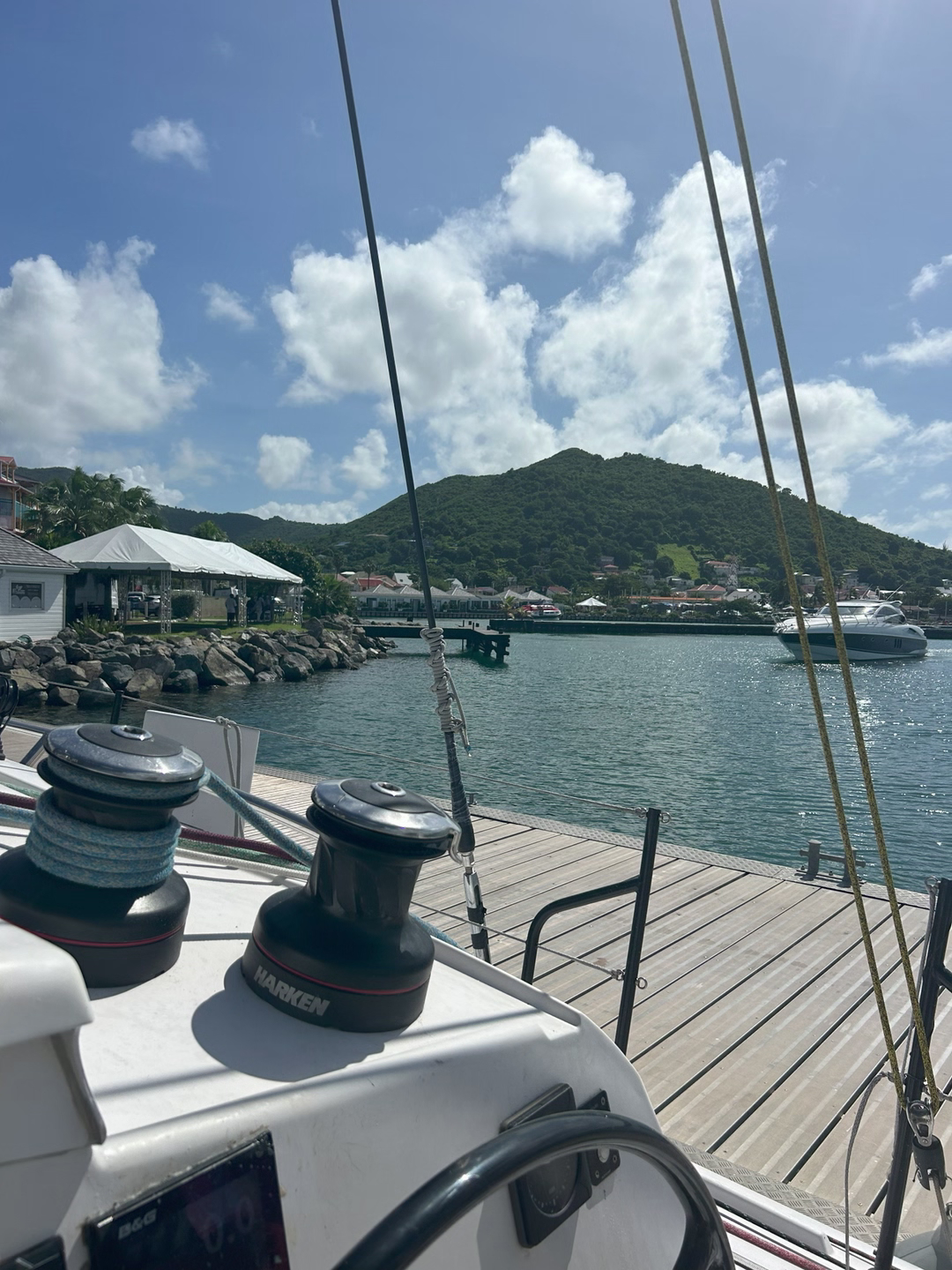
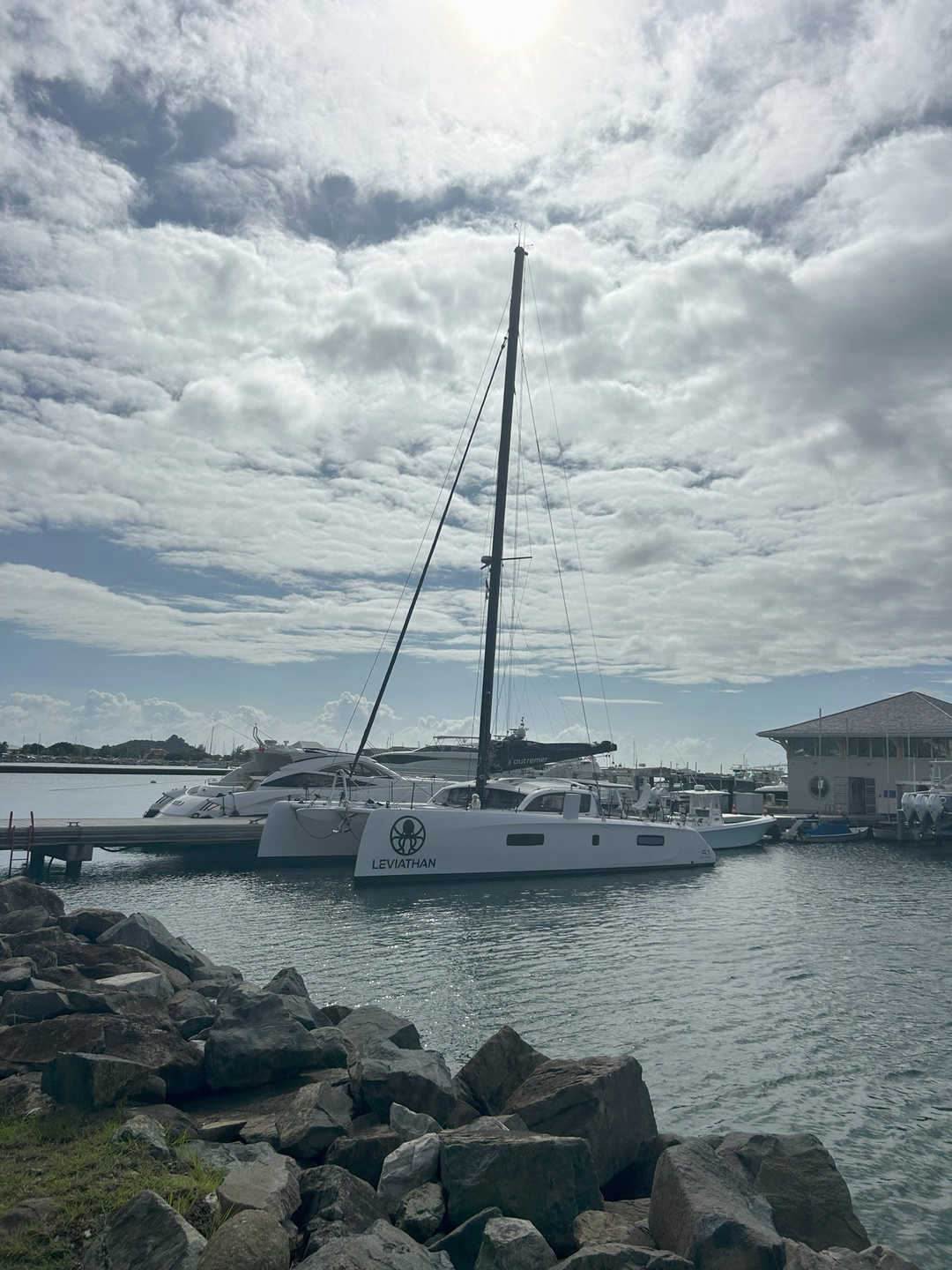
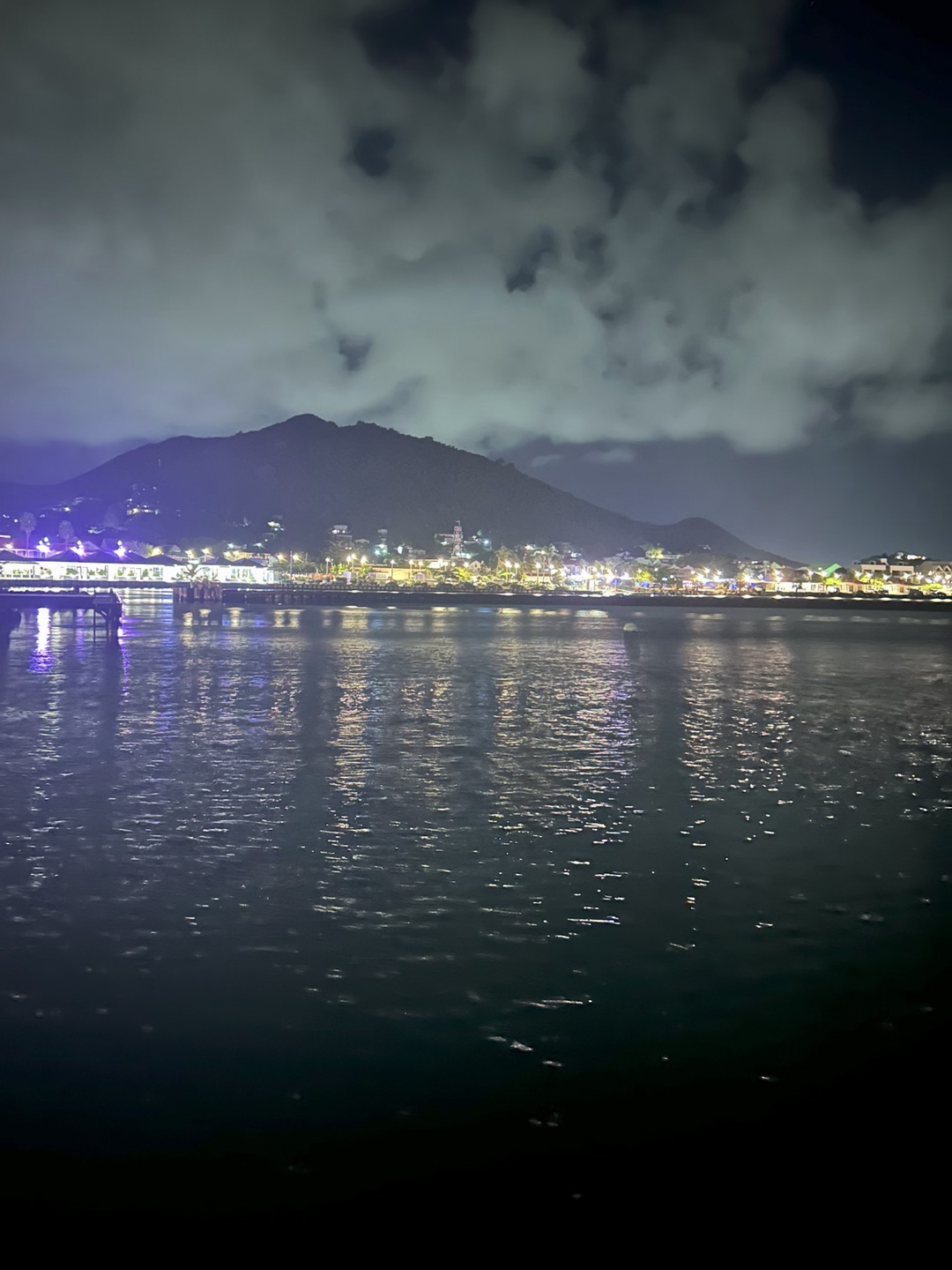
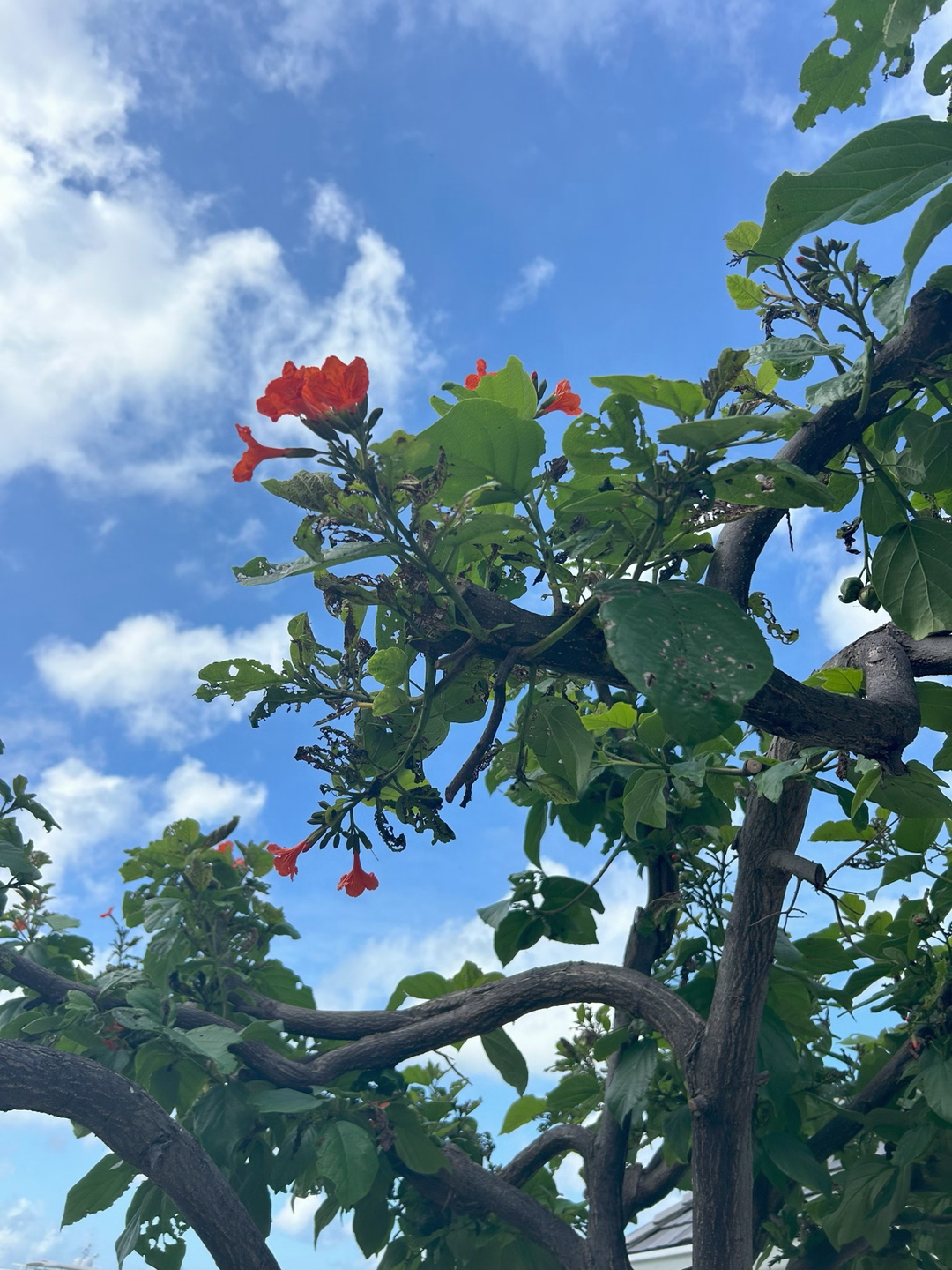
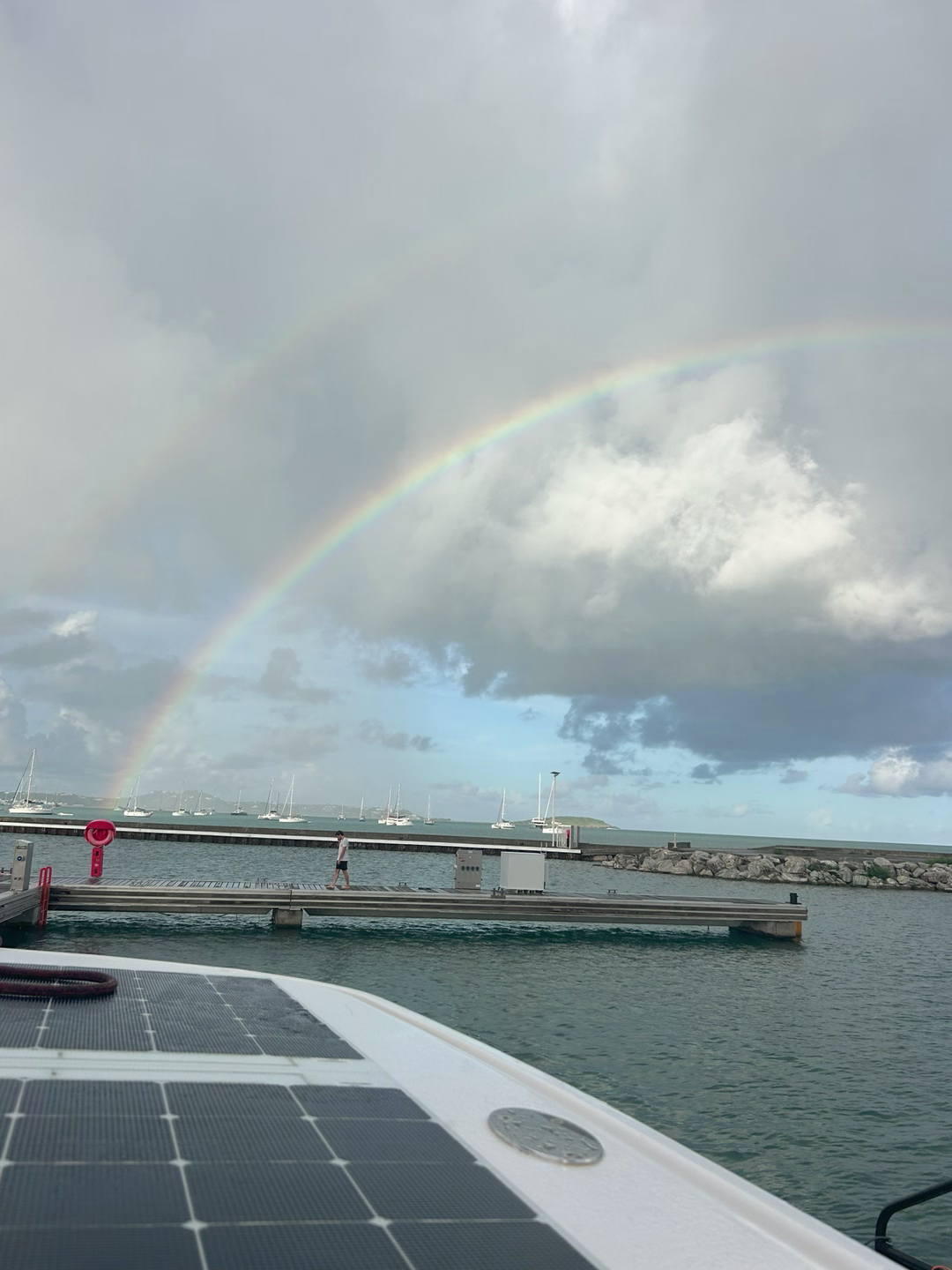
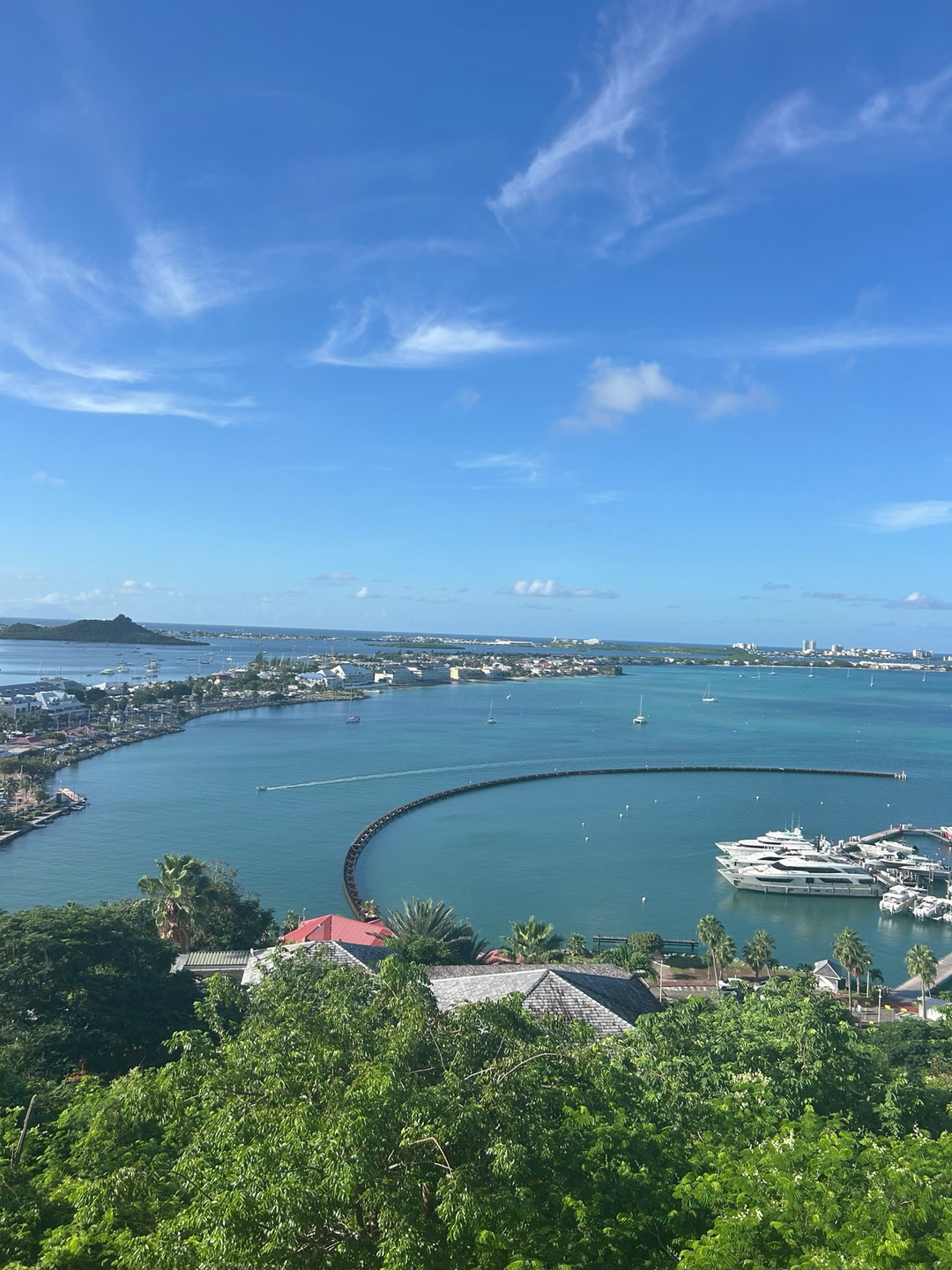

April 14, 2024
Finish in St. Lucia
Our lap of the globe is officially complete. We started the World ARC Rally some 15 months ago in Rodney Bay Marina along with 25 other yachts. Only 14 of the original group finished with us yesterday along with four others that joined along the way.
We arrived in St. Lucia from Bequia following a brisk night sail and initially moored at Marigot Bay, a charming and well-protected harbor. All the rally participants reunited here and enjoyed a few lazy days before our final leg. Yesterday, we assembled in reverse order of boat size and departed Marigot Bay in single file. We paraded along the coast (with a circle in Castries Bay) and crossed the finish line ten miles later in Rodney Bay. At this point we experienced a rush of memories. After over a year of unfamiliar territory, we finally recognized the coastline! And we recalled our dubious start to the rally when we encountered a steering failure and needed to start one day late. As we pulled into the marina and secured our mooring lines, we were overcome by euphoria. We actually did it! Yong and I and our intrepid companions Jake and Pogo have circled our planet Earth. Amazing. And we did it along with many new friends. What a great experience! Our joy was obvious to any observers who witnessed the spectacle of our dockside party. And I must admit that I was suddenly consumed by a desire to do it again! Yong and the dogs were not stricken by this malady as yet, but I am hopeful that this disorder might be contagious. We will take a break and then decide what the future will hold for us. For now, we have some boat work scheduled next week on the adjacent island of Martinique and then a return to Grenada where the boat will reside for hurricane season while we recover in the States. We are currently thinking about spending a season in the Caribbean, but beyond that, we are still uncertain. It’s hard to make predictions, especially about the future.








April 7, 2024
St. Vincent and the Grenadines
St. Vincent and the Grenadines (SVG) is an island nation in the southern Caribbean comprising 33 islands, only a handful of which are inhabited (St. Vincent, Bequia, Mustique, Canouan, Union, Palm, Petite St. Vincent, Mayreau, and Young Islands). The entire population is only 110,000. Previously part of British West Indies, SVG achieved independence in 1979. The islands are volcanic in origin and are quite mountainous and heavily forested. The islands are scattered in a chain less than 40 miles in length from north to south. As a result, each island can be seen by its neighbors and the sailing is easy with no complex navigation required.
We are fortunate that Rob, one of our rally staff, will be joining us as we work our way up to our final stop in St. Lucia. The astute reader might recall that Rob also joined us on our sail from Bora Bora to Niue. Leaving Grenada, we first headed to Union Island where we checked into the country. Next door lies the Tobago Cays which is an archipelago of small isles surrounded by stunningly beautiful coral reefs. We spent several days here enjoying the snorkeling, swimming, and dining on grilled lobster on the beach.









Next, we moved to Mayreau and then Canouan. Each island in SVG has its own distinct personality, and we are enjoying getting to know their quirks. We continued working our way north, and our next stop was Bequia (pronounced “Beck-way”). We arrived on Good Friday, and nearly everything was closed except for a few restaurants (and no alcohol!). Things were much livelier on Saturday and we enjoyed a taxi tour of the island. We were interested to learn that whaling is still permitted on Bequia. They have an allowance of four per year (although they do not always catch one) but are required to use traditional techniques. There is a whaling museum that we visited later and learned all about this nearly extinct profession.














We decided to backtrack a bit to check out the island of Mustique. This is a private island that became famous as the getaway for famous celebrities like Mick Jagger. Riff-raff like us are allowed to visit the island, but our access is limited to the nearby shore area, which fortunately has abundant snorkeling, several shops and a wonderful beach bar/restaurant. After a few days, we returned to Bequia and welcomed our fellow rally boats who began to arrive en masse.








Bequia is the quintessential Caribbean island for visiting sailing yachts. It is beautiful, colorful, peaceful, unspoiled, and full of incredibly friendly people. The scuba diving is excellent (the best I have experience since Indonesia). We have had a great time. Tomorrow, we leave for St. Lucia, the last stop in our sailing odyssey.




March 14, 2024
Carriacou
Carriacou is a small island 30 miles north of Grenada. It belongs to Grenada, and it has been our playground for the last ten days. The anchorages and moorings are idyllic. There is a beachfront restaurant across from Sandy Island which displays hand-painted signs from visiting yachts. We asked the owners if we could contribute, and we were given a wooden plank which we subsequently decorated. We are now immortal, as our humble sign has made it to the hall of fame next to Renegade.


















We made a quick trip back to Grenada where we picked up our Aussie friends Walt and Caroline, then returned to revisit our favorite haunts in Carriacou. Soon we will head back to Grenada to reunite with the rest of our rally.



February 27, 2024
Landfall in Grenada
We have returned to the Caribbean. We left French Guiana four days ago and crossed over from the Atlantic Ocean to the Caribbean Sea as we dodged oil rigs between the islands of Trinidad and Togabo. Our last big passage is complete! The sailing was fantastic, and we set our personal best 24-hour mileage record of 263nm. We have arrived in Port Louis Marina in St. George’s Grenada.






Grenada is a beautiful island in the southern Caribbean best known for its spice production (especially nutmeg). Originally under French then British colonial rule, Grenada achieved independence in 1974 and just celebrated its 50th anniversary in February. The early period of self-government was turbulent. In 1979, a Marxist regime overthrew the existing government and established ties with Cuba, Nicaragua, and the old Soviet Union. In 1983, the military arrested then executed the Prime Minister in opposition to the will of the populace. This raised the concern of nearby Caribbean states as well as the United States and led to the invasion of Grenada by the US. Order was restored, US troops withdrew, and democratic elections were re-established.
Enough history. We will get some boat work done and then explore the island.
February 23, 2024
The Butterfly Effect
You’ve probably heard of the butterfly effect. A butterfly flaps its wings in Capistrano, and this causes a tropical storm in Jamaica. In mathematical terms, many complex systems display chaotic behavior due to extreme sensitivity to initial conditions. In other words, small initial perturbations lead to large, divergent downstream effects, and the longer the interval, the greater the effect. What does this have to do with sailing? Well, the obvious answer is the weather. All modern sailors religiously consult their favorite weather prediction software. We want to know the wind speed, wind direction, wave and swell characteristics, and likelihood of storms. After sailing around the world, I can avow that the weather is very difficult to predict. Yogi Berra was correct: it is difficult to make predictions, especially about the future. And I would add: especially about the weather.
The butterfly effect is also occasionally applied to our life experiences. Small decisions, mishaps, or random events can definitely have enormous impacts on human lives. The big difference for humanity is free will. Given enough energy input, complex systems can be shaped by intention. We didn’t randomly end up on a sailboat.
Anyway, I tend to get philosophical on long passages. We are on our last big crossing from Brazil to the Caribbean. We have anchored off the coast of French Guiana in the Iles du Salut. This is our last stop before we reach the island of Grenada. Some of you may have read the book Papillon (or seen the original film or the recent remake). The story describes the life of a French safecracker nicknamed Papillon who is imprisoned in the penal colony located in these very islands. He eventually escapes from Devils Island (we are on the adjacent Ile Royale). By the way, Papillon is French for Butterfly.





February 15, 2024
Fernando de Noronha
Fernando de Noronha is a small archipelago with one main island located some 200 miles offshore from the northeastern shoulder of the Brazilian mainland. Discovered and colonized by the Portuguese in the 1500s, Fernando has played many roles over the years including providing an important waypoint for trade, housing a penal colony, and of course hosting military outposts. Charles Darwin paid a visit during his journey on the Beagle. The famous pirate “Black Bart” Bartholomew Roberts also spent time here during his reign as the most successful pirate of his era (he is also the likely inspiration for the “Dread Pirate Roberts” from the film Princess Bride). Now Fernando is a tourist mecca and a UNESCO World Heritage site due to its ecological importance.
We had heard that the island was the most beautiful spot in Brazil, so along with another rally boat Matilda, we altered our course to make a stop. The rest of the rally fleet went to Salvador, Brazil where there is a particularly festive celebration of Carnival. We were not interested in wall-to-wall partygoers, hence we set our sights on Fernando.
We arrived at night, as usual for Leviathan. I may have made this observation before, but it bears repeating: why don’t we adjust our speed to arrive during daylight? To answer this, I must invoke Yong’s first rule of sailing: When you have wind, you take it! So, we take the wind as it comes. You would think that statistically we would have even odds for a daylight arrival, but our experience has shown that we have a better than 80% chance of a nighttime arrival. Anyway, this arrival was particularly challenging. There was a new moon (i.e., no moonlight) and we had to maneuver through a minefield of boats which occupied a mooring field positioned outside of the anchorage. Yong stood at the bow with a spotlight and guided us as we crept along, weaving our way through the maze. Eventually, we anchored safely and had a peaceful night.




The following morning, we were delighted to learn that the anchorage was home to scores of spinner dolphins. They entertained us daily for the duration of our visit, swimming, jumping, and spinning in mid-air alongside us at anchor or escorting us to shore in our dinghy. Amazing. Combined with the beautiful clear, blue water, Fernando’s Bay of San Antonio has become our favorite anchorage ever.
Along with the crew of GTFO, we completed formalities ashore easily with the help of the Port Captain. Next stop, you guessed it: the first available bar, where we enjoyed Brazil’s national cocktail - the caipirinha, made from sugar cane, lime juice, and a light Brazilian rum called cachaca. It is pretty great. Similar to a margarita. After a couple of rounds, we explored the island. Fernando is small, only around seven square miles. There is only one major road. No taxis were around, so we hiked uphill to the “downtown” area. We found a small shopping area and numerous hostels, boutique hotels, bars, and restaurants. A large stage in the town square had been erected and decorated for Carnival (unfortunately, we never attended the evening festivities, but we heard it was quite lively). We rode the bus back to the port and returned to Leviathan.






Matilda arrived later in the evening, and GTFO elected to leave for the Caribbean. Along with Matt and Fiona of Matilda, we rented dune buggies for a couple days, and this allowed us to explore the island’s national parks along bumpy unpaved paths. This was incredibly fun. Fiona and I went scuba diving the next two days. Overall, our week in Fernando passed quickly, but it turned out that we stayed one day too long. A nasty ocean swell overtook our anchorage, requiring us to re-anchor to avoid breaking waves. Our favorite anchorage transformed into a vertigo-inducing rolling nightmare. After a sleepless night, I woke up with my head spinning. We speedily checked out with the Port Captain and bolted from Fernando with fond memories.













Matilda decided to join the rest of the rally on the Brazilian mainland. This would require backtracking some 250 miles (500 miles round trip). I have come down with a serious case of get-there-itis. There is only one known cure: we must proceed onward to Grenada in the southern Caribbean, with a possible stop at Iles du Salut in French Guiana.



February 3, 2024
Ascension Island
Ascension Island is an odd place. We are accustomed to remote, sparsely populated, volcanic islands, but Ascension is quite unique in that there are no permanent residents. The Island belongs to Great Britain, but it is shared with the US Military (and others). Ascension houses an RAF base, a US Space Force base, and ground tracking stations for GPS and the European Space Agency (and formerly for NASA). There is no “right of abode” on the island. Adults must have a contract of employment (or be a partner of one who does) to reside on the island. There is no tourism. We required special permission to visit. There is one harbor (Clarence Bay) at Georgetown. We arrived at night (as usual) and dropped anchor. The next morning, we could identify a long yellow floating pipeline adjacent to our anchorage. It appeared harmless, so we proceeded to town by dinghy to complete entry formalities. Ashore, we encountered various harbor facilities, but the town consisted of a small grocery store, a post office, a police station, and one bar (but no restaurants). The streets were empty and the town appeared dead, as everyone is at work.









When we returned to Leviathan, we were shocked to see that the wind had shifted and the floating pipeline was now banging into the hull of our boat! We could not raise the anchor because it now lay 50 meters beyond this barrier. In order to mitigate damage, we cut the bridle on our anchor chain and let out all we had. Meanwhile, we called Port Control for assistance. A boat promptly arrived on the scene and dragged the pipeline upwind away from us. This allowed us to raise our anchor and re-deploy it at a safe location. We escaped with only a few scratches on the hull. Needless to say, it could have been much worse. Lesson learned.
Getting to shore is interesting, and I should describe this process in some detail. When we first arrived, we encountered a cement wall exposed to the prevailing surge. We tied our dinghy to a ladder and jumped ashore. This was less than ideal, because our dinghy was battered against the wall with every wave. Oh well, we completed our business, returned to our dinghy, and made it back to Leviathan intact. We subsequently found out that there is another method approved by Port Control: we drop one person off at the wall and then tie off to an adjacent mooring line. Next, we scramble from our dinghy to a wooden yellow row boat which is also attached to the mooring line by a block (pulley) with lines leading to shore. The shore person then pulls the yellow boat to the wall, thereby allowing the remaining passenger ashore. The yellow boat is then repositioned, ready for the next shuttle.









Our friends on Matilda and GTFO arrived, and we made plans to go to the Volcano Club for dinner. The Volcano club is a bar/restaurant located on the Space Force base. We got a ride with some local Air Force personnel to the club which was about 10 minutes away. There was no apparent security on the base. We enjoyed pizza, burgers, and cold beer. We met Herby, a local guy who runs the Ascension Island Sea and Land Rescue team. After dinner, he drove us to a beautiful sandy beach near our anchorage, and we watched sea turtles crawl from the ocean to lay eggs in the sand. Amazing.
The next day we spent refilling our diesel tanks (this was quite an ordeal, but I will not elaborate). We are now preparing for our final major ocean passage to Brazil. We are again deviating a bit from our rally schedule. We are not too excited about the Carnival crowds, so we are skipping Salvador. Instead, we will head for the Brazilian island of Fernando de Noronha. It is supposed to be spectacular. Only 1100 nautical miles away!


January 24, 2024
St. Helena
St. Helena is a tiny island in the South Atlantic between Africa and Brazil. It was discovered by the Portuguese and became an important stopover for ships on long ocean passages due to the availability of fresh water. Initially uninhabited, the island was eventually colonized by the British, and it remains a dependency of Great Britain. St. Helena is most famous as the second site of exile of Napoleon Bonaparte and the site of his death. Oddly enough, it is one of the locations on our trip that I have been most excited to visit.
After a smooth sail from Walvis Bay, we arrived in James Bay in the evening and anchored next to fellow rally boat Renegade who serenaded us with rock and roll as we found a secure spot next to a steep cliff. The following morning, we took the local water taxi to shore to complete entry formalities. The Jamestown dock is unprotected and subject to a vicious surge; hence, use of our own dinghies is discouraged. Fortunately, the taxi is available and cheap.








Jamestown is a small town full of pubs, shops, and restaurants. It is built in a rocky, steep-walled valley, and the most striking feature of the skyline is Jacob’s Ladder, a staircase of 699 steps leading to the firmament. I had read about these steps and was anxious to give them a try.


First, we took a taxi tour of the island. Although our initial impression of St. Helena is that of a rocky wasteland, once we ascend out of the valley, we enter a lush tropical ecosystem. Our first stop was Longwood. This was the residence of Napoleon to which he was banished by the British following his loss at Waterloo. He lived here from 1815 until his death in 1821. Interestingly, the French government subsequently bought the property and continue to manage it under consular authority. The accommodations were quite luxurious and included a billiard table in the main salon.









We then visited the tomb of Napoleon which is located in a particularly verdant and scenic nearby valley. As per his wishes, Napoleon’s remains were later relocated to Paris in 1840.





Our next stop was the Governor’s mansion, where we had the opportunity to meet Jonathan. No, that is not the governor. Jonathan is the world’s oldest land animal, a Seychelles tortoise that was hatched in 1832 and brought to the island with three other tortoises in 1882. He lives with his colleagues on the grounds of the governor’s mansion. He looks pretty good for 192 years of age. The tour finished at the top of Jacob’s Ladder, and I had my first opportunity to walk down. Not too bad.







The following day, we refilled our diesel tanks, and then had lunch in town. This gave me an opportunity to tackle Jacob’s Ladder again; this time, a full round trip. I’m sure I will feel the pain tomorrow. You definitely don’t want to stumble. It is a long way down.

On Wednesday, I took a tour boat to swim with whale sharks which frequent the area. Unfortunately, they did not make an appearance for us. A member of the royal family, the Duke of Edinburgh made an official visit to the island at this time, and Yong was in town to hear his speech. Reportedly, he also went for a whale shark tour the following day (the day we left the island), and we heard radio reports that his boat’s engine stalled, and he had to be towed back to town!


St. Helena was a unique place to visit. Until recently, the only way to visit was by boat. An airport has been constructed, but it sees very little traffic, and due to weather conditions, flights are often canceled. We are very happy to have stopped here. The residents could not have been friendlier. We must be moving on, however. Our next stop: Ascension Island.






January 19, 2024
Another Milestone
We achieved another milestone this morning: we crossed the earth’s Prime Meridian and re-entered the West! This should come as quite a blow to all the flat-earthers out there. We encircled the globe and failed to encounter any cliffs, edges, or waterfalls. Of course, the instrument and navigational companies may be in on the conspiracy. I will have to look into that. For now, I am confident that we live on a spherical orb.

January 16, 2024
An Exclusive Club
An extraordinary thing happened late last night. We became circumnavigators. Simply stated, we have sailed across all 360 degrees of longitude from 9 degrees east in Corsica in the Mediterranean to 9 degrees east in the South Atlantic between Namibia and St. Helena. I have heard that more people have summited Mt. Everest than have performed a sailing circumnavigation. There are some rules for the club. You can’t simply stand at one of the poles and in a few steps cross all the lines of longitude. Technically, you must sail in a rough approximation of a great circle (a circle around the earth whose center includes the center of the earth) and you must cross the equator. Check, and check. Pretty cool. Next stop: St. Helena.

January 13, 2024
Walvis Bay, Namibia
We enjoyed a pleasant sail from Cape Town to Walvis Bay. With Scott on board, our night shifts are much more tolerable. The passage was around 800 nautical miles and we anchored in Walvis Bay on the fourth day. As we sailed along the coast, we were entranced by the endless sand dunes and numerous seals. Namibia is home to the oldest desert in the world, and one of the driest. Namibia was originally colonized by the Germans. It came under the administration of South Africa following World War I and achieved independence in 1990. Nonetheless, Namibia retains much German culture as reflected in the language, architecture, and food. Namibia is an excellent place to visit as it is one of the most stable of the sub-Saharan nations and is very safe.







Following entry formalities, we toured the nearby sand dunes with a guide in a Toyota 4Runner. The giant dunes embrace the coast and our vehicle rode the terrain like a squishy roller coaster.










Scott rented a car, and we visited the nearby town of Swakopmund where we shopped and dined at a local German restaurant (schnitzel, sauerkraut, and strudel, of course). The architecture in the area is surprisingly modern and upscale. The local economy seems primarily driven by tourism, but clearly someone is building (and buying) expensive beach homes. Aside from tourism, the Namibian economy is driven by fishing, sea salt production, and mining (copper, gold, uranium, sulfur, etc.).




Our stay in Namibia is short, and we are starting to plan our next big passage: crossing the South Atlantic to Brazil, with a stopover on the island of St. Helena. We bid adieu to Scott, and hope to see him again in the Caribbean.
January 5, 2024
Cape Town Wrap-up
Yes, I know. I have been slacking on the blog. I took a little break, but I am back at it now! Before I proceed, I should present a disclaimer: we loved Cape Town, and we believe it should be on everyone’s bucket list for travel. Although Yong returned to the States for a month to see family, I stayed on Leviathan with the dogs and spent a total of about 7 weeks in Cape Town. The first two weeks were occupied with various boat chores. I had a long list of to-dos, and I accomplished everything that was under my control. After that, I was able to enjoy most of the activities of the Western Cape.


Here is a list of my favorite things in Cape Town:
1) Hiking up Table Mountain. Walter (Fat Kat II) and I made our way up the Platteklip Gorge trail from the lower cable car base station to the top of Table Mountain. This was a challenging hike, and we were rewarded by spectacular 360-degree views.











2) The double-decker red tour bus. This is an easy way to see the city and its environs. You pay a low fee for the day and can hop on and hop off carte blanche.


3) The V&A Waterfront Area. A short walk from our marina allows access to some 80 restaurants, a large shopping mall, and innumerable bars and shops in the V&A Waterfront. There is excellent security, so it is very safe, even at night. The place is usually packed, but it is always easy to walk into nearly any restaurant without reservations.

4) The wine country. The Western Cape is blessed with a Mediterranean climate that is conducive to the cultivation of many varietals of grapes. The region is best known for its Pinotage which is a hybrid of Pinot Noir and Hermitage. There are scores of excellent wineries producing vintages which rival the best of California and Europe. Even if you are not a big wine drinker, a tour of the wine country makes for great sight-seeing.





5) The Groote Schuur Hospital Museum. Many of you may know that native South African Christian Barnard performed the first human-to-human heart transplant in 1967 at Groote Schuur Hospital. We toured the museum which celebrates the technical accomplishment and recognizes the sacrifice of the family of the young donor. We were particularly lucky to have the actual perfusionist from that landmark case as our tour guide.




6) Cape Point Tour. Most people have heard of the Cape of Good Hope and assume that it is the southern tip of the African continent. This is incorrect. That distinction belongs to Cape Agulhas. Nonetheless, the Cape of Good Hope is a major seafaring landmark and represents the tip of the peninsula upon which Cape Town rests. The Cape is the home for baboons, ostriches, and a colony of penguins. Most importantly for SpongeBob fans, the Cape of Good Hope is the home of the Flying Dutchman, the famous ghost ship.
















7) Rugby. In early December, an international rugby-sevens tournament was held at the stadium next to the waterfront. We had a great time attending the games. I am still a little unsure of the rules, but the general flow of the game is easy to follow. The game is fast-moving and quick, with two seven-minute halves per game.


8) The Oranjezicht City Farm Market. This is one of the best markets we have seen in our travels. It is open on weekend days and Wednesday nights, and it is located next to the stadium. They have a little bit of everything, and best of all, it is very dog friendly.


I realize this sounds like a travel brochure, but I encourage everyone to consider Cape Town. Moreover, the best time to visit is probably December, which is summer in the Southern Hemisphere. Anyway, all good things must come to an end, and we must depart Cape Town for Namibia. Fortunately for us, our friend and frequent transient crew Scott will be joining us on the next leg!
Older Posts